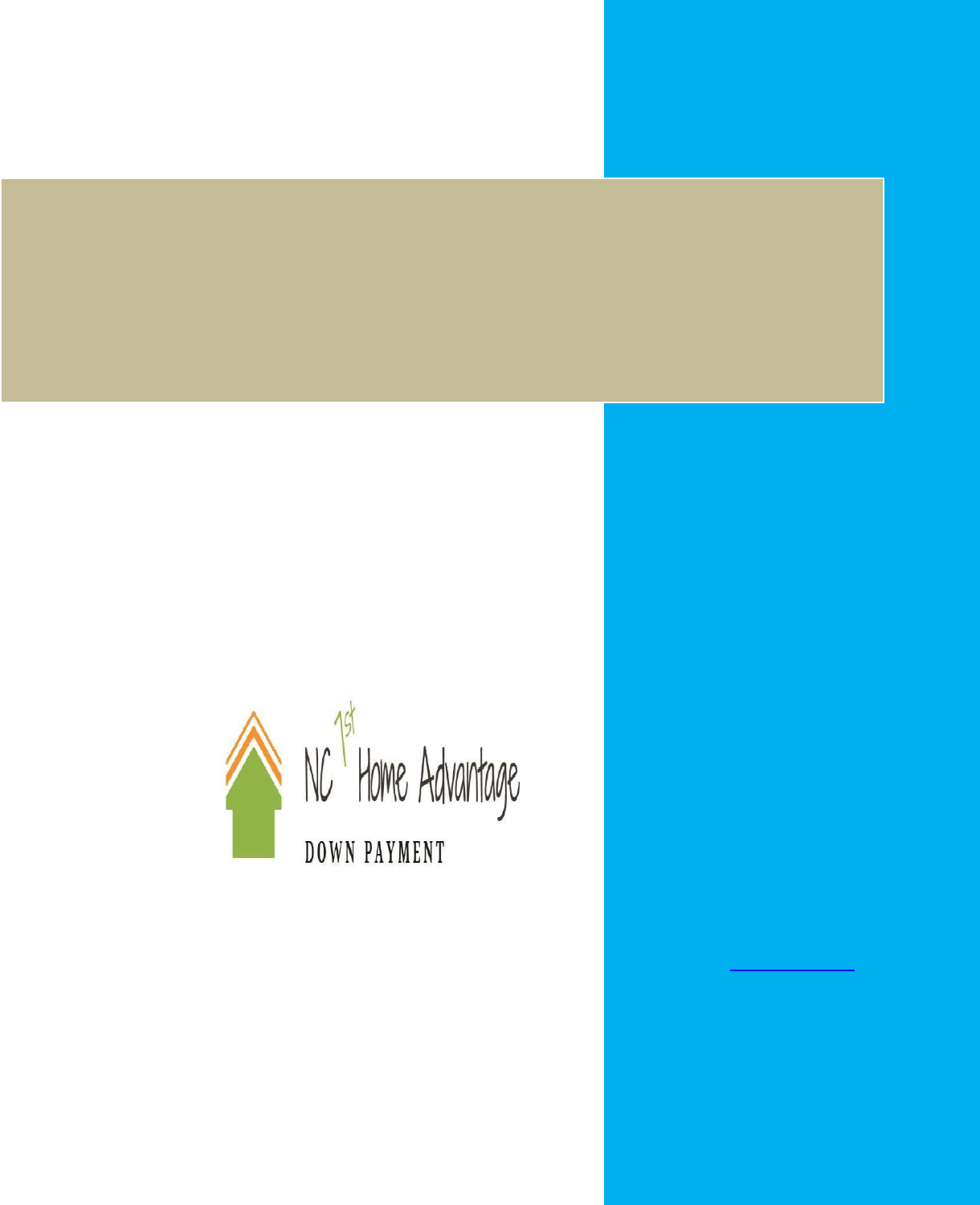
NC 1
st
Home Advantage
Down
Payment
TM
Guide
($8,000 DPA)
North Carolina Housing
Financing Agency
3508 Bush Street
Raleigh, NC 27609-7509
(919) 877-5700
www.nchfa.com

5 | P a g e R e v 1 2 / 2 0 2 1
Contents
Section 1: Introduction .................................................................................................................................... 9
1.1
About NCHFA ................................................................................................................................... 9
1.2
Purpose ............................................................................................................................................ 9
1.3
Program Contact Information ....................................................................................................... 11
Section 2: Definitions ..................................................................................................................................... 12
Section 3: Lender Participation Guidelines .................................................................................................... 17
3.1
Lender Participation Guidelines .................................................................................................... 17
3.2
Annual Recertification Requirements ........................................................................................... 19
3.3
Online Lender Services System (OLS)............................................................................................ 19
3.4
Record Retention ........................................................................................................................... 20
3.5
Master Servicer Contact Information ........................................................................................... 20
3.6
Lender Compensation ................................................................................................................... 21
3.7
Fraud / Lender Violations / Lender Self-Reporting ...................................................................... 21
Section 4: Loan Eligibility Guidelines ............................................................................................................. 22
4.1
NC 1
st
Home Advantage Down Payment™ Loan Program Overview ......................................... 22
4.2
Down Payment Assistance (DPA) – $8,000 Overview .................................................................. 23
4.3
Eligible Loan Types ........................................................................................................................ 23
4.4
Ineligible Loans / Loan Types ........................................................................................................ 25
4.5
Mortgage Insurance Coverage Requirements .............................................................................. 25
4.6
Escrow Holdbacks and Repairs ...................................................................................................... 26
4.7
Repurchase Conditions .................................................................................................................. 26
4.8
Minimum Borrower Investment / Cash Back Limits .................................................................... 27
4.9
Assets ............................................................................................................................................. 27
4.10
Gift Funds ....................................................................................................................................... 27
4.11
Lien Position Policy ........................................................................................................................ 27
4.12
Principal Reduction Policy ............................................................................................................. 27
4.13
Eligibility with Other DPA Options ................................................................................................ 28
4.14
Down Payment Assistance (DPA) – General Guidelines .............................................................. 28
4.15
Funding of the DPA by Participating Lender ................................................................................. 29

6 | P a g e R e v 1 2 / 2 0 2 1
4.16
Loan Terms and Fees ..................................................................................................................... 29
4.17
Subordination Policy for Refinances (DPA) .................................................................................. 30
4.18
Special High-Needs Rural Closing Cost Assistance Options (Fannie Mae loans only) ................... 31
Section 5: Borrower Eligibility Guidelines .................................................................................................... 32
5.1
Borrower Requirements ................................................................................................................. 32
5.2
Pre-Purchase Education Requirement for First-Time Homebuyers ............................................... 33
5.3
Income Limits ................................................................................................................................. 33
5.4
Section 8 Vouchers......................................................................................................................... 34
5.5
Ratios ............................................................................................................................................. 34
5.6
Credit Score Requirements ............................................................................................................ 34
5.7
Collections Policy / Liens / Judgments / Student Loans ................................................................. 35
5.8
Bankruptcy Policy ........................................................................................................................... 35
5.9
Short Sales/Foreclosures ................................................................................................................ 35
5.10
Flip Properties ................................................................................................................................ 35
Section 6: Property Eligibility Guidelines (NC 1st Home Advantage $8,000 DPA only) ................................. 37
6.1
Property Requirements .................................................................................................................. 37
6.2
Repairs and Escrows for Completion ............................................................................................. 38
6.3
Owning More Than One Home ...................................................................................................... 38
6.4
Property Appraisal Condition Requirements ................................................................................. 38
6.5
Maximum Acreage ......................................................................................................................... 39
6.6
Business Use of Property ............................................................................................................... 39
Section 7: Loan Origination and Underwriting Steps ..................................................................................... 41
7.1
General ........................................................................................................................................... 41
7.2
NCHFA Normal Review Time .......................................................................................................... 41
7.3
Loan Origination ............................................................................................................................. 41
7.4
Pre-Approval Forms/Documents Required .................................................................................... 43
7.5
NCHFA Forms and Documents Required ....................................................................................... 43
7.6
Loan Closing After NCHFA Issues Commitment ............................................................................. 45
7.7
Interest Credit ................................................................................................................................ 46
7.8
Interim Servicing ............................................................................................................................ 46
7.9
Hazard/Flood Insurance Requirements ........................................................................................ 46
7.10
Electronic Signatures ...................................................................................................................... 47

7 | P a g e R e v 1 2 / 2 0 2 1
7.11
Power of Attorney (POA) Guidelines.............................................................................................. 47
Section 8: Income Eligibility Guideline ........................................................................................................... 50
8.1
Income Limits ................................................................................................................................. 50
8.2
Tax Returns/Transcripts and Program Compliance ...................................................................... 50
8.3
If Federal Income Tax Returns/Transcripts Are Not Available .................................................... 51
8.4
Income Calculation for Compliance Underwriting ....................................................................... 52
8.5
Recertification of Income .............................................................................................................. 58
8.6
Compliance Certification for Non-Borrower Occupant ................................................................ 58
8.7
Separation Agreement and/or Divorce Decrees; Free-Trader Agreement ................................. 58
Section 9: Rate Extensions, Changes to Lock-In and Loan Withdrawal Guidelines ....................................... 60
9.1
Late File Submission ...................................................................................................................... 60
9.2
Interest Rate Lock-In Policy ........................................................................................................... 61
9.3
Requesting an Extension ............................................................................................................... 62
9.4
Changes to a Lock-In ...................................................................................................................... 63
9.5
Withdrawal of Loan Locks ............................................................................................................. 63
9.6
Duplicate Locks or Borrowers ....................................................................................................... 63
9.7
Lock Expiration .............................................................................................................................. 63
9.8
Re-locking a Cancelled/Withdrawn Loan ..................................................................................... 63
Section 10: Post-Closing Processing Steps ..................................................................................................... 64
10.1
General .......................................................................................................................................... 64
10.2
Closing of DPAs in NCHFA’s Name ................................................................................................ 67
10.3
Signatures on the DOT and Promissory Note ............................................................................... 67
10.4
Uploading the Closing Package (Required to BOTH NCHFA and ServiSolutions) ........................ 67
10.5
Loan Purchase Review and Funding ............................................................................................. 68
10.6
Shipping the Final Documents to Master Servicer ....................................................................... 69
10.7
Closing Date / Funding Date / Recording Date ............................................................................. 70
Section 11: IRS Recapture Tax Provisions and Disclosures – Applicable to NC 1
st
Home Advantage $8,00071
11.1
Summary of Recapture Requirements .......................................................................................... 71
11.2
The Basics of Recapture ................................................................................................................ 72
11.3
Recapture Provision ...................................................................................................................... 72
11.4
Recapture Formula ........................................................................................................................ 74
11.5
Recapture Examples ...................................................................................................................... 76

8 | P a g e R e v 1 2 / 2 0 2 1
11.6
Federal Subsidized Amount and Family Income Limits ................................................................ 77
11.7
Recapture Calculation ................................................................................................................... 79
11.8
Recapture Threshold Income ........................................................................................................ 81
11.9
Recapture Provision Federal Family Income Limits Table (Example) .......................................... 82
11.10
Notice to Mortgagors of Potential Recapture of Federal Subsidy ............................................... 84
11.11
Notice to Mortgagors of Maximum Recapture Tax and Method to Compute Recapture Tax on
Sale of Home .................................................................................................................................. 85
Section 12: FAQ and $8,000 DPA Program Summary .................................................................................... 89
12.1
Preliminary Lender Participation Guidelines ................................................................................ 89
12.2
Eligibility Criteria ........................................................................................................................... 89
12.3
Down Payment Assistance ($8,000 DPA) Offered Under NC 1
st
Home Advantage Down
Payment Mortgage™ ..................................................................................................................... 90
12.4
Closing/Purchase Guidelines ......................................................................................................... 91
12.5
Operations Process ........................................................................................................................ 91
12.6
Documentation Matrix - NC Home Advantage Mortgage™ & MCC-Assisted Loans ................... 92
12.7
Frequently Asked Questions ......................................................................................................... 93

9 | P a g e R e v 1 2 / 2 0 2 1
Section 1: Introduction
1.1
About NCHFA
NCHFA was created in 1973 by North Carolina General Statutes Chapter 122-A as a
corporate body with responsibility to provide affordable housing opportunities for low- and
moderate-income North Carolina households.
NCHFA has office hours between 8:00 a.m. and 5:00 p.m., Monday through Friday. The
telephone number is (919) 877-5700. The mailing address for NCHFA is the following:
North Carolina Housing Finance Agency
Home Ownership Lending Group
P.O. Box 28066
Raleigh, North Carolina 27611-8066
or
North Carolina Housing Finance Agency
Home Ownership Lending Group
3508 Bush Street
Raleigh, North Carolina 27609
This Program Guide and other resource materials may be downloaded from the NCHFA
website at www.nchfa.com. Marketing brochures and flyers may be available from time to
time and will be provided to lenders when available.
1.2
Purpose
The purpose of the NC 1
st
Home Advantage Down Payment™ Program Guide is to provide
a basic overview of the key operational and program details of the $8,000 NC 1
st
Home
Advantage Down Payment Mortgage™ and associated programs regarding borrower and
property eligibility, credit, underwriting, and closing procedures. Lenders must review and
understand all program requirements.

10 | P a g e R e v 1 2 / 2 0 2 1
This guide is not a substitute for lender training classes offered by NCHFA on a recurring
basis for the benefit of loan officers, operations personnel, and other mortgage staff.
NCHFA requires all participating lender personnel to attend one of these regular training
classes to get a more in-depth understanding of these programs. When changing employers,
OPS staff will be required to complete an on-line quiz.
Information contained in the NC 1
ST
Home Advantage Down Payment Mortgage™
Program Guide is subject to change. Revisions of or supplements to this Program Guide
may be made from time to time. To ensure prompt notification of any changes, it is the
lender’s responsibility to provide NCHFA with correct e-mail contact information.
Lenders wishing to use the Mortgage Credit Certificate (MCC) program alone or in
conjunction with the NC Home Advantage Mortgage™ program must refer to the MCC
Program Guide on the NCHFA website.
The Program Guide and Mortgage Origination Agreement signed by lender with Master
Servicer, together, govern the rules, policies, and procedures under this program. It is
lenders responsibility to understand these agreements in their entirety.

11 | P a g e R e v 1 2 / 2 0 2 1
1.3
Program Contact Information
Name
E-mail Address
Telephone
(919 area code)
Responsibilities
Donna Pruitt
Loan Production
Coordinator
dmpruitt@nchfa.com
877-5692
Underwriting and program questions
Rajeshree Patel-Howard
Underwriter
981-2688
Underwriting and program questions
Amber Smith
Underwriter
981-2660
Underwriting and program questions
Justin Cuevas
Underwriter
jacuevas@nchfa.com
981-4473
Underwriting and program questions
Lori Purser
Underwriter
981-2608
Underwriting and program questions
Nicole Wivell
Underwriter
nmwivell@nchfa.com
877-5677
Underwriting and program questions
Bill Hobbs
Lender Liasion
850-2779
Lender outreach, lender visits, support
Open
Training & Outreach
Coordinator
@nchfa.com
877-5683
Lender and realtor training classes
Jan Ott
MCC/Bond
Closing Specialist
877-5632
MCC and Bond closing documents
Rob Rusczak
Manager Home
Ownership Group
875-3777
Home Ownership Group Manager
Margie Rivera
Customer Service
mbrivera@nchfa.com
877-5710
Customer Service, Locks, User IDs,
New Lender Agreements
NCHFA displays current interest rates, loan types and other program information on the NCHFA
website. The NCHFA website address is www.nchfa.com. Participating lenders must use
NCHFA’s Online Lender Services System (OLS) to reserve loans and maintain their pipeline. It
can be accessed via https://www.nchfa.org/OLS/login.aspx.

12 | P a g e R e v 4 / 2 0 2 2
Section 2: Definitions
The following words are used in this Program Guide with these meanings:
ACH— Automated clearing house. Direct deposit transfer of funds from one bank to another.
APOR— Average Prime Offer Rate (APOR) is an index published by the Federal Reserve Board.
Award Letter— Letter related to the Down Payment Assistance (DPA) on FHA loans only,
provided with Commitment intended by NCHFA to satisfy the requirements of HUD Handbook
4000.1 II.A.4.d.ii (C).
AUS— Automated Underwriting System.
Co-borrower— An individual who is listed on loan documents and whose income and credit are
used to qualify for the loan. A co-borrower must meet the annual income limits and must have or
establish North Carolina residency within 60 days of closing.
Co-signer/Co-Signor— A non-occupant who is co-signing the Note for a particular loan. Not
allowed on the NC 1
st
Home Advantage program.
Commitment— Letter provided to lender via OLS upon NCHFA’s review and approval of pre-
closing documents. Under no circumstances may a lender close any NC Home Advantage
Mortgage™ loan until a Commitment has been issued. The Commitment to purchase the loan is
subject to the Master Servicer’s review of the closing documents for compliance with GNMA,
FNMA, or Freddie Mac regulatory guidelines in addition to any requirements of the Master
Servicer.
CPLP— Community Partners Loan Pool (“CPLP”), which offers a deferred 0% interest
subordinate lien administered by NCHFA, which can be used as down payment or for closing
costs.
Discount Points— A point equals 1% of the loan amount that is used to reduce the interest rate
on a mortgage below prevailing market rates. Discount points are not allowed.
DPA— Down payment assistance or subordinate financing offered by NCHFA of up to 5% of the
first mortgage total loan amount for FHA and VA loans, or up to 3% of the first mortgage loan
amount for conventional loans.
DTI— Debt-to-income ratio, which cannot exceed 45% for any NC Home Advantage
Mortgage™.

13 | P a g e R e v 4 / 2 0 2 2
Early Check— Fannie Mae’s service designed to assist lenders in identifying and correcting
potential eligibility and/or data issues early in the underwriting process and prior to loan delivery.
Electronic Signatures— Are acceptable on NCHFA non-security documents if they meet ESIGN
2
and UETA
federal standards. Also referred to as “E-signatures” or “e-signing.”
Eligible Property— A residence located in North Carolina that is eligible for insurance under
FHA, VA, USDA or conventional guidelines.
Existing Home— A dwelling unit that has been previously occupied.
Extension Fees— Loans may be assessed a 7-day, 15-day or 30-day extension fee at a cost of
0.0625%, 0.1875% or 0.25%, respectively. The extension fees are automatically deducted from
lender compensation at the time the Master Servicer purchases the loan from the lender.
Fannie Mae— Federal National Mortgage Association or FNMA.
Family Income — Defined as the gross annual income of the mortgagor(s) and any other person
who is expected to both live in the residence being financed and to be secondarily liable on the
mortgage. Family income would include the income of 1) the mortgagor(s), 2) the spouse of any
mortgagor(s), 3) titleholders residing in the subject property, and 4) any person who guarantees
the loan and intends to reside in the property.
First Time Home Buyer (FTHB)— A borrower (mortgagor), spouse, or titleholder residing in
property who has not had an ownership interest in a principal residence within three (3) years of
closing on the next home purchase.
FHA— The Federal Housing Administration.
FHA Insurance, FHA-Insured— Insurance provided by FHA for residential mortgages which
protects lenders against some or most of the losses that can occur when a borrower defaults on a
mortgage loan.
FNMA— Federal National Mortgage Association or “Fannie Mae.”
Freddie Mac — Federal Home Loan Mortgage Corporation
Free-Trader Agreement— Legal agreement between married spouses allowing each to purchase
or sell property without the consent of the other party. Must be recorded prior to closing.
GNMA— The Government National Mortgage Association or “Ginnie Mae.”
HUD— The United States Department of Housing and Urban Development.
Industry Standards— The guidelines published and used by FHA, VA, USDA or FNMA to
underwrite mortgage loans for acceptance by these entities.

14 | P a g e R e v 4 / 2 0 2 2
Legally Enforceable Obligation Letter— Letter related to the DPA for FHA loans provided with
Commitment intended by NCHFA to satisfy the requirements of HUD Handbook 4000.1
II.A.4.d.ii(C)
4
.
Lender— Any mortgage lender that is a Fannie Mae or Freddie Mac approved seller/servicer in
good standing (if originating conventional loans); is approved as an FHA mortgage originator (if
originating FHA loans); is approved as a VA mortgage originator (if originating VA loans); or is
approved as a USDA mortgage originator (if originating USDA loans).
Lock-In Expiration Date— Sixty (60) days past the date the loan is first locked in the NCHFA
OLS system. The loan must be purchased by the Master Servicer by the Lock-In Expiration Date
to avoid extension fees.
Manufactured Homes (Mobile Homes)— A manufactured building designed to be used as a
single-family dwelling unit which has been constructed and labeled indicating compliance with
the HUD administered National Manufactured Housing Construction and Safety Standards Act of
1974
5
. NCHFA will only accept manufactured housing that is new, never occupied, doublewide
or larger, and on a permanent foundation for FHA, VA and USDA loans. Manufactured Homes
are not eligible for conventional loans.
Marital Interest— An ownership interest generated solely through marriage to a person who
owned a property.
Mark-to-Market Fee— A fee applied on any loan purchased by the Master Servicer for which
the lock has expired. The mark-to-market fee is based on market conditions at the time the Master
Servicer purchases the loan from the lender. In no circumstance will the mark-to-market fee be
less than what an extension fee would have been had an extension been requested timely.
Master Servicer— Alabama Housing Finance Authority doing business as ServiSolutions
(“ServiSolutions”), the entity designated by NCHFA to purchase and service loans under the NC
Home Advantage Mortgage™ programs and who approves eligible Participating Lenders.
MI Company— Also known as PMI. A private mortgage insurance company providing mortgage
insurance on conventional loans. Only Arch, Essent, Genworth, MGIC, National MI, and Radian
are approved MI providers for NCHFA.
MCC— Mortgage Credit Certificate issued by NCHFA according to the rules and regulations
determined by the IRS.
Modular Home— A manufactured building designed to be used as a single-family dwelling unit
which has been constructed and labeled indicating compliance with the North Carolina State
Uniform Residential Building Code, Volume VII (Look for NC Validation Stamp).
Mortgage Origination Agreement (“Agreement”)— An agreement describing the mortgage
originator’s rights and responsibilities, made between the North Carolina Housing Finance
Agency, the Master Servicer and lenders participating in the NC Home Advantage Mortgage™

15 | P a g e R e v 4 / 2 0 2 2
program.
Mortgagor— The borrower(s) in a mortgage transaction. A person or persons who borrows
money to finance the purchase of real estate using the value of the property as collateral for the
loan and promises to repay the loan.
Mortgage Revenue Bonds—Tax-exempt financing authorized under IRS and Congressional
regulations and used to finance mortgage loans under the NC Home Advantage programs.
NCHFA— North Carolina Housing Finance Agency.
NC 1st Home Advantage Down Payment— Mortgage loans and/or down payment funded
through tax-exempt mortgage revenue bonds intended for first time homebuyers, qualifying
veterans or homebuyers purchasing a property in certain Qualified Census Tracts, who meet the
property acquisition and income limits set under rules established by the IRS and HUD.
New Construction— A dwelling unit that is new and/or never occupied.
Non-Borrowing Co-Occupant— Any person who is expected to occupy the property and is not
a mortgagor.
Online Lender Services System (OLS)— The system made available by NCHFA to its lending
partners for the lock and confirmation of NC Home Advantage Mortgage™ and MCC-assisted
loans.
PMI Company— Also known as MI Company. A private mortgage insurance company providing
mortgage insurance on conventional loans. Only Arch, Essent, Genworth, MGIC, National MI,
and Radian are approved MI providers for NCHFA.
Participating Lender— A lender that has been approved by NCHFA and the Master Servicer to
originate, process, underwrite, close and fund mortgage loans under NCHFA approved programs.
See Section 4 for lender qualifications.
Permanently Fixed— Refers to a mobile home with the towing hitch or running gear, including
wheels and axles, removed, and which has been attached to a permanent foundation (including
basement, crawl space and slab types of foundations).
POA— A properly recorded, signed, and executed power of attorney legal document.
Prepaid Items— Amounts required by the Participating Lender to be paid at settlement in advance
of their due date. These items may include property taxes, accrued interest, association dues,
mortgage insurance premiums and hazard insurance premiums. Prepaid items do not include loan
origination fees, “Points” or “Discount Points”.
Principal Residence— Housing that the eligible borrower will occupy within 60-days after
closing as a primary residence. The home cannot be used as an investment property or second

16 | P a g e R e v 4 / 2 0 2 2
home.
Program Guidelines— Guidelines used in conjunction with established mortgage industry credit and
property guidelines to determine eligibility for NC Home Advantage Mortgage™ financing.
QM — Qualified Mortgage per Consumer Financial Protection Bureau.
RESPA— The "Real Estate Settlement Procedures Act”.
Secondarily Liable – Refers to a borrower(s), mortgagor, or other person that has or will have a
property interest in the property that will be forfeited in the event there is a foreclosure or default
on the property by the mortgagor(s). A spouse is an example of someone who would be
“secondarily liable” under terms of this program. Secondarily liable on the debt would include
someone who acts as a surety or guarantor if they also intend to live in the residence being financed.
Servicing Agreement— An agreement describing the mortgage servicer’s rights and
responsibilities made between NCHFA, the Participating Lender, and the Master Servicer.
Seller Contribution— Amount the seller may contribute toward the borrower’s closing expenses.
Follow industry guidelines for Loan Type (i.e., FHA, USDA, VA, or Conventional).
The State— The State of North Carolina.
Titleholder— Anyone who holds title to the subject property.
TRID— The TILA RESPA Integrated Disclosures that went into effect October 3, 2015. The Loan
Estimate replaces the initial Truth-in-Lending disclosure and Good Faith Estimate. The Closing
Disclosure replaces the final Truth-in-Lending disclosure and HUD-1 Settlement Statement.
United States Department of Agriculture/Rural Development (USDA)— The USDA home
loan guaranty provides loans in rural areas to finance homes and building sites.
Veterans Administration (VA)— The Servicemen’s Readjustment Act of 1944 authorized this
agency to administer a variety of benefit programs designed to facilitate the adjustment of returning
veterans to civilian life. The VA home loan guaranty program is designed to encourage lenders to
offer long-term, low down payment mortgages to eligible veterans by guaranteeing the lender
against some or all loss caused by default of the borrower.

17 | P a g e R e v 4 / 2 0 2 2
Section 3: Lender Participation Guidelines
3.1
Lender Participation Guidelines
The Program is restricted to lenders who meet the following requirements:
1)
Are approved as Fannie Mae or Freddie Mac sellers/servicers in good standing if
originating conventional loans, approved as FHA mortgage originators if originating
FHA loans, approved as VA mortgage originators if originating VA loans, or approved
as USDA mortgage originators if originating USDA loans;
2)
Have and maintain a retail mortgage origination office physically located in North
Carolina that has originated residential mortgages for at least one (1) year. If less than
one full year of physical presence, you may apply after six months of having a physical
location opened and located in North Carolina originating loans along with a Letter of
Recommendation from another state housing finance agency indicating good standing.;
3)
Originate, process, underwrite, close and fund the loan in their own name;
4)
In compliance with applicable minimum capital requirements imposed by federal
banking laws and regulations;
5)
Not under supervisory control of, or subject to, enforcement proceedings by federal
banking regulators with respect to any violations or alleged violations of federal
banking laws or regulations;
6)
Have a net company asset worth of $1,000,000 (subject to change);
7)
Be approved by NCHFA and the Master Servicer and execute a Mortgage Origination
Agreement with both; and
8)
Have the in-house capability and legal authority to provide interim servicing of closed
loans prior to purchase by Master Servicer, and
9)
Complete in-person lender training (or approved webinar training) with NCHFA staff.

18 | P a g e R e v 4 / 2 0 2 2
Any lender who does not close a minimum of ten (10) loans with NCHFA in a calendar
year may be removed from the program at the Agency’s discretion. A lender may be
removed from participation from Agency programs at any time for fraud or program
violations, without recourse.
By becoming an approved lender and participating in the Program, the lender understands
and agrees that the Agency reserves the right to suspend the lender’s ability to make new
locks under the Program if the lender has outstanding fees, late documents, excessive
withdrawal of locks, or for any other reason as determined by the Agency in its sole
discretion. Any loan not re-purchased by lender as requested under the Agreement by
Master Servicer will result in lender being terminated from program.
Loan officers must reside in North Carolina (or a county that touches the NC border) and
are required to attend in-person training (or approved webinar training) before offering
NCHFA loan products. When possible, Operations Staff are encouraged to attend in-person
training, however attendance at NCHFA conducted webinars, required as indicated, will
satisfy the training requirement for Ops staff only. Loan officers must maintain at least five
(5) closed loan products with NCHFA in a rolling 12-month period to remain eligible to
originate NCHFA products. Loan Officers who fall below that threshold must repeat
training.
All staff who originate, process, underwrite, close, or have access to NCHFA’s On Line
Lender Services system (OLS) must remain current on NCHFA program guidelines and
requirements. All staff with access to the OLS must receive training before being issued a
User ID by the Lender’s System Administrator. After issuing a User ID, the system
administrator must notify NCHFA of the new user, including the user’s contact information
and most recent training date. Loan officers must complete in-person training annually or
remain current on NCHFA programs by closing at least 5 loans in a rolling 12-month year.
Training Policy
Operations Staff:
All processors and underwriters must attend a series of three webinars; the NC Home
Advantage Mortgage™, the NC 1st Home Advantage Mortgage Down Payment ($8,000),
and the NC Home Advantage Tax Credit (MCC).
These webinars are normally offered monthly and may be taken in any order. Processors
and underwriters are not authorized to work on NCHFA products until they have completed
all three webinars and passed the required quiz with a score of 80% or higher. The quiz is
sent after each webinar and is comprehensive, but it only has to be passed once. After
passing the quiz, the Operation’s staff member should take a screen shot of their passing
grade to give to their supervisor. They should save the screen shot as evidence of their
passing score.

19 | P a g e R e v 4 / 2 0 2 2
Closers, post-closers, and lock desk staff may elect to attend the webinars as well, however
PowerPoints are posted on the Forms and Resources page for their review. These
PowerPoints must be reviewed prior to working with NCHFA products. Post-closers must
also review the ServiSolutions power point. The lender is responsible for determining that
staff members have reviewed the power points and understand NCHFA and ServiSolutions
policies and requirements. Failure to follow both NCHFA and ServiSolutions guidelines
may result in a non-purchasable loan or non-issuance of the Mortgage Credit Certificate.
All members of the Lender’s team must complete required training, even if they have
worked with NC Housing Finance Agency products at their previous employer.
Loan Officers:
Prior to originating any NCHFA product Loan Officers must attend the three-hour Let’s
Make Home Happen (LMHH) class, in-person when available (on-line as a synchronous
class until further notice). This class is normally offered monthly. After completing the
class, Loan Officers must also pass a quiz with a score of 80% or higher. After completing
both the class and the quiz, the Loan Officer should forward their class date and a
screenshot of their passing quiz score to their supervisor and the Training Coordinator at
NCHFA. At that time, Loan Officers are eligible to originate NCHFA products.
3.2
Annual Recertification Requirements
On an annual basis, each lender will be required to electronically recertify that it is still in
compliance with NCHFA mortgage origination guidelines and reconfirm lender locations
and loan officer additions/subtractions. Official audited financials are required. The
designated corporate contact for each participating lender will receive an e-mail from
NCHFA that contains a single-purpose weblink and user ID for performing the
recertification process.
There is a $375 fee payable by ACH at the end of the recertification. Failure to recertify
may prohibit future participation in NCHFA programs.
In addition, the Master Servicer may require an annual recertification that is separate from
the annual NCHFA recertification.
3.3
Online Lender Services System (OLS)
To reserve an NC 1
st
Home Advantage Mortgage™ loan, the lender must access the Online
Lender Services System (OLS) at http://www.nchfa.org/ols/login.aspx. OLS access is
granted by the Lender’s System Administrator. Access is restricted to Loan Officers and
Operations Staff who have met NCHFA training requirements.

20 | P a g e R e v 4 / 2 0 2 2
3.4
Record Retention
NCHFA, it’s Master Servicer, or authorized Quality Control firm may perform random
reviews of lender records pertaining to NCHFA’s NC 1
st
Home Advantage Down Payment
Mortgage™ program. Therefore, the originating lender is required to maintain for a period
of 36 months a copy of the entire loan file, appraisal and credit package, including closing
package.
3.5
Master Servicer Contact Information
ServiSolutions is the Master Servicer for the NC 1
st
Home Advantage Down Payment
Mortgage™ loans. Each participating lender must be approved by NCHFA and the Master
Servicer through execution of a Mortgage Origination Agreement.
The following contact information for ServiSolutions information may be subject to
change:
Master Servicer:
Alabama Housing Finance Authority, doing business as ServiSolutions
Contact e-mail:
-
Closed Loan Delivery Questions/Pended conditions - [email protected]m
-
Purchase Advice Questions - purc[email protected]
-
ServiSolutions Policy Questions, Lisa Treece - [email protected]
-
Lender Online issues, Brian Hunt - [email protected]
Instructions for creating a new NC 1
st
Home Advantage Down Payment™ lock
1.
Click the NC Home Advantage Mortgage™ reservation link on OLS home page, left menu.
2.
OLS will guide you through a multi-step process for creation and submission of the lock.
Use the [Continue>>] button to navigate through these steps.
3.
At the Final Review step, review your input and click the [Submit!] button. This action
will generate a confirmation e-mail and lock your rate, starting the clock on the closing
and delivery timelines required under the program.
4.
Make a note of the NCHFA Loan Number displayed on the confirmation page. Please
use this loan number when corresponding with NCHFA concerning the loan.
Note: You must have all the requested loan information available to you at the time you are
locking the NC Home Advantage Mortgage™ loan as partially completed data cannot be saved
in OLS. If at any time during the lock process you choose to cancel, all previously entered
information will be lost.

21 | P a g e R e v 4 / 2 0 2 2
-
Loan Collateral & Final Docs Original Notes /Recorded MTGS or DOTs /Final
Title Policy, Renee Dotson - [email protected]
Address:
ServiSolutions - Final Documents
7460 Halcyon Pointe Drive, Suite 200
Montgomery, AL 36117
(334)-244-9200
ServiSolutions provides answers to frequently answered questions on its website at
http://servsol.com/lenders/lender_faqs.aspx. Any questions concerning their guidelines
should be directed to ServiSolutions at (334) 244-9200 or [email protected].
It is the lender’s responsibility to understand all ServiSolutions requirements for delivery
of loans and requirements for purchase of closed loans under the Program.
Lenders should refer to the ServiSolutions closing package checklist at www.servsol.com.
3.6
Lender Compensation
The lender shall be paid a fixed amount as a servicing release premium (SRP) for all
eligible loans under the NC Home Advantage Mortgage™ program that also meet the
guidelines of FHA, VA, USDA or Fannie Mae. The SRP amount is 2.5% for FHA, VA and
USDA. The SRP amount for conventional loans is 1.75%. The SRP is paid on the net
balance of the first mortgage when purchased by the Master Servicer. SRPs may be
changed with 30 days’ notice by NCHFA to lender.
Please note extension and penalty fees for late and non-delivery in Section 9.
3.7
Fraud / Lender Violations / Lender Self-Reporting
The lender and its personnel are required to report to NCHFA any false statements,
program abuses or violations of state and federal laws and regulations within 30 days of
occurrence. Any reports or notifications in this regard made to Fannie Mae, Freddie Mac,
FHA, VA or USDA must also be reported to NCHFA in a timely manner.
Any instances of fraud concerning a NCHFA loan, before, during or after origination, must
be reported to NCHFA.

22 | P a g e R e v 4 / 2 0 2 2
Section 4: Loan Eligibility Guidelines
The following section details the various loan options available to participating lenders and their
eligible borrowers.
The NC 1
st
Home Advantage Mortgage Down Payment is funded through tax-exempt mortgage
revenue bond (MRBs) financing. Certain income and sales price limits apply. Eligible borrowers
including anyone who will become the mortgagor must be first-time homebuyers or meet certain
exceptions. The use of funds under this program is subject to IRS Recapture Tax rules. Borrowers
may be eligible for reimbursement of any potential recapture tax paid to the IRS. Recapture Tax
Reimbursement program details can be reviewed at www.nchfa.com. The DPA is a subordinate
lien and subject to repayment under the terms specified below.
Qualified borrowers who utilize the $8,000 DPA cannot combine these funds with the NC Home
Advantage 3% or 5% down payment assistance program or Mortgage Credit Certificate program
(MCC).
4.1
NC 1
st
Home Advantage Down Payment™ Loan Program Overview
The NC Home Advantage Mortgage™ program offers all eligible borrowers affordable
mortgage financing. NCHFA does not make the loan(s) directly to the borrower; instead,
the designated Master Servicer purchases eligible loans from its participating lenders.
To be eligible, all borrowers must:
1)
meet FHA, VA, USDA, or Conventional industry guidelines. For example, follow
standard industry guidelines for seller contribution, student loans, bankruptcy,
foreclosure, etc.;
2)
have incomes within the established limits, which vary by county and household size;
3)
have a maximum debt-to-income (DTI) ratio of 45.0%;
4)
be a first-time home buyer, certain military veterans may qualify or targeted census
tract
5)
have at least two (2) credit scores per borrower, with the mid or low score at 640 or
better, and receive an AUS approval; and
6)
occupy and maintain the property as a principal residence.

23 | P a g e R e v 4 / 2 0 2 2
4.2
Down Payment Assistance (DPA) – $8,000 Overview
Down payment assistance (DPA) is available to first-time homebuyers and certain other
borrowers who qualify for an NC 1
st
Home Advantage Mortgage™ loan from participating
lenders. Income limits vary by household size and county of subject property. In addition,
minimum FICO credit scores and DTI limits apply.
Eligible borrowers must use the full $8,000.
The DPA is provided as a 15-year deferred/forgiven subordinate lien. The DPA is deferred
for the first 10 years and forgiven by 20% each year at the end of years 11 through 15.
After 15 years, the loan is fully forgiven. Repayment of the DPA (any portion not yet
forgiven) is due and payable when the house is sold, no longer owner occupied or
refinanced before year 15 or there is a breach of the Promissory Note.
a)
Key NC 1
st
Home Advantage Down Payment ™ $8,000 DPA Highlights:
• 15 year deferred/subordinate lien
• Forgiven at 20% per year at end of years 11-15
• 0% interest rate on DPA
• Repayment in full is required when home is sold or refinanced before year 15, or
borrower breaches the Promissory Note
• Total, gross family income of all mortgagors (and those expected to live in the home
and hold an ownership interest, including a spouse)
• Restricted to first-time home buyers, certain military veterans, and targeted census
tracts
4.3
Eligible Loan Types
NCHFA accepts 30-year fixed-rate FHA, VA, USDA and conventional loan types under
its NC 1
st
Home Advantage Down Payment Mortgage™ program. FHA loan types include
FHA 203(b) loans and condominium 234(c) loans.
All loans financed under the NC 1
st
Home Advantage Down Payment™ program must be
purchase transactions. First-time homebuyers and certain military veterans are eligible for
the $8,000 down payment option. Targeted census tracts are also eligible. Borrowers may
only have one outstanding NCHFA loan or home or NCHFA product at a time.
An AUS finding of “Refer” or “Ineligible” is not eligible for the NC 1
st
Home Advantage
Down Payment Program™. Manually underwritten loans are not eligible.
1)
FHA Loan Program: NCHFA offers 30-year fixed-rate loans insured by the Federal
Housing Administration. These loans are underwritten to FHA and program guidelines.

24 | P a g e R e v 4 / 2 0 2 2
The lender must submit FHA loans through an automated underwriting system
approved by FHA and NCHFA. FHA/VA loans may use either LPA or DU.
Note: The FHA Award Letter must be signed by the borrower(s) at or before closing if
2nd mortgage, subordinate lien is attached. The Obligation Letter is a HUD
requirement and does not guarantee the reimbursement of the DPA funds for loans not
eligible or purchased by the Master Servicer under the rules of the Agreement.
2)
VA Loan Program: NCHFA offers 30-year fixed-rate loans guaranteed by the Veterans
Administration. These loans are underwritten to VA and program guidelines. The
lender must submit VA loans through an automated underwriting system approved by
VA and NCHFA.
3)
USDA Loan Program: NCHFA offers 30-year fixed-rate loans guaranteed by the US
Department of Agriculture. Lenders must use USDA’s Guaranteed Underwriting
System (GUS). All loans must receive a GUS credit recommendation of “Accept.”
4)
Conventional Loan Program: NCHFA offers 30-year fixed-rate loans under the HFA
Preferred program from Fannie Mae or Freddie Mac HFA Advantage program. These
loans are underwritten to Fannie Mac or Freddie Mac program guidelines under
FNMA’s “HFA Preferred” or Freddie Mac’s “HFA Advantage” program.
Note: Conventional loans must be run through Fannie Mae’s Desktop Underwriter
(DU) or Loan Prospector Advisor (LPA). HFA Preferred is available through DU using
the "Additional Data" screen by selecting "HFA Preferred." Reserves and asset
requirements are determined by DU Findings. Special Feature Code (SFC) 782 should
be used to identify all HFA Preferred loans and other SFCs as applicable.
If using the Freddie Mac HFA Advantage program, the AUS Findings must show
Offering Identifier HFA Advantage. Eligible loans limited to 80% AMI.
Note: All loans must receive an AUS Approve/Eligible or Loan Prospector Accept
credit recommendation. If the information reflected on the final application (Form 1003)
differs from the data submitted to the automated underwriting system (AUS), NCHFA may
ask the lender to re-run the submission. Lender must be careful to submit eligible Fannie
Mae or Freddie Mac loan types that are specific to Fannie Mae or Freddie Mac. AUS
Findings are not interchangeable between GSEs.
The post-closing package must contain the final approved 1003 and AUS findings.
Unapproved changes may result in a loan that is ineligible for purchase.
Upon the effective date per CFPB, all loans must meet new General Qualified Mortgage
(QM) rules for APOR. Lender is solely responsible for verifying that the underlying loans
(both 1
st
or subordinate mortgages) meet the points, price, and other criteria of QM before
or after closing. In no case can a loan exceed 45% DTI regardless of the QM rule.
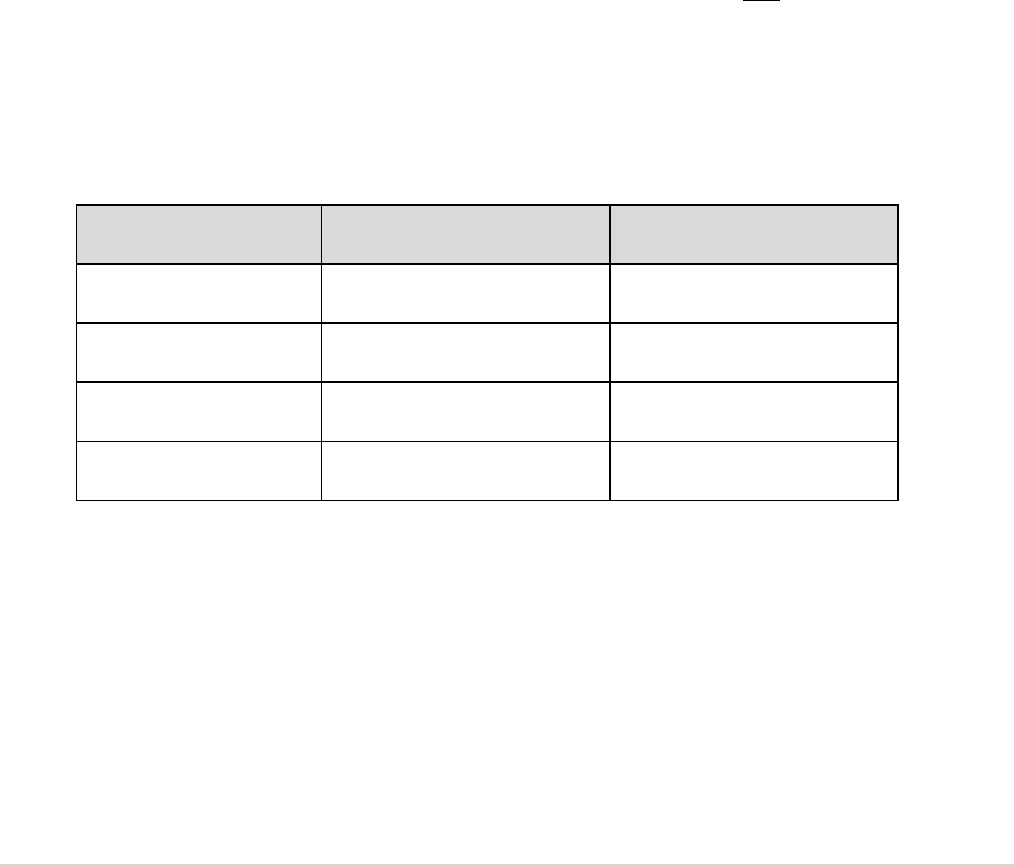
25 | P a g e R e v 4 / 2 0 2 2
4.4
Ineligible Loans / Loan Types
The following loans and loan types are not eligible for financing under the NC 1
st
Home
Advantage Down Payment™ program:
• Refinances (purchase transactions only)
• Vacation homes or “second homes”
• USDA Direct 502
• HUD 184 loans
• FHA 203k Renovation loans
• High-Cost Loans
• Income producing properties (renting, AirBnB, etc.)
High priced mortgage loans (HPML) are acceptable if all federal guidelines and Master
Servicer guidelines are met. High cost mortgage loans (HCML) are not accepted.
4.5
Mortgage Insurance Coverage Requirements
Mortgage insurance coverage factors are based on area median income (AMI) and LTV. Only
Fannie Mae loans are eligible for AMIs over 80%. Freddie Mac loans are capped at 80% AMI
or lower. The MI coverage factors are as follows:
Loan to Value
MI Factor
(AMI Over 80%)
MI Factor
(AMI Under 80%)
95.01-97%
35%
18%
90.01-95%
30%
16%
85.01-90%
25%
12%
80.01-85%
12%
6%
The applicable MI rates for the coverage factor listed above must be used. Rates may vary by
PMI provider. Borrower-paid single premium, split premium and monthly MI are all
acceptable. In all cases using MI, the max LTV cannot exceed 97% and the CLTV 105%.
Financed MI and Lender Paid MI is not allowed.
The lender is responsible for verifying the correct and accurate MI rates based on loan criteria.
Any errors not corrected before closing will result in loan not being eligible for
reimbursement/purchase by the Servicer.

26 | P a g e R e v 4 / 2 0 2 2
4.6
Escrow Holdbacks and Repairs
Loans requiring repair escrows are acceptable. However, the lender must follow ServiSolutions
guidelines before proceeding. Approved repairs typically include paint (interior and exterior),
carpet, appliances, roofing and minor exterior repairs such as facia boards, eaves, gutters and
window replacements. No structural repairs allowed.
ServiSolutions
®
does not require prior approval of escrow hold backs. The lender must
maintain a copy of the escrow agreement and copies of work bid estimates. The escrow
agreement usually provides the list of repairs, cost of repairs, total price of the holdback (150%
of repair unless it is a HUD repo, then it is 110%) and who will hold/disburse the funds. Escrow
repairs must be completed prior to submittal of closed loan file to Master Servicer for purchase.
The Final Inspection report verifying repairs have been completed is required. More details are
available at: www.servsol.com.
The lender is responsible for ensuring that the borrower, property, and other aspects of the loan
meet the particular insurer and servicing guidelines of the loan type chosen.
4.7
Repurchase Conditions
The lender must repurchase from NCHFA or Master Servicer any NC 1
st
Home Advantage
Down Payment loan or NC Home Advantage loan upon the occurrence of any of the following
events:
1)
the loan closes before formal NCHFA written approval;
2)
the lender breaches any covenant, warranty or representation in the Mortgage
Origination Agreement or this Program Guide;
3)
the DPA is defective arising from the origination, closing or delivery of the DPA to the
Master Servicer;
4)
the DPA documents are not delivered in a timely manner or in the form described in the
Program Guide;
5)
the DPA does not conform to the terms of its commitment or approval as per the
Program Guide;
6)
any request by the Master Servicer to repurchase the related first mortgage loan; or
7)
the lender makes any warranty or representation under the Mortgage Origination
Agreement which, in the sole discretion of NCHFA or the Master Servicer, is
determined to be false at the time when made by the Lender. Such representations or
warranties include any fraud, material misrepresentation, or material act of omission
regarding information submitted for the DPA or related first mortgage, regardless of
whether the lender had knowledge thereof.
The repurchase of any DPA will be equal to the unpaid balance of the Note plus any interest,
attorney’s fees, legal expenses, court costs or other expenses that have been incurred by
NCHFA or the Master Servicer regarding the DPA.

27 | P a g e R e v 4 / 2 0 2 2
Loans that are not purchased by Master Servicer will not be reimbursed by NCHFA
under any circumstances, for the 1
st
or 2
nd
mortgage. This includes FHA loans.
4.8
Minimum Borrower Investment / Cash Back Limits
No minimum investment is required from the borrower. The AUS findings and industry
guidelines for loan type should be followed. Funds for down payment and closing may come
from the borrower’s funds, a gift, seller contribution to closing expenses, down payment
assistance or grant. The borrower(s) cannot receive funds back at closing that exceed
verified borrower-paid POCs and cannot exceed $2,500 regardless of amount
contributed, from any source. All DPA funds must be used for Down Payment or Closing
Expenses.
4.9
Assets
There is no maximum asset limitation for the borrower.
Per Fannie Mae, for the proceeds from a bitcoin or other digital currency exchange to be
considered as an eligible asset, it must be converted to US currency and deposited into an
eligible asset account. All Assets must be verified in accordance with B3-4.2-01, Verification
of Deposits and Assets.
4.10
Gift Funds
Gift funds are allowed and must meet the loan type (i.e., FHA, USDA, VA or conventional)
Agency guidelines. Conventional loans must also comply with any requirements of the private
mortgage insurance (PMI) company used. The maximum cash back regardless of investment
by borrower(s) is $2,500.
4.11
Lien Position Policy
At time of closing, NCHFA will NOT take a lower lien position on down payment assistance
loans against any other non-NCHFA subordinate loans from any source. The NCHFA DPA
must be in 2
nd
lien position. This includes loans with CPLP, which must also be in 2
nd
position.
IRS tax liens are not allowed.
All subordinate financing must meet all investor, GSE, and federal regulatory requirements.
4.12
Principal Reduction Policy
Master servicer does not allow recasting of loan amounts after closing. Excess funds or
investment from borrower after all closing costs are paid should be used to reduce the 1
st
mortgage loan amount before closing.
Maximum cash back at closing cannot exceed $2,500 and must be from verified POCs paid
onto the transaction by the borrower(s). Excess Borrower funds resulting from gift funds, or
verified Borrower POCs, EMD, or Due Diligence fee, may be applied as a principal reduction.

28 | P a g e R e v 4 / 2 0 2 2
To make the necessary changes at closing:
a. Do NOT change the Promissory Note
b. Amend the Closing Disclosure to reflect the amount of the Principal Reduction
c. Post Closing, after ServiSolutions has purchased the loan, send the amount of the
Principal Reduction to ServiSolutions at:
ServiSolutions
Data Validation
7460 Halcyon Pointe Dr, Ste 200 or PO Box 242967
Montgomery, AL 36227
4.13
Eligibility with Other DPA Options
The NC 1st Home Advantage Mortgage Down Payment is a special $8,000 DPA for first- time
home buyers or qualifying military veterans who meet all the guidelines established for IRS
bond funded mortgages as well as NC 1
st
Home Advantage guidelines. Targeted census tracts
are also eligible. The NC 1
st
Home Advantage Mortgage Down Payment $8,000 cannot be
combined with the MCC program or the 3% or 5% DPA options from NCHFA.
4.14
Down Payment Assistance (DPA) – General Guidelines
1)
NCHFA does not offer stand-alone subordinate liens. The DPA is not assumable.
2)
The DPA must be in compliance with all federal and state statutes, rules and regulations, as
amended from time to time including, but not limited to, RESPA and mortgage loan servicing
regulations, and secured by a residential second-lien mortgage against the borrower’s principal
residence located within the State.
3)
A separate Loan Estimate (LE) is required for the subordinate mortgage.
No attorney fees may be charged on the second mortgage (DPA).
Allowable fees on the 2
nd
mortgage are limited to:
a)
A Housing Counseling fee, if applicable
b)
A recording fee (cost to record at the register of deed’s office)
c)
Application fee, if applicable (subject to max fees cap)
There is no prescribed allowable amount for these fees per the CFPB under the Partial
Exemption rule, but they must be reasonable, normal and customary.
4)
DPA cannot be used to pay negative equity (meaning the property appraises for less than
the sales price), nor to pay extension fees, or to pay off debts, collections or judgements.
5)
The borrower may obtain subordinate financing from other sources that also meet FHA, VA,
USDA and conventional guidelines.

29 | P a g e R e v 4 / 2 0 2 2
6)
Gift funds are eligible as long as the loan type (i.e., FHA, USDA, VA or conventional)
allows them. Conventional loans must also comply with any requirements of the PMI company
used.
7)
DPA used on USDA or VA loans must meet VA or USDA’s program requirements. The
lender is responsible for verifying that rates and program meet VA/USDA guidelines
8)
DPA funds cannot be used for repairs or repair escrows.
9)
Lender is responsible for 2
nd
mortgage (DPA) until purchased by Master Servicer.
10)
Box 4b on the new URLA 1003 should list “NCHFA” as the Creditor.
4.15
Funding of the DPA by Participating Lender
The lender must fund the subordinate DPA mortgage at closing, except for CPLP subordinate
mortgages.
The subordinate DPA mortgage must be closed in NCHFA’s name and utilize NCHFA’s Deed
of Trust (Form 405) and Promissory Note (Form 406), available at www.nchfa.com.
The Master Servicer will purchase the first mortgage and NCHFA DPA from the lender after
the approval of the closed loan by the Master Servicer, with the exception of CPLP
subordinates which will be funded by NCHFA at closing. The Lender must use the
ServiSolutions checklist(s) for delivery.
Failure by Master Servicer to purchase a loan will result in lender retaining both the 1
st
and 2
nd
(if applicable) mortgage, with no recourse.
ServiSolutions requires a copy of the NCHFA Commitment to be included as part of the closing
package.
For FHA loans, at the time the lender obtains the Commitment Letter, the document will also
contain a Down Payment Assistance (DPA) Award Letter and a Legally Enforceable
Obligation Letter pursuant to HUD Mortgagee Letter 2013-14 and HUD Handbook 4000.1
II.A.4.d.ii.(C).
The lender must provide a copy of the Down Payment Assistance (DPA) Award Letter and the
Legally enforceable Obligation Letter executed by the borrower(s) in the FHA case binder as
well as the closed loan file electronically delivered to ServiSolutions.
4.16
Loan Terms and Fees
The first mortgage associated with the NC 1
st
Home Mortgage Down Payment must be locked
at the mortgage interest rate set daily Monday through Friday on the NCHFA

30 | P a g e R e v 4 / 2 0 2 2
website. Rates are subject to change daily.
The $8,000 DPA funds may be used toward eligible down payment, mortgage insurance and
closing expenses. The maximum allowed cash back cannot exceed $2,500 and must be from
verified POCs paid into transaction by borrower(s). The DPA cannot cover negative equity.
The $8,000 DPA has a fifteen-year term with a 0% interest rate. It is a non-recourse, deferred
loan, forgiven at 20% per year at the end of years 11-15. At the end of the fifteen years, the
note will be considered satisfied and NCHFA will release the lien securing the note. Please
note that the forgiveness schedule is annual, not monthly. Non-arm’s-length transactions must
follow industry guidelines.
The maximum Origination Fee is capped at 1% of the loan amount. Fees not directly paid
to a 3
rd
party are capped at $1,300. The 1% cap and $1,300 are shown in Section A of Loan
Estimate (LE). Example fees under the $1,300 cap in Section A of the LE are underwriting fee,
application fee, commitment fee, etc. These are capped at $1,300 max and must meet state or
federal high-cost guidelines. Total fees are 1% + $1,300 as appropriate.
All or a portion of the unforgiven loan funds are due and payable to NCHFA if the home is
sold, refinanced or no longer owner-occupied (unless otherwise prohibited under applicable
federal law). Loans are repayable from proceeds to borrower from a sale or refinance.
No subordinations are allowed on any NC Home Advantage down payment loans during
the first seven (7) years.
4.17
Subordination Policy for Refinances (DPA)
To be eligible for subordination on the down payment assistance (DPA) after year seven (7):
1)
The age of the NCHFA second mortgage must be at least 7 years old from the date of
closing (84 months).
2)
The refinance of the first mortgage must not allow any cash back to the borrower(s) except
for a refund of Paid Outside Closing (POC) items paid during the processing of the new
mortgage, such as an appraisal fee.
3)
The new first mortgage Principal and Interest (P&I) payment must be lower than the current
first mortgage P&I payment. Exception: Reduction in loan term from 30 years to 25 or
fewer years.
4)
The new first mortgage must be a fixed rate loan. (Credit union ARM loans may be
permitted).
5)
The subordination, if approved, will retain NCHFA’s lien position. If the current NCHFA
subordinate lien position is second, then the subordinated lien retains the second lien
position.
6)
Closing costs may be financed into the new loan if allowed by the new loan product. The
request for subordination will be denied if the sum of any Loan Origination Fee(s) and/or
Commitment fees exceeds 1% of the new first mortgage loan amount.

31 | P a g e R e v 4 / 2 0 2 2
7)
Subordinations will be allowed if the new first mortgage is a reverse mortgage.
8)
A non-refundable processing fee must be submitted with the subordination request
documents. The check must be payable to North Carolina Housing Finance Agency. No
personal checks allowed. Any changes made after NCHFA’s subordination approval will
require an additional non-refundable processing fee. (Note: No fee(s) will be charged if the
source of funding for the subordinate loan is HOME funds.)
9)
Requests should be emailed to: subordinations@nchfa.com
4.18
Special High-Needs Rural Closing Cost Assistance Options (Fannie Mae loans only)
1. For borrower(s) and properties that meet specific eligibility requirements, $2,000 in closing
cost assistance is available. Funds are provided by lender at closing as a LLPA credit and
will be reimbursed upon purchase of a valid, closed loan by our Master Servicer.
2. Funds can only be applied to eligible closing costs, not down payment. No monies can be
given as cash back at closing.
3. Purchases only; principal residence.
4. Cash back cannot exceed $2,500 and no portion of the LLPA Credit ($2,000) can be
reimbursed to borrower(s) at closing. Cash back cannot exceed cash contributed by
borrower, of their own funds
5. The program is time limited.
6. Only applies to Fannie Mae loans under 80% AMI and properties meeting the High-Needs
Rural census tract property eligibility.
7. The mortgaged property must be located in a rural census tract in a High-Needs Region as defined
by Fannie Mae under their High-Needs County and Rural Tracts designation.
8. Fannie Mae may request that Loans originated under this program be subject to additional
review under Fannie Mae’s or Master Servicer’s QC process.
9. Full program rules and details are provided under a separate Term Sheet. Email
[email protected] for complete details.

32 | P a g e R e v 4 / 2 0 2 2
Section 5: Borrower Eligibility Guidelines
___________________________________________________________________________________________________________________________________________________________
Lenders must review the borrower requirements in this section to assess the eligibility of mortgages to
be purchased in the program. Eligibility for the NC 1st Home Advantage Mortgage Down Payment
($8,000) may be different than other down payment programs offered by NCHFA.
The lender is responsible for ensuring the borrower's compliance with various program requirements,
including the income limit requirement.
5.1
Borrower Requirements
1)
Borrower(s) shall occupy the property as a principal residence within sixty (60) days
after loan closing
2)
Mortgagors, a spouse, and titleholders residing in the property must be first-time
homebuyers, certain military veterans, or purchasing subject property in targeted census
tracts.
(a.) Veterans Exception: The borrower is a veteran who purchases a home using the
proceeds under a one-time exception allowance. The veteran cannot own another
home at time of closing of the mortgage.
A veteran is defined as a person who served 181 consecutive days in active duty of
the United States Armed Forces or Reserves and who was discharged or released
under conditions other than dishonorable. The application for financing must occur
before the 25th anniversary of the last date on which the veteran left active service.
A DD214 showing an honorable discharge is the required documentation for
eligibility.
(b.) Targeted Census Tracts: Borrowers purchasing a home located in a targeted Census
Tract (Tract listed in the MCC section on our website) do not have to be FTHB.
They cannot own any other property at the time of closing.
(c.) Ownership of a mobile or manufactured home (new or existing) not on a permanent
foundation, and titled as personal property does not automatically exclude the
applicant from obtaining the NC 1
st
Home Advantage Mortgage. The lender must
show proof that the previous residence was not on a permanent foundation and was
not classified as real estate.
(d.) Ownership of rental property, or a 2
nd
home, or timeshare, may be allowed if the
borrower has not occupied the property as a primary residence within the last three
years. The borrower may have to furnish a verifiable rental address for the most
recent three-year period.

33 | P a g e R e v 4 / 2 0 2 2
(e.) Retained ownership in a property owned jointly with another person (as in a
separation or divorce) may be allowed as long as the borrower has not occupied the
property as a primary residence within the last three years. The borrower may have
to furnish a verifiable rental address for the most recent 3 year period.
3)
Co-signors or non-occupying borrowers not allowed.
4)
Citizens, permanent legal residents, and non-permanent legal residents of the United
States are eligible for NC Home Advantage Mortgage or NC 1
st
Home Advantage
Mortgage if they meet all residency requirements applicable to their lender and loan
type (i.e., conventional, FHA, VA, USDA). Due diligence for confirming citizenship
and/or residency status and compliance with federal and other requirements for
mortgage loan financing for borrowers is the responsibility of the lender.
5)
Pre-purchase education is required for first-time homebuyers. Certificate is valid for 1-
year. Must meet the underlying loan-type guidelines.
5.2
Pre-Purchase Education Requirement for First-Time Homebuyers
Pre-purchase education is required for first-time homebuyers (only one borrower is required to
take the training; follow GSE requirements by loan type). The lender should upload the pre-
purchase education certificate to NCHFA prior to issuance of NCHFA’s Commitment. FHA,
HUD, or Freddie Mac approved on-line or in-person pre-purchase education programs are
acceptable. Per Fannie Mae Selling Guide Part B2-2-06, conventional loans require the
homeownership education course or counseling meet standards defined by HUD or the
National Industry Standards for Homeownership Education and Counseling.
For homebuyers who complete pre-purchase counseling which is one-on-one completed with
a HUD approved agency prior to the time an Offer to Purchase is signed, the lender must use
SFC 184 and provide Fannie Mae Form 1017 signed by the borrower(s) and the lender at the
time of loan submission to NCHFA. Certificate is valid for 1 year after date of completion.
CPLP loans require in-person training.
5.3
Income Limits
Borrower(s) must meet program income limits, and lenders must calculate income using
the procedures outlined in this section.
The NC 1
st
Home Advantage Down Payment program counts total, gross family income of
all mortgagors and a spouse (and anyone expected to or anticipated to live in the house and
hold an ownership interest).
Income limits vary by county and household size for the NC 1
st
Home Advantage Down
Payment™ product. Income limits are subject to change. See Section 8 for full details on
calculating total, gross family income. Current income limits can be found on the NCHFA
website at www.nchfa.com or via OLS at www.nchfa.org/OLS/login.aspx.
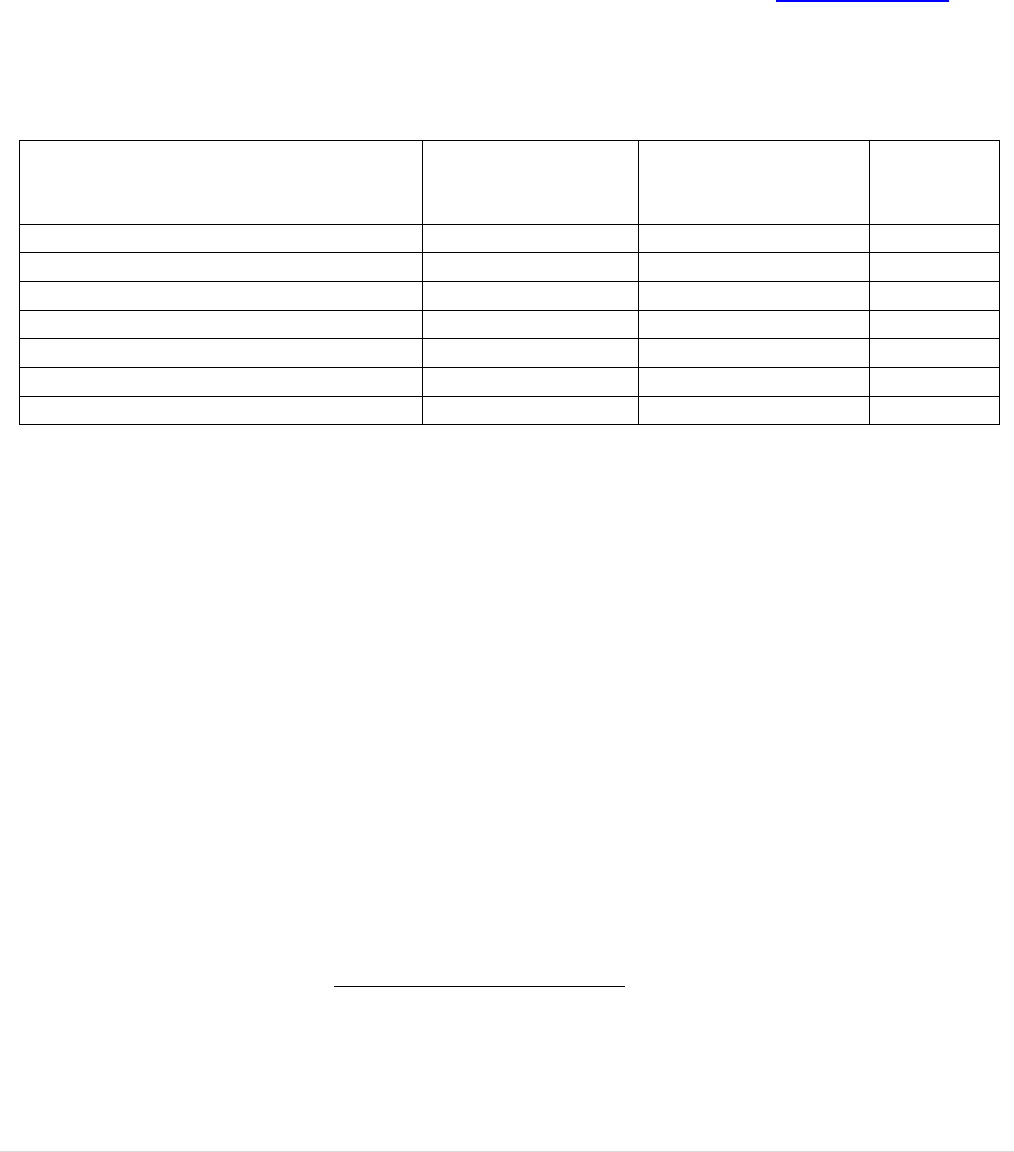
34 | P a g e R e v 4 / 2 0 2 2
The last three years of IRS Tax Transcripts or valid, signed tax returns are required for NC
1
st
Home Advantage Down Payment loan approval. ServiSolutions may require the most
recent year’s transcripts for all borrowers for post-closing audits.
Lender must download the ServiSolutions funding checklist located at www.servsol.com.
In addition to tax documents, a tri-merged credit report is also required on all
mortgagors/spouse.
Table 1: Family Income Chart (Whose Income is Counted?)
Category of Borrower/Titleholder
Income Counted?
Income Documents
Required/Tax
Return
FTHB?
Borrower
Yes
Yes
Yes
Co-Borrower
Yes
Yes
Yes
Spouse
Yes
Yes
Yes
Someone Secondarily Liable, Occupant
Yes
Yes
Yes
Titleholder, Occupant
Yes
Yes
Yes
Titleholder, Non-Occupant
No
No
No
Adult Occupant only
No
No
No
5.4
Section 8 Vouchers
When using a Section 8 Voucher, the lender must verify that the underlying income calculation
meets all GSE guidelines. The Servicer will not accept split payments, meaning that the customer
is solely responsible for submitting the full mortgage payment when due. (The non-profit or local
issuer of the voucher cannot send in the partial payment to the Servicer.)
5.5
Ratios
The maximum debt-to-income ratio for all loan types with or without down payment assistance
is 45.0%. These ratio maximums apply to all NC 1
st
Home Advantage Down Payment loans
regardless of the AUS recommendation. There is no front ratio limit at this time, but you must
follow the industry guidelines for the loan type.
5.6
Credit Score Requirements
All loans must receive an AUS Approve/Eligible credit recommendation (DU/GUS/FHA Total
Scorecard. LPA allowed on Freddie Mac conventional, FHA/VA only). In addition, all
borrower(s) must have a minimum of two credit scores, the lowest or mid-score being 640 or
higher (660 if manufactured home type). Both borrower and co-borrower must meet credit score
minimum thresholds, including any GNMA, FNMA or MI company minimum credit scores, if
applicable.
To determine the applicable minimum credit score, the lender should first evaluate each

35 | P a g e R e v 4 / 2 0 2 2
borrower separately. The applicable credit score is the lower score when two credit scores are
obtained or the middle score when three credit scores are obtained.
Borrower(s) with only one score or no credit scores are not eligible for the program. Lender
will be required to upload a tri-merge credit report for all borrower(s) and/or mortgagor.
If more than one individual is applying for the same mortgage, the lender should determine the
applicable credit score for each individual borrower and then select the lowest applicable score
from the group as the “representative” credit score for the mortgage. The “representative”
credit score for the mortgage should be used to underwrite and evaluate the comprehensive risk
for the mortgage application.
NCHFA does not accept loans with non-traditional credit histories, no credit scores or
borrower(s) with one credit score.
5.7
Collections Policy / Liens / Judgments / Student Loans
Industry standards for payment of collections vary based on loan type. The Automated
Underwriting Systems [Desktop Underwriter (DU), Desktop Originator (DO), Loan Product
Advisor (LPA), FHA Total Scorecard or Guaranteed Underwriting System (GUS)] must show
that all collections were included in the final AUS Findings analysis.
All judgments, regardless of balance, must be paid in full prior to or at closing or meet industry
guidelines for repayment, if applicable.
IRS liens not allowed. Borrowers enrolled in a payment plan with the IRS must provide a copy
of the agreement.
Calculation of student loan debt(s) should comply with FHA, FNMA, FMAC, USDA or VA
requirements for calculation of monthly payment and follow any AUS Finding messages.
5.8
Bankruptcy Policy
The participating lender should follow industry standards regarding bankruptcy waiting periods
which may vary based on loan type. NCHFA does not have a standalone policy regarding prior
or existing bankruptcy waiting periods.
5.9
Short Sales/Foreclosures
The participating lender should follow industry standards regarding short sale/foreclosure
waiting periods which may vary based on loan type. NCHFA does not have a standalone policy
regarding short sales or foreclosures.
5.10
Flip Properties
The participating lender should follow industry standards regarding flip transaction waiting

36 | P a g e R e v 4 / 2 0 2 2
periods which may vary based on loan type. NCHFA does not have a standalone policy
regarding flip transactions.
Non-arms-length transactions must follow industry guidelines.
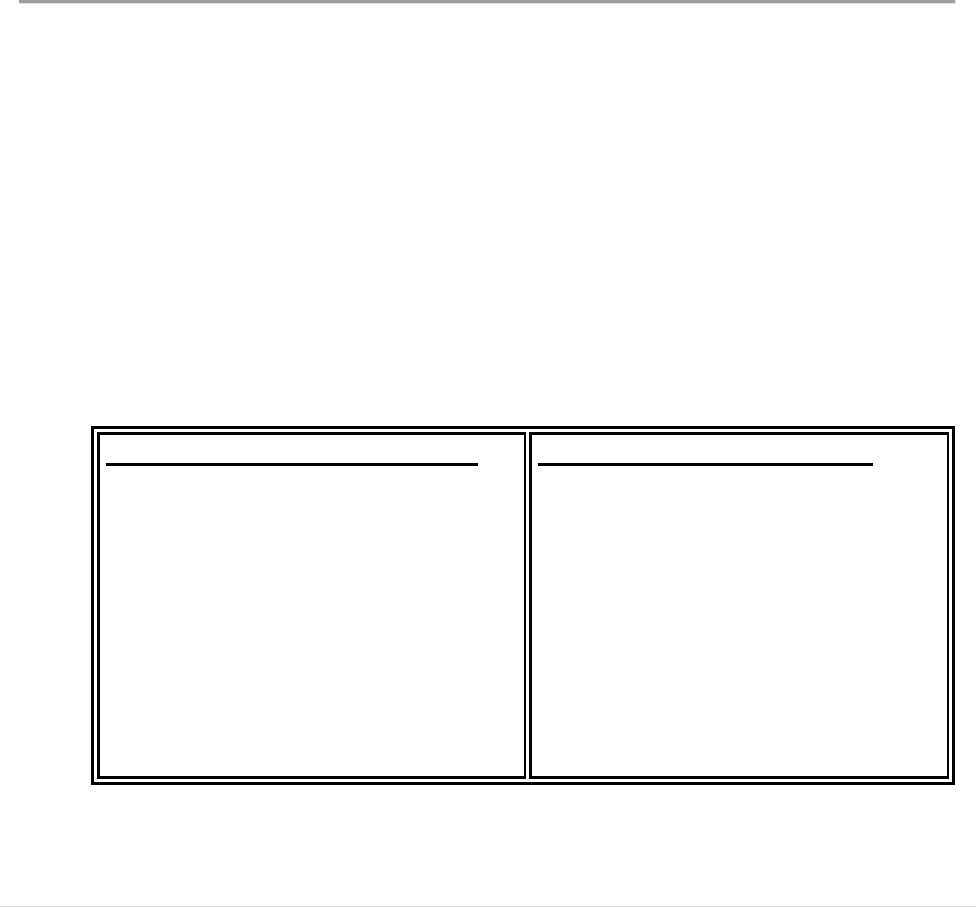
37 | P a g e R e v 4 / 2 0 2 2
Section 6: Property Eligibility Guidelines (NC 1st
Home Advantage $8,000 DPA only)
Lenders must review the property requirements of this section to ensure the eligibility of mortgages
to be purchased in the program.
6.1
Property Requirements
The NCHFA sales price limit for a home financed through the NC 1
st
Home Advantage™
program is $345,000 and subject to change annually.
The residence must be in North Carolina and must be eligible for mortgage insurance under
FHA, VA, USDA, or conventional guidelines as a principal residence.
Eligible Property Types by Loan type ($8,000 DPA):
FHA, USDA, VA Eligible Properties
▪
Single family detached
▪
Townhomes
▪
Condos (warrantable)
▪
Modular homes – new or existing;
permanent foundation
▪
Manufactured homes – new only
(new, never occupied; double-wide
or greater only) permanent
foundation
Conventional Eligible Properties
▪
Single family detached
▪
Townhomes
▪
Condos (warrantable)
▪
Modular Homes–new or existing;
permanent foundation

38 | P a g e R e v 4 / 2 0 2 2
Requirements for manufactured homes are more restrictive than for other property
types. These include the following:
•
660 credit score or higher
•
New construction only (never previously occupied)
•
Must be on permanent foundation and taxed as real estate
•
Appraisal must be on Form 1004C
•
ALTA 7.1-06 title endorsement required
6.2
Repairs and Escrows for Completion
Repairs to the property and escrows for completion are handled by the originating lender
and must be completed according to Master Servicer requirements. Master Servicer’s
requirements can be located at http://www.servsol.com/ .
Loans requiring repair escrows are acceptable. However, the lender must follow
ServiSolutions’ guidelines before proceeding. ServiSolutions® does not require prior
approval of escrow hold backs. The lender must maintain a copy of the escrow agreement
and copies of work bid estimates.
Repair work must be completed prior to closed loan submittal to Master Servicer. The Final
Inspection report verifying repairs have been completed is required. More details are
available at www.servsol.com.
All escrow funds must be released prior to submission of closed loan file to and purchase
of loan by ServiSolutions.
6.3
Owning More Than One Home
If the borrower(s) intends to retain ownership in more than one residence after closing,
including rental, vacation, or second homes, the lender must verify that the borrower(s) are
eligible for financing according to industry guidelines from FNMA, FHA, VA or USDA.
In no case may a borrower have more than one (1) property financed through NCHFA at
any time or one outstanding NCHFA product.
6.4
Property Appraisal Condition Requirements
Eligible property conditions are C1, C2, C3, and C4. Appraisal waivers are not allowed.

39 | P a g e R e v 4 / 2 0 2 2
If the URAR appraisal indicates a C5 and C6 property condition, it is not eligible for
NCHFA programs or financing. The property condition will be shown on the Uniform
Appraisal from a licensed appraiser.
All homes must have a working heating system and meet all appraisal and/or repair
inspection requirements.
Any appraisal with a CU Risk Score of 4 or 5 will require a written signed statement from
the Participating Lender’s Underwriter explaining why the appraisal was approved with a
credit risk score 4 or 5. This statement must be provided as part of the Closing Package to
ServiSolutions for evaluation.
Property Inspection Waivers are not allowed under this program.
6.5
Maximum Acreage
The land acquired in connection with the mortgage loan may not exceed five (5) acres. No
portion of the land or property may be used as an income producing property, including
rental.
6.6
Business Use of Property
No more than fifteen percent (15%) of the total area of the principal residence can be
used for:
1)
the principal place of business for, or in connection with, any trade or business on an
exclusive and regular basis;
2)
a place of business that is used exclusively and on a regular basis for meeting or
dealing with patients, clients, or customers in the normal course of trade or business;
or
3)
a place that is used on a regular basis where the inventory is held for use in the trade
or business of selling products at wholesale or retail but only if the residence is the
sole fixed location of such trade or business.
Not Allowed:
i.
Rental to any person, this includes rental to a roommate. Roommate rental is
assumed to be using more than 15% of the residence for business purposes.
ii.
The property may not have accessory units, storage sheds, or other unattached,
separate structures that would qualify as livable space.
iii.
A place that is used on a regular basis in the trade or business of providing day
care for children, or for other individuals, regardless of age.

40 | P a g e R e v 4 / 2 0 2 2
Unattached outbuildings disqualify borrowers for the $8,000 DPA if the appraiser
identifies the space as income producing or otherwise could function as a separate living
unit (kitchen, bedroom).
Property acquisition costs may not exceed NCHFA’s limits. Some living units include
unfinished space (i.e. an area designed or intended to be completed or refurbished and used
as living space). For example, if the unfinished square footage in the lower level of a tri-
level residence or the upstairs of a Cape Cod exceeds 25% of the total square footage, the
cost to complete this area, whether or not the work is actually to be done, must be added to
the sales price to arrive at the acquisition cost.
The lender may use the appraiser’s cost estimation for completion or a contractor’s
estimate. Alternatively, $35/sf as a proxy to determine finished cost is also acceptable.
The Seller Affidavit (Form 013) must include this estimated cost in the overall
acquisition cost.
The mortgages are also subject to the FHA 203(b) maximum mortgage limits or
published Agency acquisition limits, whichever are lower.

41 | P a g e R e v 4 / 2 0 2 2
Section 7: Loan Origination and Underwriting Steps
7.1
General
Eligible borrowers apply for the NC 1
st
Home Advantage Down Payment™ program
through participating lenders by completing a standard mortgage application. If the loan
meets the applicable credit and underwriting guidelines, the lender will enter the requested
information and lock the loan in OLS, establishing the Lock-In Expiration Date (the date
by which the Master Servicer must purchase the loan). After locking the loan, the lender
must upload the requested documents for NCHFA’s review prior to closing. Once NCHFA
approves the documents, it issues a Commitment, pending the Master Servicer’s approval
of the loan post-closing. Under no circumstances should any NC 1
st
Home Advantage
Down Payment Mortgage™ loan close without a Commitment from NCHFA.
Documents required to be uploaded via OLS electronically should be submitted as early as
possible, but not before the final underwriting review has been completed, to allow
sufficient time for NCHFA to review the file and for the lender to make corrections.
NCHFA will review files on a first-come, first-served basis within 48 hours of receipt. This
policy also applies to any additional or revised documentation which is submitted at a later
date.
7.2
NCHFA Normal Review Time
Every effort will be made to review all loans within 48 hours of submission to NCHFA via
the OLS portal. Pend conditions may take an additional 48 hours to review, after the last
condition has been received.
7.3
Loan Origination
Borrowers are required to meet all FHA, VA, USDA, Fannie Mae HFA Preferred or
Freddie Mac HFA Advantage industry guidelines, and loans must be eligible for FHA
insurance, VA, or USDA guarantee or private mortgage insurance (PMI). Conventional
loans may use any Fannie Mae, Freddie Mac and ServiSolutions approved PMI company.
Conventional loans equal to or less than 80% LTV do not require PMI.

42 | P a g e R e v 4 / 2 0 2 2
Note: The following procedures outlined here suggest the typical sequence of events for
NC 1
st
Home Advantage Down Payment Mortgage™ loans:
1)
Borrower reviews program details or visits the NCHFA website at www.nchfa.com
and schedules an appointment with a participating lender.
2)
If the preliminary screening indicates that the borrower meets NCHFA Program
Guidelines and the loan meets FHA, VA, USDA, or conventional underwriting
guidelines, the lender takes a formal application.
3)
Lender verifies that gross mortgagor(s) family income, DTI ratio, and industry
guidelines are met. The lender’s underwriting staff runs AUS Findings and
completes a formal underwriting review of the loan file.
4)
A separate Loan Estimate (LE) is required for the subordinate mortgage. No
attorney fees may be charged on the second mortgage (DPA). Allowable fees are a
Housing Counseling fee, a recording fee (cost to record at the register of deed’s
office), and an application fee. There is no prescribed allowable amount for these
fees per the CFPB, but must be reasonable and customary.
5)
All loans must receive an AUS Approve/Eligible credit recommendation
(DU/GUS/FHA Total Scorecard). In addition, all borrower(s) must have a
minimum of two credit scores, the lowest score being 640. For conventional loans,
only loans that are DU eligible or LPA Accept are allowed. LPA is acceptable for
FHA and VA and conventional HFA Advantage and Closing Cost Assistance.
6)
To determine the single applicable credit score, the lender should first evaluate each
borrower separately. The single applicable credit score is the lower score when two
credit scores are obtained or the middle score when three credit scores are obtained.
A borrower with only one credit score is not eligible for financing.
7)
NCHFA will not accept loans with non-traditional credit histories or those with
only one credit score, regardless of the loan type.
8)
After the lender has underwritten the borrower loan file, the lender will access the
Online Lender Services System (OLS) (http://www.nchfa.org/ols/login.aspx) and
input the loan information and print the lock confirmation form. Once this step is
complete, the interest rate is locked for a period of 60 days. Expired locks are
subject to a mark-to-market fee based on market conditions at the time the loan is
purchased. To avoid a mark-to-market fee, an extension must be requested via OLS,
for which extension fees apply.
9)
After the rate is locked and the loan has received final underwriting approval by
lender, and prior to closing, the lender must upload the documents required for
NCHFA’s review via OLS.
10)
Once all required documents are uploaded, NCHFA will review the documents
within 48 hours. NCHFA will notify the lender via OLS if there are any issues to
be addressed with the uploaded documents. If the documents are approved, NCHFA
will issue a Commitment via e-mail to the participating lender. For an FHA loan
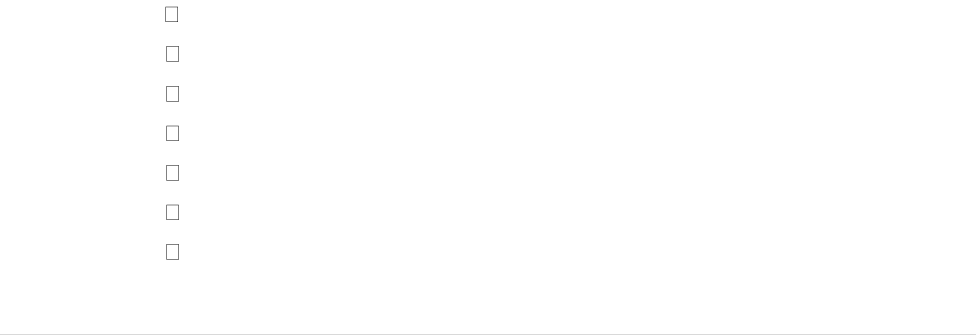
43 | P a g e R e v 4 / 2 0 2 2
with DPA, the printing of the Commitment will also include a Down Payment
Assistance Award Letter which the lender will provide to the borrower as well as a
Legally Enforceable Obligation Letter pursuant to HUD Mortgagee Letter 2013-14
and HUD Handbook 4000.1 II.A.4.d.ii.(C).
NCHFA reserves the right to reject any mortgage loan application if, in its sole discretion,
if NCHFA believes the mortgage loans do not comply with all rules, procedures and
guidelines set forth in this Program Guide.
7.4
Pre-Approval Forms/Documents Required
The participating lender shall upload via OLS the following documents prior to closing an
NC 1
st
Home Advantage Down Payment Mortgage™ loan:
▪ Final Uniform Residential Loan Application (Form 1003)
▪ Automated Underwriting System (AUS) Findings (final)
▪ Uniform Residential Appraisal Report (URAR), all pages, PDF, Color
▪ Loan Estimate (LE) on first
▪ Loan Estimate (LE) on the second (DPA)
▪ Proof of homebuyer’s pre-purchase education (if first-time home buyer)
▪ 3 Years Tax Transcripts or valid, Signed Tax Returns
▪ VOEs, W2s, Paystubs (all current and past jobs from prior year)
▪ Lender supplied tri-merged credit report on all borrowers and/or mortgagors
7.5
NCHFA Forms and Documents Required
The lender must submit all forms required by the NC 1
st
Home Advantage Mortgage.
The NC 1
st
Home Advantage Down Payment Mortgage requires certain documents and
forms signed by all borrower(s) and/or mortgagors. The seller must also sign the Form-
013 Seller Affidavit. Limited exceptions made for REOs sold by Fannie Mae, Freddie
Mac, VA, or HUD (contact NCHFA).
The additional NCHFA forms are:
Form-08 (Underwriter Certification)
Form-013 (Seller Affidavit)
Form-015 (Preliminary Notice to Applicants of Potential Recapture)
Form-016 (Mortgage Affidavit and Borrower Certification)
Form-026 (Notice to Borrower)
Form-101 (Borrower Closing Affidavit)
Form-102 (Lender Closing Affidavit)

44 | P a g e R e v 4 / 2 0 2 2
Table 2: Who Is Required to Sign the Forms?
Category of Borrower/Titleholder
Recapture Notice
Form - 015
Mortgage
Affidavit Form -
016
Notice to
Borrower
Form - 026
Borrower (s) / Mortgagors
Yes
Yes
Yes
Spouse
No
Yes
No
Someone Secondarily Liable, Occupant
No
Yes
No
Titleholder, Occupant
No
Yes
No
Titleholder, Non-Occupant
No
Yes
No
Adult Occupant only
No
Yes
No
IRS Recapture Tax applies to the mortgage loan(s). The lender is required to explain and
provide the Form-015 Preliminary Notice to Applicants of Potential Recapture to the
customer at time of loan origination. Borrower(s) and/or mortgagors are required to sign
the Recapture Notice.
Please note the NC 1st Home Advantage Down Payment Mortgage™ loan cannot be paired
with an MCC.
Once all documents are uploaded, NCHFA reviews the submission package for
completeness and verifies income and ratios according to program guidelines.
If the submission package is acceptable, NCHFA will issue a written Commitment, which
the lender can print via OLS. No loan may close without the formal approval and Loan
Commitment from NCHFA. Any loan that closes before NCHFA approval is subject to
non-purchase by Servicer or repurchase.
If the loan is an FHA loan and has DPA attached, the Commitment letter will also contain
the FHA Award Letter and a Legally Enforceable Obligation Letter. Award letter must be
signed before closing or the entire loan is no longer FHA eligible.
The Master Servicer will purchase a first mortgage loan and a DPA loan in a specified
amount from the lender upon evidence of compliance with the NC 1st Home Advantage
Down Payment™ program requirements and the closing of the mortgage loan.
Note: Any changes on Form 1003 or to the AUS findings after the issuance of the
Commitment Letter will render the loan subject to non-purchase. A Loan Estimate (LE) is
always required on the second mortgage. No attorney fees can be charged on the second
mortgage.
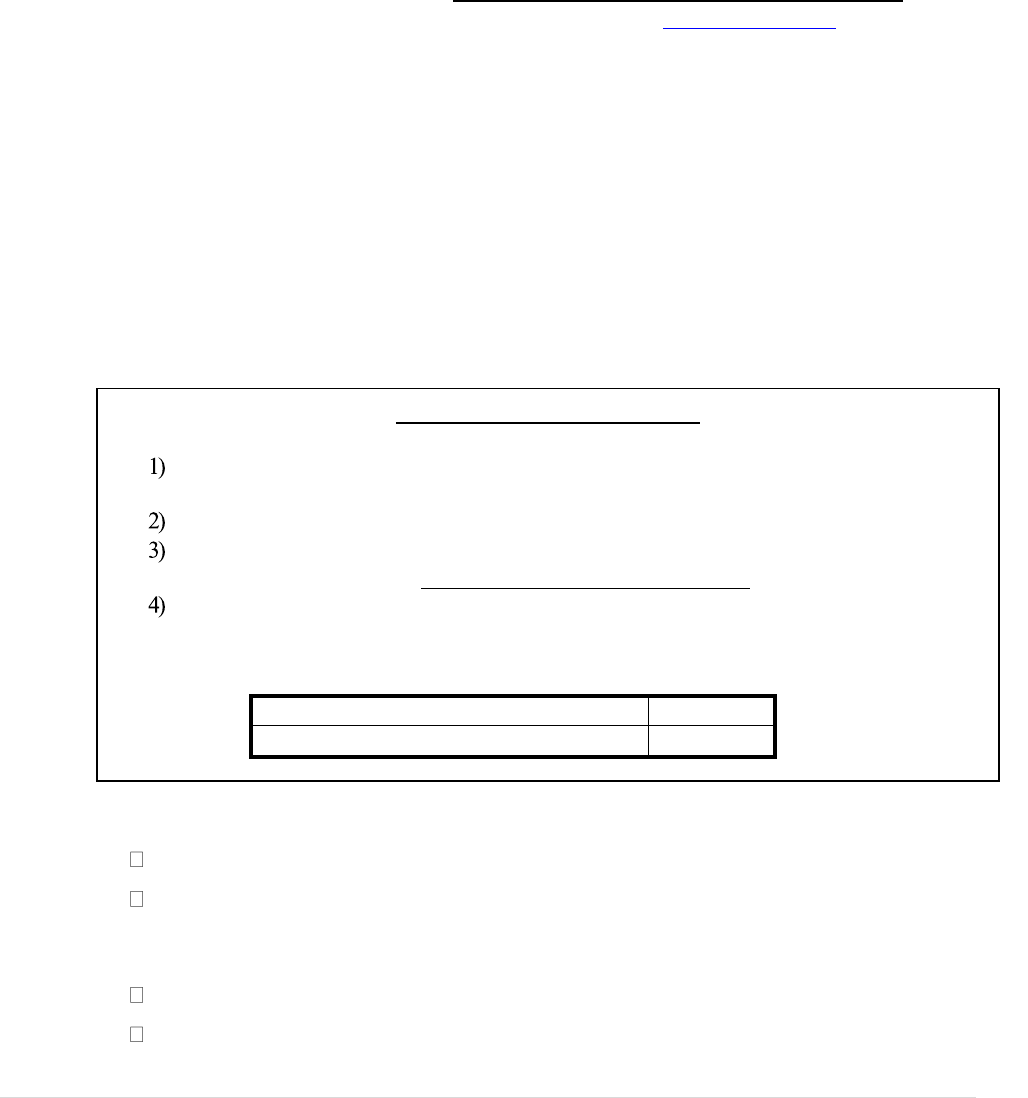
45 | P a g e R e v 4 / 2 0 2 2
Steps for MERS
®
Members
Generate a MIN (Mortgage Identification Number) within your system and place the
MIN on the Deed of Trust.
Use the MOM (MERS
®
as Original Mortgagee) Deed of Trust form.
Register the loan in your name with the MERS
®
System using your MERS
®
Org. ID
as Servicer and Investor within 10 business days of closing.
Initiate Transfer of Beneficial Rights (TOB) and Transfer of Servicing Rights (TOS) or
combined TOS/TOB to ServiSolutions.
7.6
Loan Closing After NCHFA Issues Commitment
1)
No loan can be closed without NCHFA’s formal Commitment Letter. Any loan that
closes before formal NCHFA approval will be subject to non-purchase by Servicer
and/or NCHFA.
2)
The lender should provide the Quality Control Certification & Authorization to the
closing attorney prior to closing (forms available at www.servsol.com). If the loan
does not meet all program and industry guidelines, the loan will not be purchased
by the Master Servicer.
3)
The lender closes the loan following its normal procedure after NCHFA approval.
The NC Home Advantage Mortgage™ DPA Deed of Trust (Form 405) and the NC
Home Advantage Mortgage™ DPA Promissory Note (Form 406) must be used.
These forms are available on the NCHFA website.
4)
All participating lenders must be MERS
®
members.
5)
All Closed Loan Files are submitted separately to BOTH NCHFA and Master
Servicer (ServiSolutions) for review.
6)
A copy of the General Warranty Deed will need to be uploaded after closing.
Servicer
ORG ID
ServiSolutions
1002536
7)
The lender should further instruct the closing attorney/agent as follows:
The borrower(s) cannot be charged discount points or extension fees.
The mortgage payment must include amounts to pay the property taxes and all
applicable insurances. For loans closing after July 31st, all taxes for current/prior
year MUST be paid in full with proof provided with closing package.
Principal adjustments at closing must be on 1
st
mortgage only.
The maximum allowed cash back cannot exceed $2,500 and must be from
verified POCs paid into transaction by borrower(s).

46 | P a g e R e v 4 / 2 0 2 2
The Trustee fee on all Deeds of Trust must be 5%.
The Closing Disclosure for the first mortgage must reflect the correct subordinate
financing calculation. An initial and a final CD are required on the first mortgage per
ServiSolutions’ funding checklist available at www.servsol.com. No CD is required on
the 2
nd
mortgage.
Homeowners’ and flood insurance mortgagee clauses:
First Mortgage:
ServiSolutions a department of Alabama Housing Finance Authority
ServiSolutions
Its successors and/or assigns, as their interest may appear PO
Box 242967
Montgomery, AL 36124-2967
Second Mortgagee – NCHFA Subordinate Loan (DPA) - Additional
Mortgagee Clause
North Carolina Housing Finance Agency
Its successors and/or assigns, as their interest may appear PO
Box 28066
Raleigh, NC 27611-8066
7.7
Interest Credit
ServiSolutions will allow an interest credit through the 5
th
of the month.
7.8
Interim Servicing
Until the closed loan is formally purchased by the Master Servicer, the originating lender
must process all mortgage payments, including servicing of the loan. Lender is required to
follow all federal and state requirements for proper servicing of customer payments.
Bi-weekly payments are not allowed on NC Home Advantage Mortgage™ program loans.
7.9
Hazard/Flood Insurance Requirements
Per ServiSolutions, the maximum deductible is not to exceed greater of 2.5% of the face
amount of the policy or $2,500 unless a higher amount is required by state law. Wind, hail
and hurricane policies deductibles should not exceed 5% of the face amount of the policy.
Lower amounts apply if loan type regulations mandate different amount. Separate coverage
on the 2
nd
lien/DPA is recommended, but not required.
Maximum Flood Insurance deductible varies by loan type:
▪ FNMA/FHLMC - 2.5% or $2,500 whichever is greater
▪ FHA/VA - $2,500
▪ USDA - $1,000

47 | P a g e R e v 4 / 2 0 2 2
For more information refer to ServiSolutions AllRegs at www.servsol.com
7.10
Electronic Signatures
Electronic Signatures are allowed on certain Agency forms and industry forms, subject to
the following general rules. The e-Signature must be e-Sign or UETA compliant.
The use of e-signatures is voluntary, but lender transactions utilizing e-signatures must
meet the following standards:
1)
NCHFA does not accept documents that have been signed solely via voice or audio.
The electronic signature and date should be clearly visible on any and all documents
when viewed electronically and on a paper copy of an e-signed third-party
document.
2)
for borrowers that are entities, the signatory must be a representative who is duly
authorized in writing to bind the entity;
3)
evidence of such written authority must be maintained by Lender;
4)
lenders are not permitted to have borrowers sign documents in blank or with
incomplete documents;
5)
e-signatures and the accompanying dates must be clearly visible on all e-signed
documents;
6)
e-signatures are NOT permitted on promissory notes, deeds of trust, mortgages,
documents that require notarization or witnesses, or transactions utilizing a power
of attorney; and
7)
e-signature must meet all state and federal laws and regulations.
7.11
Power of Attorney (POA) Guidelines
NCHFA will accept Powers of Attorney (POA) that meet certain criteria. In all cases the
POA must be provided to NCHFA PRIOR to approval of the loan and before closing. POAs
may be used on NCHFA forms including the Deed of Trust and Promissory Note if they
meet the criteria below and all legal requirements under NC State Real Estate law. Nothing
below supersedes federal or state laws.
The criteria for use of a POA on any document in the NC Home Advantage program are
as follows:
1)
The power of attorney used for signature on a deed of trust or deed (or other
recorded document) must be recorded in the county where the property is located
prior to the documents being recorded. The date of the power of attorney must be
valid as of the time of execution of the closing documents.
2)
The name on the power of attorney must match the name of the person on the loan
documents for which that person is acting as attorney-in-fact.
3)
The power of attorney must be notarized (so it can be recorded) and in recordable

48 | P a g e R e v 4 / 2 0 2 2
form.
4)
It is preferred that the wording for a POA specifically refers to the subject property
address. It is not required by NC Statute, but is recommended whenever possible.
5)
A copy of the power of attorney and Agent Certification form must be provided to
NCHFA prior to loan approval by NCHFA and prior to closing of the first and/or
second mortgages.
6)
“Agent’s Certification for POA” document required when the borrowers are using
POA for their closing docs.
In addition to the above, the following guidelines also apply as appropriate:
1)
An authorized seller may sign the Seller Affidavit (Form-013) by POA only if the
principal seller is incapacitated. A letter of explanation is required from the holder
of the POA and the POA must be submitted to NCHFA.
2)
A relocation company is authorized to sign Seller Affidavits if properly authorized.
3)
Active duty military personnel with a military POA will be reviewed on a case by
case basis.
4)
A POA is NOT acceptable if the attorney-in-fact or authorized party is:
a. the lender;
b. any affiliate of the lender;
c. any employee of the lender or any other affiliate of the lender;
d. the loan originator;
e. the employer of the loan originator;
f. any employee of the employer of the loan originator;
g. the title insurance company providing the title insurance policy or any
affiliate of such title insurance company (including, but not limited to, the
title agency closing the loan), or any employee of either such title
insurance company or any such affiliate; or
h. any real estate agent with a financial interest in the transaction or any
person affiliated with such real estate agent.

49 | P a g e R e v 4 / 2 0 2 2
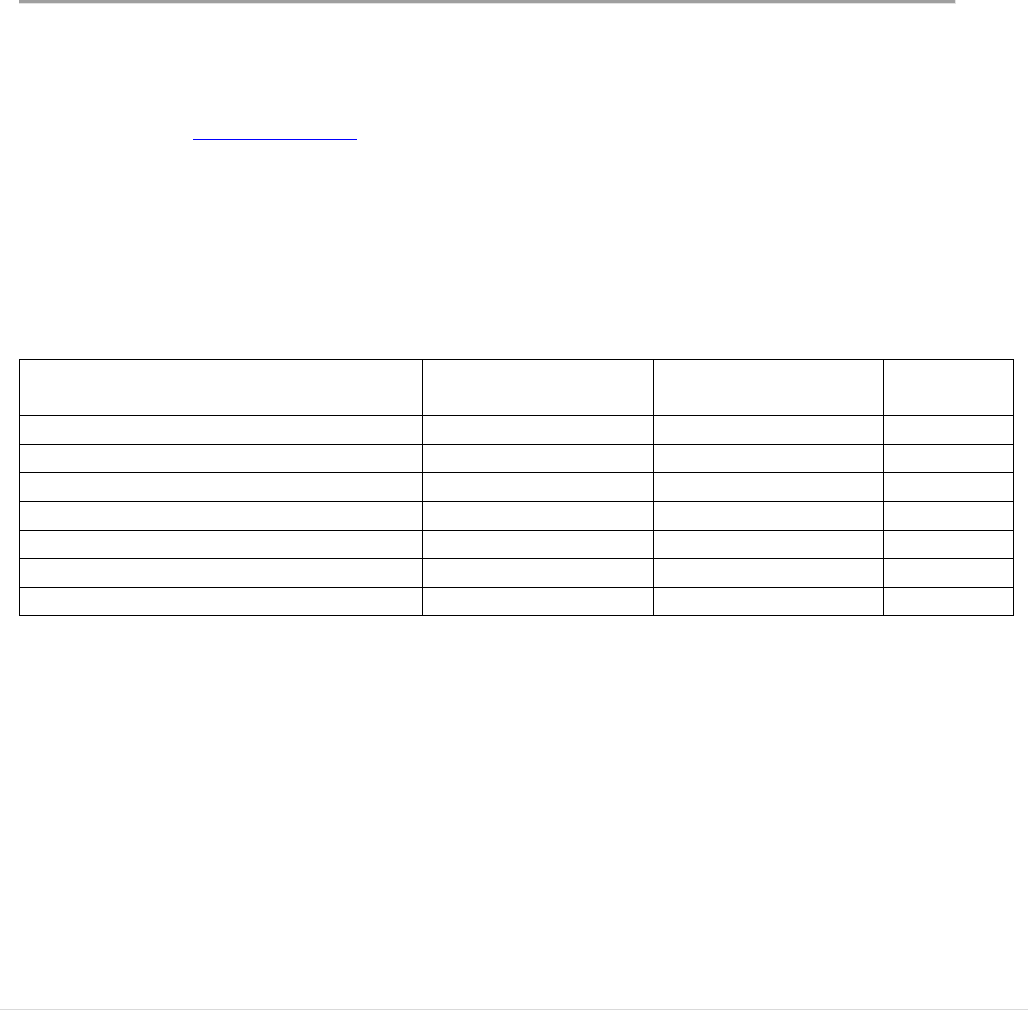
50 | P a g e R e v 4 / 2 0 2 2
Section 8: Income Eligibility Guideline
8.1
Income Limits
Total, gross family income limits apply to the $8,000 DPA and can be found on the NCHFA
website at www.nchfa.com under Income Limits. The income limits are subject to change.
The income limits are based on mortgage revenue bond financing and IRS guidelines. The
income limits will vary based on total number of people living in the home, and reflect
gross family income of all borrower(s). Any person expected to live in the house and hold
an ownership interest in the subject property must be counted in total income (e.g., a non-
borrowing spouse income should be counted).
Family Income Chart (Whose Income is Counted?)
Category of Borrower/Titleholder
Income Counted?
Income Documents
Required?
FTHB?
Borrower
Yes
Yes
Yes
Co-Borrower
Yes
Yes
Yes
Spouse
Yes
Yes
Yes
Someone Secondarily Liable, Occupant
Yes
Yes
Yes
Titleholder, Occupant
Yes
Yes
Yes
Titleholder, Non-Occupant
No
No
No
Adult Occupant only
No
No
No
8.2
Tax Returns/Transcripts and Program Compliance
1)
To meet the first-time home buyer requirement, the Lender must obtain the last
three years of Federal Tax Transcripts or signed tax returns for the borrower(s)
and any occupying titleholder who will hold an ownership interest in the property.
NCHFA requires a copy of all the prior year’s W-2s & 1099s. No W-2s are
required for the previous two years, unless the loan is closing between January 1
st
and February 15
th
of the current year. In that case, the last two years of W2s &
1099s must be provided. If current year W2s &/or 1099s are not available, a year-
end paystub with year-to-date information will be required. The sum of the W2s

51 | P a g e R e v 4 / 2 0 2 2
must match the federal tax transcripts/tax returns. Complete details are
described throughout Section 6.
Note: IRS form 8453, U.S. Individual Income Tax Declaration for an IRS e-file
return cannot be used in lieu of the actual tax return.
2)
If mortgage interest or real estate taxes are shown on tax returns or credit reports,
the borrower(s) must furnish documentation to support their first-time buyer
eligibility. The lender includes this documentation to NCHFA in the submission
package.
3)
IRS Tax Transcripts or valid, signed Tax Returns are acceptable tax
documentation along with tri-merged credit report(s).
NCHFA will accept IRS Tax Transcripts or valid, signed tax returns for the prior
three (3) years as required by our program guidelines. Under the program, all
borrower(s) and/or titleholders must have filed their current year federal tax
returns no later than February 15
th
.
4)
The customer should sign and provide NCHFA Form-018 (Income Tax Affidavit)
for any year indicating a missing tax return.
5)
For borrowers/mortgagors who are required to sign the Income Tax Affidavit
(Form-018) or who mark item #7 on Form-016 stating they have not filed taxes
for a certain year(s), lenders are required to provide a borrower(s) Letter of
Explanation (LoX) stating reason for non-filing.
6)
A Tax Summary transcript is not acceptable in any circumstance.
8.3
If Federal Income Tax Returns/Transcripts Are Not Available
If the borrower/titleholder is not required by law to file federal income tax returns for any
year during the last three years, the lender must check 7(c) on the Mortgage Affidavit and
Borrower Certification (016). The form should include the specific reason that the borrower
was not required to file. Lender must also provide the Income Tax Affidavit (Form-018)
with item 1(a) completed. Include this document in the NCHFA submission package. Tri-
merged credit reports for all borrower(s) are required.
If the loan is to close between January 1st and February 15th and the borrower has not yet
filed a federal income tax return for the preceding year, the lender must complete 7(d) on
the Mortgage Affidavit and Borrower Certification (016) for the preceding year. Lender
must also provide the Income Tax Affidavit (Form-018) with item 1(b) completed. These
sections on both forms state that the borrower is not entitled to claim deductions for taxes
or interest on a principal residence for the preceding calendar year.

52 | P a g e R e v 4 / 2 0 2 2
All NC 1st Home Advantage Mortgage Down Payment loans that close after February 15th
must provide the previous year’s signed tax return.Extensions on filing are NOT
acceptable.
If an occupant does not have a social security number or ITIN, they must correctly complete
Form 018, the Income Tax Affidavit.
If the spouse of the borrower is not eligible for entry to the U.S., and there is no separation
agreement, or signed notarized letter of intent to live separately, then the borrower/lender
must provide documentation that the spouse has been denied entry to the U.S., otherwise
the lender must verify the absent spouse’s income and FTHB status.
If the borrower or any occupant who will hold an ownership interest in the property recently
submitted federal tax returns directly to the IRS for prior tax years, NCHFA will accept a
valid, signed copy of the return.
8.4
Income Calculation for Compliance Underwriting
Total family income is defined as the gross annual income of all borrowers (i.e.,
mortgagors) expected to live in the residence being financed, including income received
by any household member who is 18 years of age or older (who will hold an ownership
interest in the property), and will be secondarily liable on the mortgage. Non-borrowing
spouses must have their total gross family income included.
Verification of income includes the following documents as proof of income:
• Three years of tax returns or transcripts
• Paystubs
• Verification of Employment (VOEs)
• P&L (if self-employed)
a)
Compliance Income Calculations
NCHFA will count the family income of mortgagors, anyone who will be secondarily
liable, spouse, and occupying titleholders earned as of the date the lender submits the
loan documents to NCHFA for approval. Income calculations for compliance underwriting
are different from qualifying income calculations for the investor (i.e., FHA, VA, USDA
or conventional) credit underwriting.
NCHFA will review copies of the Verification of Employment (written or verbal VOE),
last year’s W-2s, pay stubs and copies of additional income verifications to substantiate
income calculations (i.e., social security award letter, pension, National Guard or Reserve
income, child support, etc.).
Note: The pay period ending date on the paystub must be dated within 45 days of
submission of documents to NCHFA for loan approval and clearly indicate all sources of

53 | P a g e R e v 4 / 2 0 2 2
income (i.e., shift differential, overtime, et cetera) and verify total YTD earned income. If
employer does not issue pay stubs it will be necessary to obtain a copy of the latest payroll
ledger on company letterhead, signed by a company official.
NCHFA requires a copy of all W-2s & 1099s from the previous year. The sum of the W-
2s must match that reported on federal tax returns. No W-2s are required for the previous
two years. The lender must document the employment dates for all employers represented
on the last year’s tax returns. Verbal Verifications of Employment (VOE’s) are acceptable.
b)
Disclosure of Income
Lenders should always ask the borrowers and/or titleholders to disclose their current base
income (before any payroll deductions). Current base income includes income from
primary and part-time jobs and all other income that the borrowers receive at the time the
lender submits loan documents for NCHFA approval. This information must be used for
compliance underwriting.
All income is projected for 12 months to calculate compliance income (regardless of its
likelihood to continue). Bonus income will be counted as part of total household income.
For borrowers quitting or resigning from a job, a resignation letter and verification from
prior employer must be dated, signed, and acknowledged by former employer prior to
submission of underwriting file to NCHFA. If borrower is starting a new job, then we must
have copy of resignation letter and proof of acceptance from prior employer, otherwise
income from both jobs with be used in calculating gross, family income.
For borrowers starting a new job where a paycheck/paystub is not yet available, the lender
must obtain a written VOE from employer along with a signed, valid offer letter from new
employer that shows salary and start date. Master Servicer will require a paystub as part of
the final closing package submitted after closing.
c)
Other Income
The lender should verify and ask the borrower for other sources of income.
Examples include, but are not limited to:

54 | P a g e R e v 4 / 2 0 2 2
▪ Alimony
▪ annuities
▪ auto allowance
▪ bonus income (recurring)
▪ child support
▪ death benefits
▪ dividends
▪ death benefits
▪ education benefits used for subsistence
income
▪ housing allowance
▪ interest income
▪ received from business
▪ activities or investments income
received from trusts
▪ insurance policies (if received on a
continuous basis)
▪ net rental income
▪ overtime
▪ pensions
▪ public assistance
▪ recurring monetary contributions
regularly received from persons not
living in the unit royalties
▪ shift differential
▪ sick pay
▪ social security benefits
▪ tips
▪ unemployment income
▪ VA compensation and/or
pension
▪ Workers compensation
▪ special pay and allowances of a
member of the armed forces
(excluding hazardous duty pay)

55 | P a g e R e v 4 / 2 0 2 2
d)
Income Calculation: Salaried Base Pay
The lender will use each borrower's/titleholder verified gross annual income for calculation
of income for salaried borrowers. When the verified gross income disclosed does not agree
with the gross income on the borrower's pay stub, the lender's file must be documented
with the gross income that was applicable at the time the lender submitted documents for
NCHFA loan approval with an explanation of the variance in the lender's file.
Verifications of employment are used to determine the income of a salaried borrower. The
lender must compare the current annual salary with year-to-date earnings and with the
borrower's current pay stubs to note any discrepancies. The lender should investigate
discrepancies and document the file appropriately.
For borrowers starting new employment, we will accept a valid offer letter from employer
on company letterhead, signed by the employer and signed as accepted by the borrower. A
valid written VOE from employer is also required. In that case a paystub is not required
prior to closing unless AUS findings, investor guidelines, or ServiSolutions post-closing
guidelines require different documentation.
NCHFA will calculate compliance income for salaried and hourly borrowers by projecting
current base pay for the next 12 months, and averaging “other” income for the previous tax
year and year-to-date until June 30. On July 1, current base pay projected for 12 months
will be averaged with year to date “other” income.
e)
Income Calculation: Self-Employment Income
The lender must calculate gross annual income for a self-employed borrower by averaging
year-to-date income and the reported net income from signed federal tax returns from the
previous two years. Year-to-date earnings will be taken from a current7, signed, year-to-
date profit and loss statement. This information may be self-prepared.
Example:
2018 net earnings from Schedule C
$ 33,003.00
Depreciation
+
2,550.00
2018 earnings (12-month period)
$ 35,553.00
2019 net earnings from Schedule C
$ 38,000.00
Depreciation
+
3,000.00
2019 earnings (12-month period)
$ 41,000.00
2020 net earnings for 9 months from P&L
$ 36,000.00
Depreciation
+
1,000.00

56 | P a g e R e v 4 / 2 0 2 2
2020 year-to-date earnings (9-month period)
$ 37,000.00
2018 earnings
$ 35,533.00
2019 earnings
+
41,000.00
2020 year-to-date earnings
+
37,000.00
=
$ 113,553.00
$113,553 33 months = $3,441 x 12 months
=
$41,292.00
If the sum of the self-employed income from the past two years and year-to-date equals a
negative income figure, NCHFA will treat the sum as zero ($0).
If the borrower is a 25% or greater partner in a partnership or has a 25% or greater
ownership interest in a corporation, then partnership or corporate returns, together with all
schedules, must be submitted with the loan application.
If the tax returns indicate that the borrower was self-employed full-time or part-time in the
prior year and the borrower is no longer self-employed, the borrower must provide a signed
statement indicating he/she is no longer self-employed. The statement should verify the
most recent date of self-employment.
f)
Income Calculation: Part-Time Salary Income
Part-time salary income must be included when calculating the borrower's gross annual
income if the borrower is employed at a part-time job at the time of lender submission of
documents for NCHFA loan approval. It is considered current income.
The lender must calculate income based on what the borrower is making at the time of
lender submission of documents for NCHFA loan approval if the part-time employer
verifies a specific hourly rate and gives the specific number of hours worked (or states the
monthly amount). The lender must ensure that year-to-date figures equal this amount. If
not, the reason for the discrepancy must be documented in the file. If the part-time
employer does not state a specific hourly rate and gives the specific number of hours
worked (or states the monthly amount), the lender must average past year and year-to-date
earnings and project the income on an annual basis.
g)
Income Calculation: Commission Income
Income for a 100% commissioned individual will be calculated as it is for a self-employed
borrower (past two years and year-to-date average).
Income for commissions received in addition to a base salary (or a “guaranteed” draw) is
treated as “other income.” NCHFA will average the commission income for the previous
year and year to date until June 30. On July 1, year-to-date to averages are to be used to
project forward for the next 12 months.

57 | P a g e R e v 4 / 2 0 2 2
h)
Income Calculation: Bonus and Overtime Income
The lender must average past year and year-to-date bonus and/or overtime income. If the
borrower was not employed full-time for twelve months during the past year, the
borrower’s income should be averaged using the applicable number of months. If the
borrower has been with the same employer for the previous year and year-to-date, then the
bonus should be averaged with overtime for the previous year and year to date until June
30. On July 1, year-to-date to averages are to be used to project forward for the next 12
months.
i)
Income Calculation: Dividends and Interest Income
The lender must average past year and year-to-date dividend and interest income. The tax
returns will indicate dividend and interest income received for the prior tax year. The
borrower should furnish copies of bank statements, or other documentation to substantiate
year-to-date dividend and interest income. This information should be made a part of the
lender's file.
j)
Income Calculation: Child Support and Alimony Income
The lender must use the monthly amount of child support or alimony indicated in the
separation papers or divorce decree. If the occupant pays or receives child support, the
occupant must complete the applicable questions in the Child Support Income Certification
section on the Mortgage Affidavit (Form - 016). For married borrowers (or non-borrowing
co-occupants) who do not have a separation agreement or divorce decree, NCHFA will
require a recorded free-trader agreement and statement of the borrower’s intent to live
separately from their spouse, which must include information regarding child support,
alimony and ownership interest in any other property, if applicable.
k)
Income Calculation: Social Security Income
The lender must annualize gross benefits based on the benefit letter from the Social
Security Administration. Social Security benefits include payments received by adults on
behalf of minors for their own support.
l)
Income Calculation: Other Income Excluded
The following types of income can be excluded in determining a borrower's and/or
titleholders income eligibility for the program:
• amounts of educational scholarships paid directly to the student or to the
educational institution;
• amounts paid by the Government to a veteran for use in meeting the costs of tuition,
fees, books, and equipment;
• amounts that are specifically for reimbursement of business and/or educational
expenses;
• one-time sign-on bonus;
• lump sum additions to family assets, such as inheritance, insurance payments
(including payments under health and accident insurance and workers’

58 | P a g e R e v 4 / 2 0 2 2
compensation), capital gains, and settlement for personal or property losses;
• payments received for the care of foster children;
• temporary, non-recurring sporadic income or gifts;
• amounts that are specifically for or in reimbursement of the cost of medical
expenses;
• single, non-recurring one-time distribution from IRA/401k plan
• severance pay; and
• inheritance (lump-sum).
8.5
Recertification of Income
If the loan is scheduled to close 120 days after the period ending date of the latest pay stub,
the borrower's income must be re-verified and a Recertification of Income (Form-103)
form must be submitted for approval by NCHFA prior to closing. The lender must receive
a new updated pay stub (or payroll ledger) reflecting current year-to-date earnings for
salaried employees and a more current profit and loss statement for a self-employed
borrower.
Other income must be re-verified as well as the borrower's base income.
Example:
The period ending date on the latest pay stub is March 8, 2019. The income verifications
are valid for 120 days, in this case until July 5, 2019. If the loan closes after July 5, 2019,
the borrower’s income must be re-verified prior to closing.
8.6
Compliance Certification for Non-Borrower Occupant
All adult occupants must sign NCHFA Form-016.
The income of the non-borrowing spouse or other occupant who will be secondarily
liable or have a property interest will be included in calculations to determine
eligibility. The lender must provide all current and prior year’s VOEs, current pay stub,
award letters, W-2s and 1099s, the most recent year signed federal tax returns along with
IRS tax returns and/or transcripts for the prior two years to cover all three years of taxes.
Borrower(s), any other occupant(s) who will be mortgagor(s), and titleholders residing in
property cannot have owned a principal residence within the last three years.
Co-signors or non-occupant borrowers are not allowed.
8.7
Separation Agreement and/or Divorce Decrees; Free-Trader Agreement
In order to verify additional sources of income, NCHFA may request a copy of any
separation agreement and/or divorce decree and any subsequent modification documents
for any borrower, co-borrower or non-borrowing co-occupant that has been previously
married or receives alimony or child support.
If the borrower (or non-borrowing co-occupant) does not have a separation agreement

59 | P a g e R e v 4 / 2 0 2 2
containing free-trader language or divorce decree, they will be required to provide a
recorded, signed free-trader agreement and statement that must include the date of
separation, amount of child support or alimony received, if any, and that they have not
owned any property as a principal residence within three years of the closing date.
Information regarding child support or alimony can be disclosed on the Form 016 (Program
Certification) and supported by other documents gathered by the lender.
Spouses who sign our Deed of Trust or take any ownership interest in the property
must provide all applicable gross income. They must meet all IRS tax exempt financing
rules, meet all other NCHFA guidelines, and provide all income documentation at time of
NCHFA loan review and approval. Otherwise, loan is invalid and will not be purchased.

60 | P a g e R e v 4 / 2 0 2 2
Section 9: Rate Extensions, Changes to Lock-In and
Loan Withdrawal Guidelines
The lender is responsible for ensuring that loan officers and underwriters understand all the
qualifying guidelines and program requirements, including program income limits and all
information described in this Section.
9.1
Late File Submission
The loan must be purchased by the Master Servicer prior to the Lock-In Expiration Date.
If the loan is not going to be purchased by the Lock-In Expiration Date, and the loan has
not been delivered to ServiSolutions and NCHFA, the lender must request an extension via
OLS prior to the Lock-In Expiration Date, and an extension fee will apply. If the loan has
been delivered to ServiSolutions prior to the lock in expiration, but not yet purchased,
ServiSolutions will extend the loan in 7-day increments for up to 30 days. If the lock
expires, a mark-to-market fee will be applied to the loan which is assessed based on market
conditions at the time the Master Servicer purchases the loan.
An extension fee or mark-to-market fee cannot be charged to the borrower, except where
allowed by RESPA and all other federal regulations and/or state laws and only if the delay
or extension is a direct result of the borrower’s actions. Proper disclosures and re-
disclosures must meet all federal and state requirements. Loans remain valid and active,
until either canceled or withdrawn by lender.
Extensions and extension fees are applied in the following manner:
If the complete closing package has been uploaded by the Lender in the proper stacking
order prior to the original Lock-In Expiration Date, the lock will automatically be extended
in 7-day increments with an associated extension fee of 0.0625% applied for each 7-day
extension until the loan is purchased by the Master Servicer or has exceeded the maximum
30-day extension period.
If the closing package has not been uploaded by the Lender prior to the original Lock-In
Expiration Date, the lender must request an extension via OLS prior to the Lock-In
Expiration Date.
If the lender fails to request an extension via OLS prior to the Lock-In Expiration Date, the
lock will be assessed a mark-to-market fee based on market conditions at the time the
Master Servicer purchases the loan. The loan is still active unless canceled or withdrawn
by lender.

61 | P a g e R e v 4 / 2 0 2 2
If the lender requests an extension via OLS prior to the Lock-In Expiration Date, 7-day
extension option is available, as well as a 15-day or 30-day extension. A 30-day extension
is assessed an extension fee of 0.25%.
If the lender uploads the complete closing package in the proper stacking order prior to the
end of the extension period, the lock will automatically be extended in 7-day increments
with an associated 7-day extension fee of .0625% applied for each 7-day extension until
the loan is purchased by the Master Servicer.
If the lender requested a 30-day extension, but the Lender has not yet uploaded the
complete closing package prior to the end of the 30-day extension period, the lock will be
assessed a mark-to-market fee based on market conditions at the time the Master Servicer
purchases the loan.
If the lender requested a 15-day extension, but the lender has not yet uploaded the complete
closing package prior to the end of the 15-day extension period, the Lender has one
additional opportunity to request a second 15-day extension in OLS. If at the end of the
second 15-day extension period, the complete closing package has not been uploaded, the
lock will be assessed a mark-to-market fee based on market conditions at the time the
Master Servicer purchases the loan. The loan is still active unless canceled or withdrawn
by lender.
For the closing package to have been properly uploaded, it must contain all the documents
requested and in correct stacking order as directed by the Master Servicer on its website:
www.servsol.com/lenders/nchfa_documents.aspx. Uploading an incomplete file does not
constitute a valid upload and will result in delays in the review process and may require
the documents to be uploaded again in the proper order.
Any loan not cleared for purchase by Master Servicer by day 70 after Date of Closing will
be returned to lender as non-purchasable. Lender will be responsible for both 1
st
and 2
nd
mortgage, if applicable. Original Notes will be returned to the lender and the loan(s) will
not be purchased. No exceptions.
All extension fees or mark-to-market fees will automatically be deducted from lender
compensation at the time that the Master Servicer purchases the loan from the lender. The
lender will be notified once via e-mail prior to the expiration of any lock.
9.2
Interest Rate Lock-In Policy
The NC 1
st
Home Advantage Mortgage™ program is available on a loan-by-loan, first-
come, first-served basis. NCHFA offers a 60-day lock-in period, which may vary from time
to time. The mortgage loan must close and be purchased by the Master Servicer by the
Lock-In Expiration Date. Once the mortgage loan closes, the lender must upload the
Closing Package for review by the Master Servicer and NCHFA in accordance with Section
8. If the loan is not purchased by the Lock-In Expiration Date, but the lock has been granted
an extension, extension fees will apply and will be deducted from the final remittance

62 | P a g e R e v 4 / 2 0 2 2
amount. The loan is still active unless canceled or withdrawn by lender.
If the original lock-in period has expired, the loan will be assessed a mark-to-market fee
based on market conditions at the time the Master Servicer purchases the loan from the
lender. In no instance will the mark-to-market fee be less than what would have been
charged if a timely extension had been requested. The loan is still active unless canceled
or withdrawn by lender.
Note: If a lock is withdrawn or canceled, the lender cannot initiate a new lock for the
borrower until 60 days after the withdrawal/cancellation date. There is an exception
for customers who are switching properties however. Each lock-in applies to a specific
borrower and subject property.
If the property is not purchased and the borrower later goes under contract for a different
property (new subject property address), a new lock can be requested immediately by
logging into the OLS system and making a new lock reservation. The new lock request will
be reviewed within 48 hours and confirmation or denial will be emailed to lender.
9.3
Requesting an Extension
Extensions for expiring locks may be requested via OLS. All extensions will incur an
extension fee, which will be deducted from lender compensation at the time that the Master
Servicer purchases the loan.
If the complete closing package has been uploaded in the proper stacking order prior to the
original Lock-In Expiration Date, the loan will automatically be granted up to a 30 day
extension. If the loan has not been purchased by the Master Servicer by the end of the 30
day extension period, then a mark-to-market fee may be assessed. The closing package that
is uploaded must be complete in accordance with the Master Servicer stacking order as
directed in the following link: www.servsol.com/lenders/nchfa_documents.aspx.
If closing file documents do not reflect a complete closing package in accordance with the
Master Servicer stacking order checklist, it will be deemed as not having been received.
The only two instances in which a lock will expire are the following:
• If the complete closing package has not been uploaded by the original Lock-In
Expiration Date, and the lender fails to request an extension via OLS prior to the
Lock-In Expiration Date. The loan is still active unless canceled or withdrawn by
lender.
• If the lender timely requested a 30-day extension via OLS or two 15-day extensions
via OLS, but the complete closing package still has not been uploaded by the lender
by the end of the 30-day extension period. If the lock expires, the loan will be
assessed a mark-to-market fee that will be based on market conditions at the time
loan is purchased by the Master Servicer. The loan is still active unless canceled or
withdrawn by lender.

63 | P a g e R e v 4 / 2 0 2 2
9.4
Changes to a Lock-In
A lender may update the initial lock-in data by e-mailing the requested changes to
[email protected]. The request will be reviewed to determine if the changes may be
made. Subject property address changes are not valid change requests!
If any loan amounts, DTI, or credit score changes occur before closing, all changes must
be submitted to NCHFA prior to closing including at any time prior to NCHFA
underwriting review.
9.5
Withdrawal of Loan Locks
The lender must notify NCHFA of any loan withdrawals by accessing OLS
(https://www.nchfa.org/ols/login.aspx) and withdrawing the lock. The reason for withdrawing
the loan must be entered.
If a lender withdraws or cancels a loan lock, the borrower(s) will not be eligible to re-lock
under the same subject property address for 60 days after the withdrawal date.
Only new locks due to customer changes in subject property address are allowed under 60
days. Rates and program guidelines in effect at that time are not transferrable.
9.6
Duplicate Locks or Borrowers
If lender determines upon entering a borrower’s information into OLS that a duplicate lock
was previously made, complete the reservation as normal. NCHFA will review the new
lock within 48 hours and either Confirm or Deny the new lock reservation.
9.7
Lock Expiration
Unless the Lender cancels/withdraws the locked loan, the original locked interest rate will
be honored by NCHFA. The Lender will pay a mark to market fee for the current cost of
the original locked rate. The lock expiration date is the guarantee date of Lender
Compensation. Loans purchased after the lock in expiration are subject to extension fees
or mark to market fees.
9.8
Re-locking a Cancelled/Withdrawn Loan
The lender cannot re-lock the same borrower on the same property until 60 days have
elapsed from the time of cancellation/withdrawal. The interest rate does not expire for the
loans that have not been withdrawn or cancelled, only the Lender’s guarantee of
compensation expires and extension fees accrue.

64 | P a g e R e v 4 / 2 0 2 2
Section 10: Post-Closing Processing Steps
10.1
General
After the participating lender has closed the NC 1
st
Home Advantage Down Payment
Mortgage™ loan according to the guidelines specified in Section 7, it should follow the
procedures outlined below for post-closing steps. NCHFA’s designated Master Servicer
will only purchase mortgages that are originated by approved participating lenders, and
which comply with program guidelines including federal and state requirements.
The closing package related to the closed loan must be uploaded to BOTH NCHFA and
Master Servicer in designated stacking order within 10 calendar days after closing. The
stacking order of documents is detailed in the following link on the ServiSolutions website:
www.servsol.com/lenders/nchfa_documents.aspx. The closing package needs to contain
all documents in the proper order* and uploaded as one pdf file to ensure a timely review
of the documents by ServiSolutions. Neither NCHFA nor the Master Servicer is obligated
to purchase a loan past its Lock-in Expiration Date if the loan has not been timely extended
by the lender via OLS prior to its expiration date.
*Loans not in proper stacking order may be subject to delayed review and purchase.
The current Closing Package Checklist is available at www.servsol.com.
NCHFA EIN #: 56-1700536
a)
Review of the Mortgage Loan
The closed mortgage loan package must be received by ServiSolutions within ten (10) days
of loan closing (upload closing file to BOTH NCHFA and ServiSolutions websites).
1)
Lenders must check the closed loan package to confirm that all items listed on the
Funding Checklist are included in the package. Loans will not be funded if any of
the items on the checklist are missing or incorrect.
2)
All loans purchased by ServiSolutions will require mandatory registration with
MERS
®
. No assignments will be accepted for first or second mortgages. Lenders
must transfer all applicable rights in MERS
®
to ServiSolutions immediately after
purchase.
3)
Loans where the interest rate, loan amount, or loan type do not match the
Commitment issued by NCHFA may not be eligible for purchase by Master
Servicer (ServiSolutions).

65 | P a g e R e v 4 / 2 0 2 2
Upon completion of the closed loan file compliance review, the mortgage loan(s) will be
funded if the file is complete and is in compliance with all requirements. Closed loan
packages will not be funded until all required fundable documentation has been received
and all compliance issues cleared.
b)
Penalties Withheld from Funding
Lenders have 10 days from closing to deliver the complete closed loan package to
ServiSolutions and NCHFA (upload to both websites). A loan is considered to be in a
fundable condition when a complete closed loan package is delivered without errors or
missing documents. Loans with delinquent payments will not be purchased. Lenders will
have 40 days from the date of closing to clear the loan exception with no penalty. If the
loan is not cleared until 41 days from the date of closing, the lender will be charged a late
delivery fee of 50 basis points (0.50%) of the principal purchased. If the file is not cleared
by the 71st day from the date of closing, original Notes will be returned to the lender
and the loans (including DPA) will not be purchased. This section does not override any
applicable lock expiration period.
Extension fees may be required if the loan is not funded by the applicable expiration date.
The amounts of all fees and penalties are subject to change. The current schedule of
penalties and fees is located at www.servsol.com.
c)
Funding of the Mortgage Loan
ServiSolutions will issue an ACH (or wire) on single and multiple funding’s every
Wednesday and Friday for each lender. A breakdown of the multiple lenders’ funding’s
will be included with the ACH or wire. Any discrepancies should be communicated to the
Funding and Delivery Department at ServiSolutions.
Only one set of ACH/wiring instructions will be accepted from each lender. Lenders are
allowed one change to the wiring instructions per calendar year. Subsequent changes to
ACH/wiring instructions will result in a $500 fee per transaction.
Lenders are responsible for servicing the loan until purchased by ServiSolutions to include
the payment of all required escrow disbursements for each loan during the period from
closing to purchase.
In general, fundable closed mortgage loan packages received by the close of the business
day on Monday of each week will be funded on Friday. Those received by the close of
business on Thursday will be funded on Wednesday of the next week. All loans must be
approved and cleared for purchase by ServiSolutions prior to funding.
The funding amount for both first and second mortgages will consist of:
1)
Scheduled unpaid principal balance.
2)
Servicing Release Premium per the Program Guidelines (1st mortgage only).

66 | P a g e R e v 4 / 2 0 2 2
3)
Interest from the closing date through the purchase date or interest from the last
paid installment date to purchase date at the loans per diem rate.
Amounts to be deducted from funding of both first and second mortgages will consist of:
1)
penalties or fees assessed in 9.1;
2)
prepaid interest (Loans purchased by the 15th of the month prior to the first
payment due date only);
3)
prepaid escrow (unless after first payment) or current amortized escrow balance on
the loan, less any disbursements;
4)
Tax Service fee of $76; and
5)
Loan funding fee of $200.
d)
Final Documentation.
The lender is to submit the final mortgage loan documentation consisting of the following
original documents to Master Servicer (ServiSolutions) within 120 days of closing:
1)
Recorded General Warranty Deed showing conveyance of subject property from the
seller to current borrower.
2)
Recorded First Mortgage Deed of Trust (MERS)
3)
Title Policy
4)
Mortgage Insurance documentation (FHA Mortgage Insurance Certificate, PMI
Certificate of Coverage, Loan Guaranty Certificate)
5)
Recorded Second Mortgage Deed of Trust (NCHFA Form 405 for DPA Home
Advantage) (if applicable)
6)
Original, recorded intervening Assignment/ MERS® assignment
e)
Transfer of Loan Servicing Rights and Benefits.
The originating lender retains loan servicing rights and benefits until ServiSolutions
purchases the loan. The originating lender will perform all servicing duties until that time.
Servicing and benefits rights transfer to ServiSolutions at the time of loan purchase. The
lender will be sent a reminder along with the purchase payment advice to send out a
goodbye letter to the borrower. ServiSolutions will send the borrowers a Notice of Sale,
Assignment or Transfer and two temporary payment coupons at the time of loan purchase.
The first payment due to ServiSolutions will be determined based upon when the Notice of
Sale, Assignment or Transfer is sent. If the loan is purchased (purchase date) on or before the
15th of the month, the first payment due to ServiSolutions will be the next scheduled
monthly payment due date. After the 15th, the effective date will roll to the following

67 | P a g e R e v 4 / 2 0 2 2
scheduled monthly payment due date. The lender must transfer the loan to ServiSolutions
through the MERS
®
system immediately after purchase.
Examples:
1)
A loan that closed on 06/02/19 is received by ServiSolutions 06/8/19 and is being
funded on 06/10/19. This loan will be purchased at the original note amount with
no late delivery penalty.
2)
A loan that closed on 06/24/19 is not received by ServiSolutions until 7/28/19 and
is ready to be funded on 08/16/19. The initial payment on this loan is due on
08/01/19. If the loan is purchased after the 15th day of the month, the effective date
of transfer to ServiSolutions will roll to the following scheduled monthly payment
due date with the lender collecting the next scheduled payment. The lender will be
charged a late delivery fee of 50 basis points (0.50%) of the principal purchased.
10.2
Closing of DPAs in NCHFA’s Name
The lender must close the NCHFA DPA subordinate mortgage in NCHFA’s name and
utilize NCHFA’s Deed of Trust (Form 405) and Promissory Note (Form 406), available at
www.nchfa.com. MERS assignment is not required on NCHFA 2nds. 1
st
mortgage loans
determined to be non-purchasable will also include the 2
nd
loan being non-purchasable.
NCHFA will be under no obligation to fund or reimburse lender for the DPA or 2
nd
loan if 1
st
mortgage is determined to be non-purchasable, for any reason.
10.3
Signatures on the DOT and Promissory Note
Only the borrower(s) (i.e., mortgagors) must sign the Deed of Trust (Form – 405). Non-
borrowing spouses who occupy the property may sign the Deed of Trust, but are not
required to sign if they are not a borrower. Note: Separated spouses may not sign our
Deed of Trust. Grantor section of Deed of Trust must list marital status.
A signed free-trader agreement for separated borrowers is required (must be
recorded).
Only the borrower(s) (i.e., mortgagors) sign the Promissory Note (Form 406).
Any person who is a titleholder must be listed on the General Warranty Deed.
10.4
Uploading the Closing Package (Required to BOTH NCHFA and ServiSolutions)
Closing must be uploaded to BOTH the Master Servicer (ServiSolutions) Lender Portal
website and NCHFA OLS website. Files will not be reviewed until upload is complete.
All closing documents are to be uploaded within 10 calendar days after closing to ensure
that the Master Servicer has adequate time to review the documents, clear contingencies
and purchase the loan no later than the Lock-In Expiration Date.

68 | P a g e R e v 4 / 2 0 2 2
The Master Servicer provides a complete checklist and stacking order of required
documents on its website at www.servsol.com/lenders/nchfa_documents.aspx. Assistance
The closing package will be uploaded as a single, combined pdf document following the
stacking order specified by ServiSolutions for its review. As part of its review process, if
the Master Servicer needs additional documents or corrections to documents already
provided, the Lender must upload additional documents directly to Master Servicer via
their Lender Portal (go to www.servsol.com). Omission of required documents or
documents that do not follow the stacking order as directed by ServiSolutions will result
in delays of the review process and may require another upload of the entire package.
The lender must endorse the first mortgage Note as follows:
“Pay to the Order of ServiSolutions, a Department of Alabama Housing Finance
Authority without Recourse.”
The Note must be signed by the appropriate lending official. This endorsement should be
on the last page of the Note.
The use of an Allonge is not acceptable.
The original Note and Deed of Trust for the first mortgage and the original Promissory
Note (Form 406) and Deed of Trust (Form 405) for the NCHFA subordinate mortgage
(DPA) must be mailed to ServiSolutions at the following address:
ServiSolutions
Attn: Funding and Delivery
7460 Halcyon Pointe Drive, Suite 200
Montgomery, AL 36117
The signature(s) and date on the Promissory Note must match the first mortgage Note.
Under no circumstances is the lender allowed to advance a mortgage payment on behalf of
the borrower.
The Master Servicer website, which has copies of its checklist and other information, may
be found at www.servsol.com.
10.5
Loan Purchase Review and Funding
As noted in Section 10.1, mortgage loan closing documents must be uploaded within 10
calendar days after closing for review by the Master Servicer.
1)
The Master Servicer reviews the closing package for completeness and compliance.
If the Master Servicer needs corrected documents or additional documents in its
review process, it will notify the lender by e-mail. The lender should upload the
additional documents directly to Master Servicer via their eDocs platform.

69 | P a g e R e v 4 / 2 0 2 2
ServiSolutions must have the correct contact information, and the contact email
address inbox must be monitored. ServiSolutions will use the contact information
provided on the Funding Checklist.
2)
ServiSolutions may require the most recent year’s tax transcript for all borrowers.
3)
The Master Servicer purchases loans twice weekly: on Wednesdays and Fridays. If
the loan has not been delivered to the Master Servicer by the Lock-In Expiration
Date, the lender must request an extension via OLS and an associated extension fee
will be assessed. Locks that expire without an extension will be assessed a mark-
to-market fee at the time of purchase based on market conditions.
4)
The Master Servicer will purchase mortgages in the order in which they are
approved for funding. The Master Servicer will transfer funds via wire or ACH to
the specified account of the lender. The Master Servicer cannot make assurances
about the time required for mortgages to be purchased.
5)
Purchase schedules will be forwarded to originating lenders by the Master Servicer
indicating which loans will be purchased.
6)
Upon completed purchase of the loan(s), the Master Servicer will pay to the lender
compensation based on the first loan amount, inclusive of any servicing release
premium. Any extension fees (for extended locks) or mark-to-market fees (for
expired locks) will be netted from the lender compensation amount at the time of
purchase.
7)
For fees and costs at loan purchase/funding please refer to section 10.1.
10.6
Shipping the Final Documents to Master Servicer
1)
All final documents (recorded Deed of Trust, Title Policy, and any corrections
and/or title endorsements must be received by the Master Servicer within 120 days
of loan closing.
2)
The lender should send all final documents to the following address:
ServiSolutions /Post-Closing Documents
7460 Halcyon Pointe Drive, Suite 200
Montgomery, AL 36117
3)
The Master Servicer checklist can be found at:
www.servsol.com/lenders/nchfa_documents.aspx.
4)
The lender must submit to the Master Servicer the original executed FHA Mortgage
Insurance Certificate (MIC), Loan Guaranty Certificate (LGC) for VA, Loan Note
Guarantee (LNG) for USDA loans or Mortgage Insurance Certificate (MIC) for
conventional loans. Failure to submit the insurance or guaranty certificate may

70 | P a g e R e v 4 / 2 0 2 2
result in a claim for the mortgage to be repurchased.
5)
If a subordinate mortgage is included in the transaction, the Title Policy may
reference both the first and second Deed of Trust mortgages in the policy. The title
insurance companies may include the second Deed of Trust (the “DPA”) under Part
II and list the specific coverage. The insurer must endorse the title policy and
complete the Part II information correctly.
6)
A separate Title Policy for the subordinate lien is not required.
7)
The Master Servicer, ServiSolutions, does not offer mortgage life or disability
insurance or any other type of optional insurance. Lenders may not include any
optional insurance products with loans sold to ServiSolutions.
10.7
Closing Date / Funding Date / Recording Date
All loans must be recorded with the Registrar of Deeds office on the same day loan closes
and funds. The dates cannot be different. Loans that are recorded after the funding/closing
date are subject to non-purchase by Master Servicer.

71 | P a g e R e v 4 / 2 0 2 2
Section 11: IRS Recapture Tax Provisions and
Disclosures – Applicable to NC 1
st
Home Advantage $8,000
The following information applies to the NC 1
st
Home Advantage Mortgage Down Payment.
11.1
Summary of Recapture Requirements
Condition
Provision
Recapture applies to:
Buyers who receive FirstHome or other NCHFA Mortgage or
MCCs starting January 1, 1991.
Recapture is due:
The year in which the owner sells or otherwise disposes of the
home.
The amount of recapture:
The maximum amount is 6.25 percent of the assisted mortgage
amount.
Reductions and limitations:
The recapture amount increases from $0 to the maximumamount
over the first 5 years of ownership, and then decreases to $0 after
10 years.
The recapture amount cannot exceed 50 percent of the gain
realized on the sale.
The recapture amount can be reduced depending on how much
the household income exceeds the threshold income for that
household size at the time of sale.
Recapture payment
method:
Recapture is part of the mortgagor's individual income tax
liability.
Other provisions
The housing agency must inform the mortgagor of the potential
recapture amount within 90 days of settlement.
Home improvement loans are exempt from recapture.
Other requirements, including limited exceptions to those subject
to recapture and refinancing, were also enacted.
You may have to pay
recapture if:
• Sell your house prior to ninth anniversary date of closing;
• Have significant increase in income and;
• Make a significant net gain in the sale of the home.

72 | P a g e R e v 4 / 2 0 2 2
11.2
The Basics of Recapture
Recapture applies to certain NCHFA Mortgages and MCC-assisted loans closed after
December 31, 1990.
The maximum recapture will occur if the home is disposed of during the fifth year. The
lowest recapture will occur within the first year and the ninth year.
Recapture does not apply if the home is disposed of more than nine years after the loan
closing.
Recapture does not apply if disposition occurs due to the death of the mortgagor(s). A
successor may be subject to recapture if the property is disposed of.
Recapture does not apply to transfers to spouses and former spouses in which no gain or
loss is recognized.
The maximum recapture amount is provided immediately after the loan closing. The actual
recapture amount is calculated at the time of disposition. A holding period adjustment and
an income adjustment may reduce the amount of recapture.
The recapture amount will be determined separately according to the respective interests
in the residence when two or more persons (generally unmarried) receive an MCC-assisted
mortgage or a bond loan.
The borrower is responsible for paying the recapture amount as additional federal tax
liability upon the disposition of the home financed with an MCC-assisted mortgage or
certain NCHFA mortgage loans. The borrower is responsible for the recapture calculation
and payment of the recapture amount to the federal government.
11.3
Recapture Provision
a)
Purpose
Congress enacted legislation in 1988, subsequently amended in October of 1990, to
recapture some or all the subsidy from first-time homebuyers who receive qualified
mortgage bond assistance after January 1, 1991. This includes all buyers who use NCHFA
FirstHome mortgage revenue bonds and mortgage credit certificates (MCCs). The purpose
of recapture is to retrieve the subsidy from owners who receive rapid income increases
after they purchase their home and, as a result, do not need the subsidy to remain
homeowners. Recapture became effective for all loans closed after December 31, 1990.

73 | P a g e R e v 4 / 2 0 2 2
b)
Recapture Concept
The recapture of subsidy on a FirstHome or certain NCHFA mortgage or MCC is triggered
when a disposition of the financed residence takes place within nine years of the purchase
date. Transfers to a spouse in which, no gain or loss is recognized and dispositions by
reason of death are excluded. The amount of recapture that owners might have to pay
depends on how much their incomes have increased, their family size at the time of the
sale, the size of their mortgages, the length of time they owned their home and any gain
realized on disposition of their residence. The owner is responsible for paying the recapture
amount as an additional federal tax liability for the tax year in which the home is disposed
of. The owner is responsible for the calculation and payment to the federal government.
The originating lender is only responsible for disclosure at time of application and closing.
c)
How It Works
No recapture is required if the borrower's income at the time of disposition is below the
threshold income. The threshold income is calculated as in the following example:
Example: The federal income limit at the time of purchase is $35,200 based on a family
size of two at the time of disposition. The disposition occurred 2 years and 2 months from
the purchase date.
Threshold Income
$35,200 x (1.05)(1.05) = $38,808
d)
Adjustments
Two adjustments may reduce the maximum recapture amount.
1.
Holding-Period Adjustment
The holding period adjustment affects the actual recapture amount based on how
long the home is owned prior to disposition. The holding period percentage
increases from 20% to 100% of the original mortgage amount over the first 5 years
and then decreases evenly during years 6 to 9. Assume the mortgage was $60,000
and the unit is sold at the end of 2 years and 2 months.
Maximum Recapture Amount after Application of Holding-Period Percentage
(HPP) $60,000 x .0625 x .6 (year 3 HPP) = $2,250

74 | P a g e R e v 4 / 2 0 2 2
2.
Income Adjustment
The income adjustment is to estimate, at the time of sale, whether the owner will
still meet the income eligibility limits for an NCHFA mortgage or MCC. The
threshold income is subtracted from the borrower’s adjusted gross income at the
time of disposition and divided by a constant factor of 5,000 to determine an income
adjustment percentage. The income adjustment percentage cannot exceed 1.0. The
owner's income in the year of disposition is $41,000.
Income Adjustment Percentage
$41,000 - $38,808 5,000 = .4384
e)
Gain-on-Disposition
The gain-on-disposition limitation ensures that the actual recapture amount does not exceed
50% of the gain realized on the disposition. Assume the realized gain is $12,000.
Gain-on-Disposition Limitation
50% x $12,000 = $6,000
f)
Adjusted Recapture
The adjusted recapture amount includes the holding period adjustment and the income
adjustment percentage.
Adjusted Recapture
$2,250 x .4384 = $986.40
g)
Recapture Calculation
The actual recapture equals the lesser of Adjusted Recapture ($986.40), or one-half the
realized gain on the disposition ($6,000). In this example the recapture amount will be
$986.40.
11.4
Recapture Formula
Several steps are required to calculate the actual recapture amount owed. Adjustments may
be made based on the number of years the home is owned prior to disposition and the
borrower's income at the time of disposition. The steps involved in the calculation are
defined below.
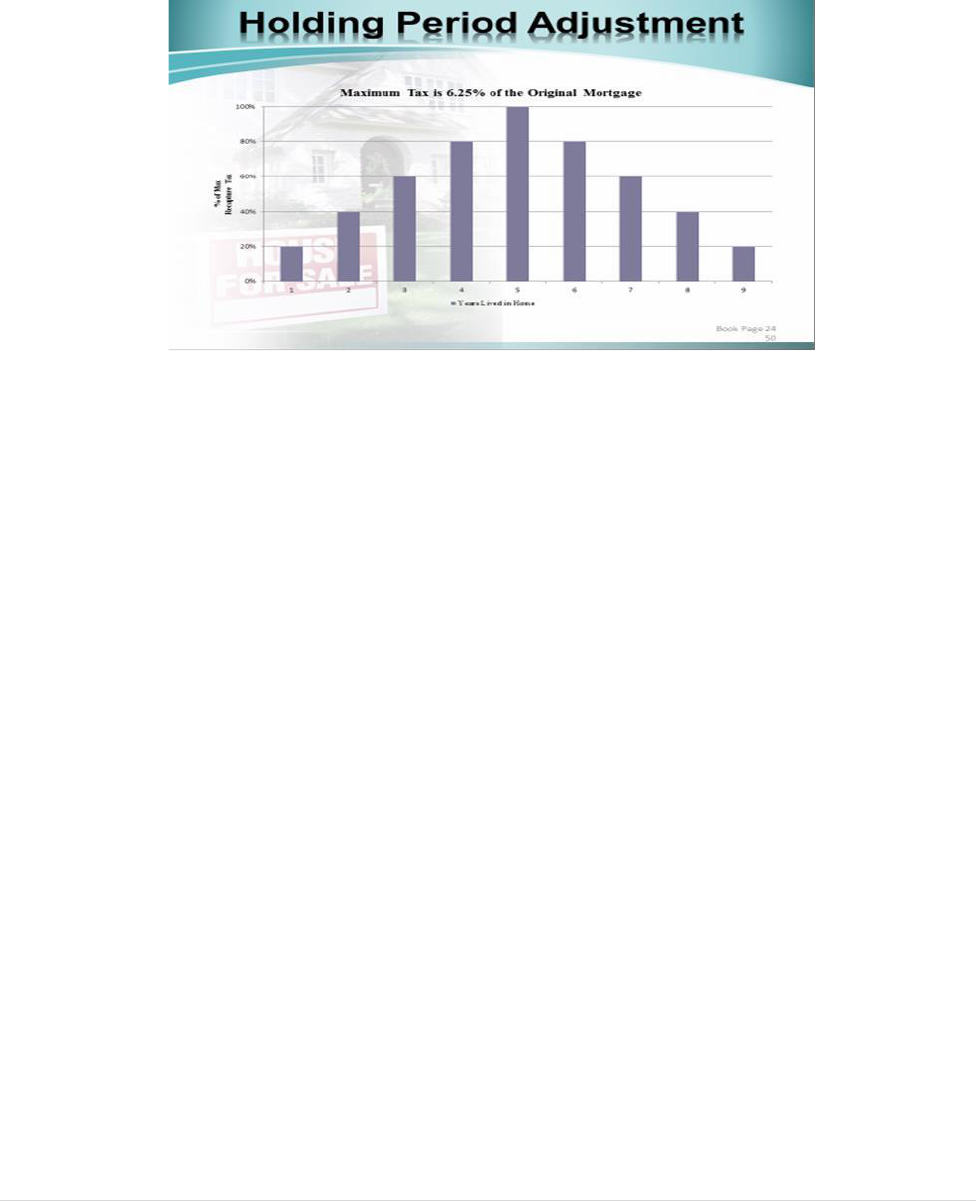
75 | P a g e R e v 4 / 2 0 2 2
a)
Holding Period Percentage
b)
Threshold Income (Adjusted Qualifying Income)
The highest federal family income (based on family size at the time of disposition) at the
date of the loan closing multiplied by 1.05 to the nth power, where n equals the number of
full years between the loan closing and the date of disposition.
c)
Maximum Recapture Amount
The federally-subsidized amount which is 6.25% multiplied by the original principal
amount of the mortgage, multiplied by the holding period percentage.
d)
Income Percentage
The modified adjusted gross income of the borrower for the taxable year in which the
disposition occurs minus the threshold income divided by 5,000.
e)
Adjusted Recapture Amount
The maximum recapture multiplied by the income percentage.
f)
Recapture
Equals the lesser of the Adjusted Recapture Amount, or one-half the gain realized on the
disposition.

76 | P a g e R e v 4 / 2 0 2 2
11.5
Recapture Examples
a)
Recapture Example 1
Mortgage Amount $ 108,800 $ 108,800 $ 108,800 $ 108,800 $ 108,800
Disposition Period
Family Size at Disposition
Owner’s Income at Disposition
Federal Income Limit
Realized Gain on Disposition
Threshold Income
Maximum Recapture
Income Percentage
Adjusted Recapture
Recapture Amount (lesser of
adjusted recapture or ½ gain
realized)
13 months
27 months
38 months
49 months
61 months
3
$ 62,000
$ 61,870
$ 10,000
$64,963.50
$ 2,720
0
$ 0
$ *0
3
$ 62,000
$ 61,870
$ 10,000
$71,622.26
$ 5,440
0
$ 0
$ *0
1
$ 59,000
$ 53,800
$ 10,000
$56,490.00
$ 2,720
.5020
$ 1,365.44
$ 1,365.44
3
$ 70,000
$ 61,870
$ 10,000
$64,963.50
$ 2,720
1.0
$ 2,720
$ 2,720
3
$ 62,000
$ 61,870
$ 10,000
$78,963.54
$ 5,440
0
$ 0
$ *0
*Owner’s income at disposition less than threshold income.
b)
Recapture Example 2
J, a single individual, purchases a home with a $110,000 loan. At the time of purchase, the
applicable income limit for small families (2 or fewer persons) was $71,600 and for large
families (3 or more persons) was $82,340. He marries S, and they have two children. They
sell their home 2 years and 2 months later and realize a gain of $15,000 on the sale of the
home. In the year of sale, J and S's household income (adjusted gross income plus tax-
exempt interest) is $92,000.
Threshold Income:
$82,340 x (1.05)
2
= $90,780
Holding Period Percentage
(from Table)
60% (.6)
Maximum Recapture:
$110,000 x .0625 x .6 = $4,125
Income Adjustment:
($92,000 - $90,780) / 5000 = .2440 (rounded down)
Income Adjustment
Calculation (not to exceed
1.0)
Recapture equals Income Adjustment x Maximum Recapture
Adjusted Recapture:
$4,125 x .2440 = $1,006.50
Recapture equals the lesser of Adjusted Recapture ($1,006.50), Maximum Recapture
($4,125), or one-half the gain on the house ($7,500).
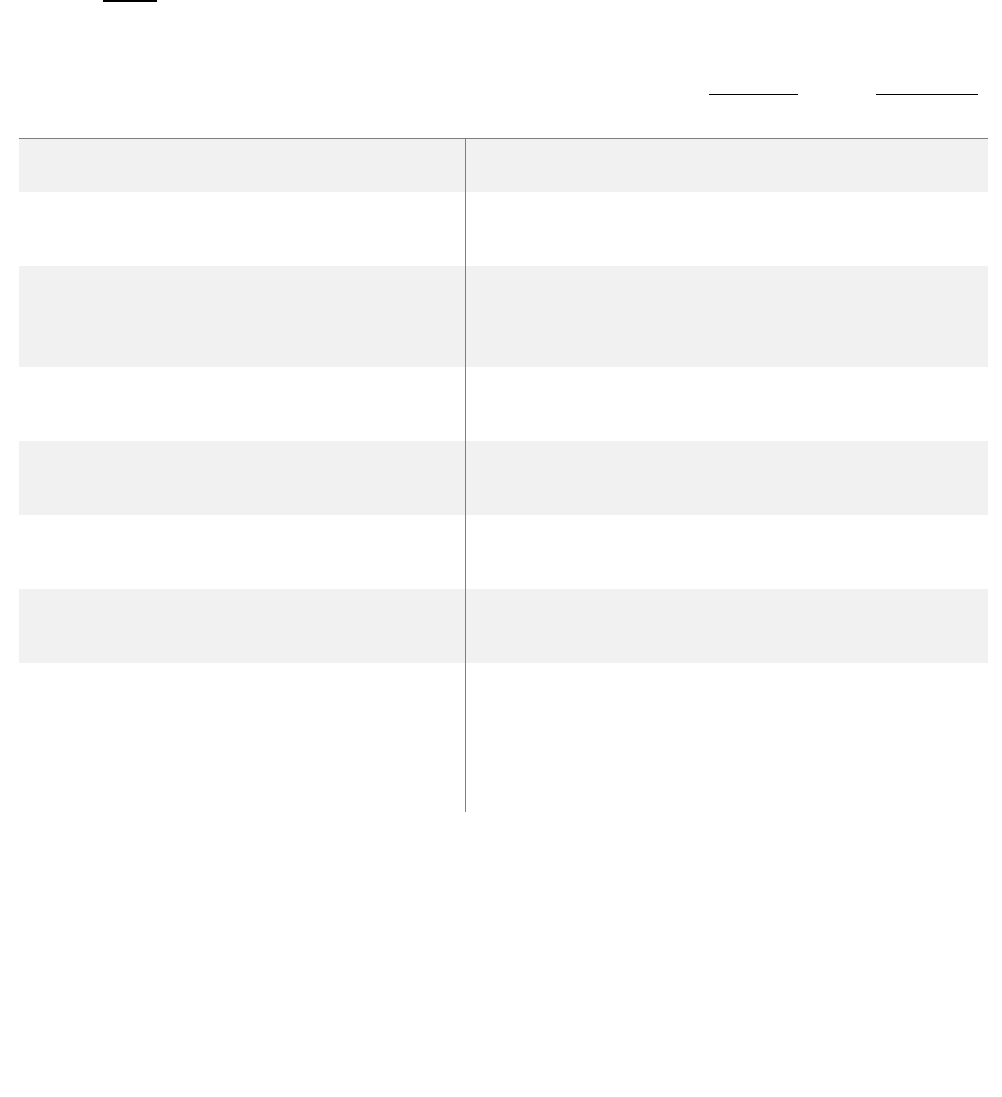
77 | P a g e R e v 4 / 2 0 2 2
11.6
Federal Subsidized Amount and Family Income Limits
a)
Adjusted Qualifying Income Family Members Living in the Home at the Time of
Sale (Example)
The maximum recapture tax that may be required in addition to federal income tax is
$7,375. This amount is 6.25% of the original principal amount of the mortgage loan and is
the federally subsidized amount with respect to the loan.
DATE HOME IS SOLD
HOLDING
PERIOD
PERCENTAGE
2 OR LESS
3 OR MORE
BEFORE THE FIRST ANNIVERSARY OF CLOSING (DECEMBER 1,
2007)
20%
$ 71,600.00
$ 82,340.00
ON OR AFTER THE FIRST ANNIVERSARY OF CLOSING
(DECEMBER 1, 2007), BUT BEFORE THE SECOND
ANNIVERSARY OF CLOSING (DECEMBER 1, 2008)
40%
$ 75,180.00
$ 86,457.00
ON OR AFTER THE SECOND ANNIVERSARY OF CLOSING
(DECEMBER 1, 2008), BUT BEFORE THE THIRD ANNIVERSARY
OF CLOSING (DECEMBER 1, 2009)
60%
$ 78,939.00
$ 90,780.00
ON OR AFTER THE THIRD ANNIVERSARY OF CLOSING
(DECEMBER 1, 2009), BUT BEFORE THE FOURTH
ANNIVERSARY OF CLOSING (DECEMBER 1, 2010)
80%
$ 82,886.00
$ 95,319.00
ON OR AFTER THE FOURTH ANNIVERSARY OF CLOSING
(DECEMBER 1, 2010), BUT BEFORE THE FIFTH ANNIVERSARY
OF CLOSING (DECEMBER 1, 2011)
100%
$ 87,030.00
$100,085.00
ON OR AFTER THE FIFTH ANNIVERSARY OF CLOSING
(DECEMBER 1, 20011), BUT BEFORE THE SIXTH
ANNIVERSARY OF CLOSING (DECEMBER 1, 2012)
80%
$ 91,382.00
$105,089.00
ON OR AFTER THE SIXTH ANNIVERSARY OF CLOSING
(DECEMBER 1, 2012), BUT BEFORE THE SEVENTH
ANNIVERSARY OF CLOSING (DECEMBER 1, 2013)
60%
$ 95,951.00
$110,343.00
ON OR AFTER THE SEVENTH ANNIVERSARY OF CLOSING
(DECEMBER 1, 2013), BUT BEFORE THE EIGHTH
ANNIVERSARY OF CLOSING (DECEMBER 1, 2014)
40%
$100,749.00
$115,860.00
ON OR AFTER THE EIGHTH ANNIVERSARY OF CLOSING
(DECEMBER 1, 2014), BUT BEFORE THE NINTH ANNIVERSARY
OF CLOSING (DECEMBER 1, 2015)
20%
$105,786.00
$121,653.00
Note: The closing date for the loan is December 1, 2006.
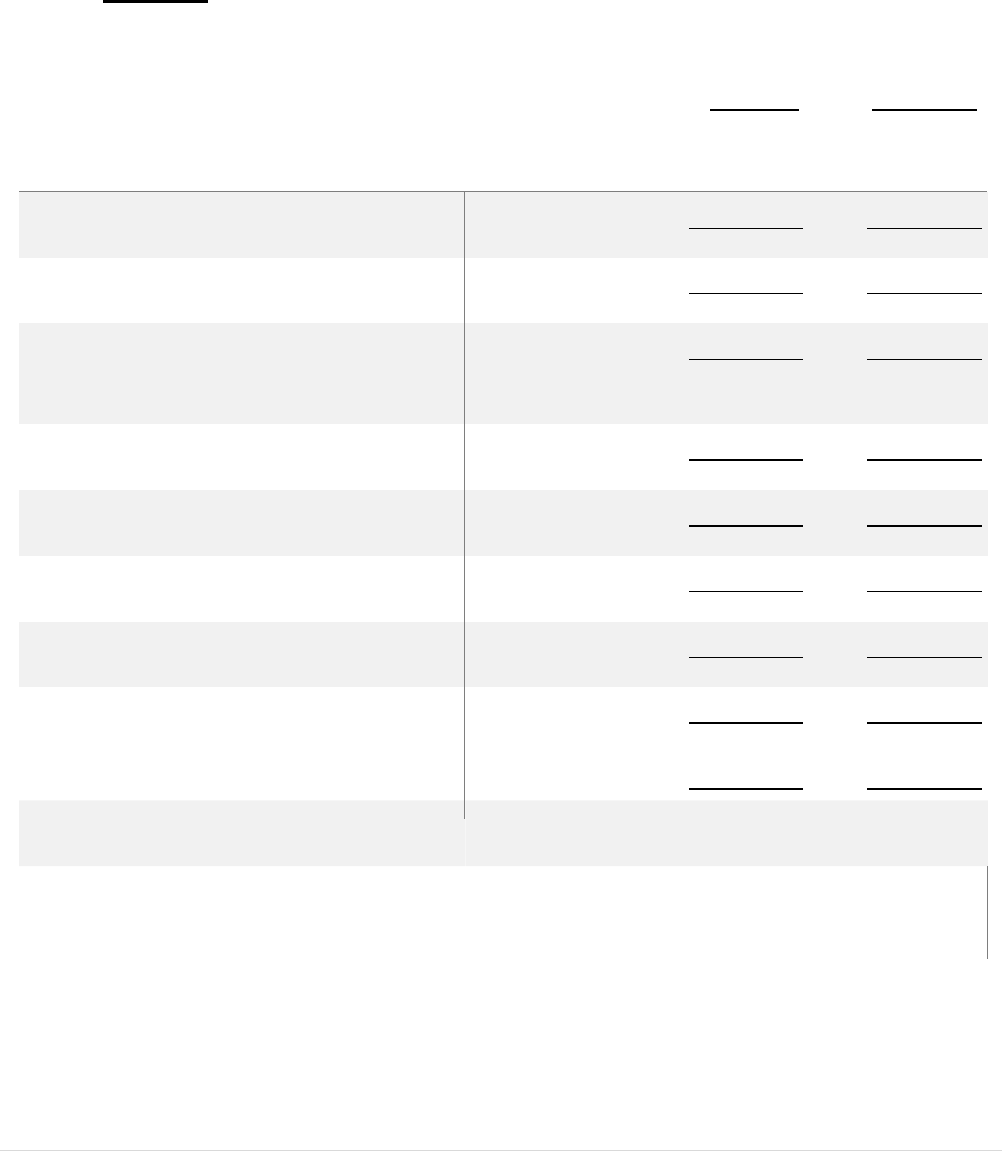
78 | P a g e R e v 4 / 2 0 2 2
Note: Closing means the closing date for the loan.
b)
Adjusted Qualifying Income Family Members Living in the Home at the Time of
Sale (blank)
The maximum recapture tax that may be required in addition to federal income tax is
$ . This amount is 6.25% of the original principal amount of the mortgage loan
and is the federally subsidized amount with respect to the loan.
DATE HOME IS SOLD HOLDING
PERIOD
PERCENTAGE
2 OR LESS 3 OR MORE
BEFORE THE FIRST ANNIVERSARY OF CLOSING (SEE NOTE
BELOW)
20%
$
$
ON OR AFTER THE FIRST ANNIVERSARY OF CLOSING, BUT
BEFORE THE SECOND ANNIVERSARY OF CLOSING
40%
$
$
ON OR AFTER THE SECOND ANNIVERSARY OF CLOSING,
BUT BEFORE THE THIRD ANNIVERSARY OF CLOSING
60%
$
$
ON OR AFTER THE THIRD ANNIVERSARY OF CLOSING,
BUT BEFORE THE FOURTH ANNIVERSARY OF CLOSING
80%
$
$
ON OR AFTER THE FOURTH ANNIVERSARY OF CLOSING,
BUT BEFORE THE FIFTH ANNIVERSARY OF CLOSING
100%
$
$
ON OR AFTER THE FIFTH ANNIVERSARY OF CLOSING, BUT
BEFORE THE SIXTH ANNIVERSARY OF CLOSING
80%
$
$
ON OR AFTER THE SIXTH ANNIVERSARY OF CLOSING, BUT
BEFORE THE SEVENTH ANNIVERSARY OF CLOSING
60%
$
$
ON OR AFTER THE SEVENTH ANNIVERSARY OF CLOSING,
40%
$
$
BUT BEFORE THE EIGHTH ANNIVERSARY OF CLOSING
ON OR AFTER THE EIGHTH ANNIVERSARY OF CLOSING,
20%
$
$
BUT BEFORE THE NINTH ANNIVERSARY OF CLOSING

79 | P a g e R e v 4 / 2 0 2 2
11.7
Recapture Calculation
a)
Recapture Calculation Worksheet (Example)
A
Maximum federal family income for area, year, family size
$ 54,500.00
B
Home was sold or transferred 3 years 4 months from the
date of original loan closing.
C
Amount in A x (1.05) to the nth power where n equals the number of full years
from B
= $ 63,090.56
D
Mortgagor(s) modified adjusted gross income for year in which house is sold
(Form 1040)
$ 65,000.00
(tax-exempt income)
+ 0 _ _
(gain on sale on home) (report on tax returns as capital gain only.)
- 0
(modified adjusted gross income)
= $ 65,000.00
E
If the amount in C is greater than or equal to the amount in D, no recapture; stop
here.
F
Original mortgage loan amount
$108,896.00
G
Applicable holding period percentage (year in which sale or disposition takes
place)
80%
Year 1 20%
Year 4 80%
Year 7 60%
Year 2 40%
Year 5 100%
Year 8 40%
Year 3 60%
Year 6 80%
Year 9 20%
H
Amount in F x 6.25% x percentage from G
= $ 5,444.80
I
The amount in D subtract the amount in C ÷ 5000 ($1909.44 ÷ 5000
) (use the lesser of the calculated % or 1% )
= .382%
J
The amount in H x I
= $ 2,079.91
K
Gain on sale of the home $10,000 x 50%
= $ 5,000.00
L
The recapture amount is the lesser of the amount in J or in K
= $ 2,079.91
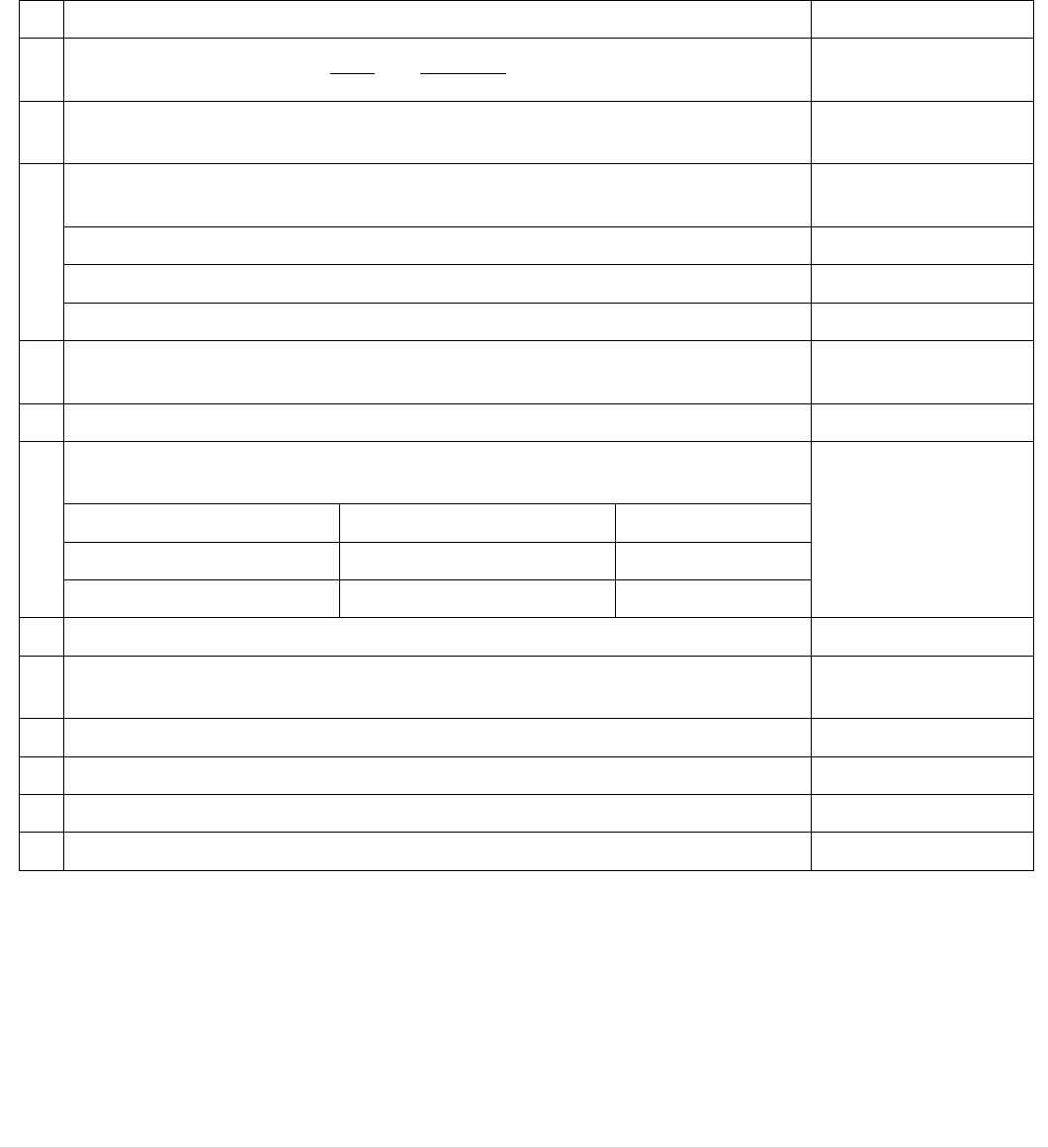
80 | P a g e R e v 4 / 2 0 2 2
b)
Recapture Calculation Worksheet (Blank)
A
Maximum federal family income for area, year, family size
$
B
Home was sold or transferred years months from the date of original
loan closing.
C
Amount in A x (1.05) to the nth power where n equals the number of full years
from B
= $
D
Mortgagor(s) modified adjusted gross income for year in which house is sold
(Form 1040)
$
(tax-exempt income)
+
(gain on sale on home) (report on tax returns as capital gain only.)
-
(modified adjusted gross income)
= $
E
If the amount in C is greater than or equal to the amount in D, no recapture; stop
here.
F
Original mortgage loan amount
$
G
Applicable holding period percentage (year in which sale or disposition takes
place)
%
Year 1 20%
Year 4 80%
Year 7 60%
Year 2 40%
Year 5 100%
Year 8 40%
Year 3 60%
Year 6 80%
Year 9 20%
H
Amount in F x 6.25% x percentage from G
= $
I
The amount in D subtract the amount in C ÷ 5000 (use the lesser of the calculated
% or 1% )
= %
J
The amount in H x I
= $
K
Gain on sale of the home $ x 50%
= $
L
The recapture amount is the lesser of the amount in J or in K
= $
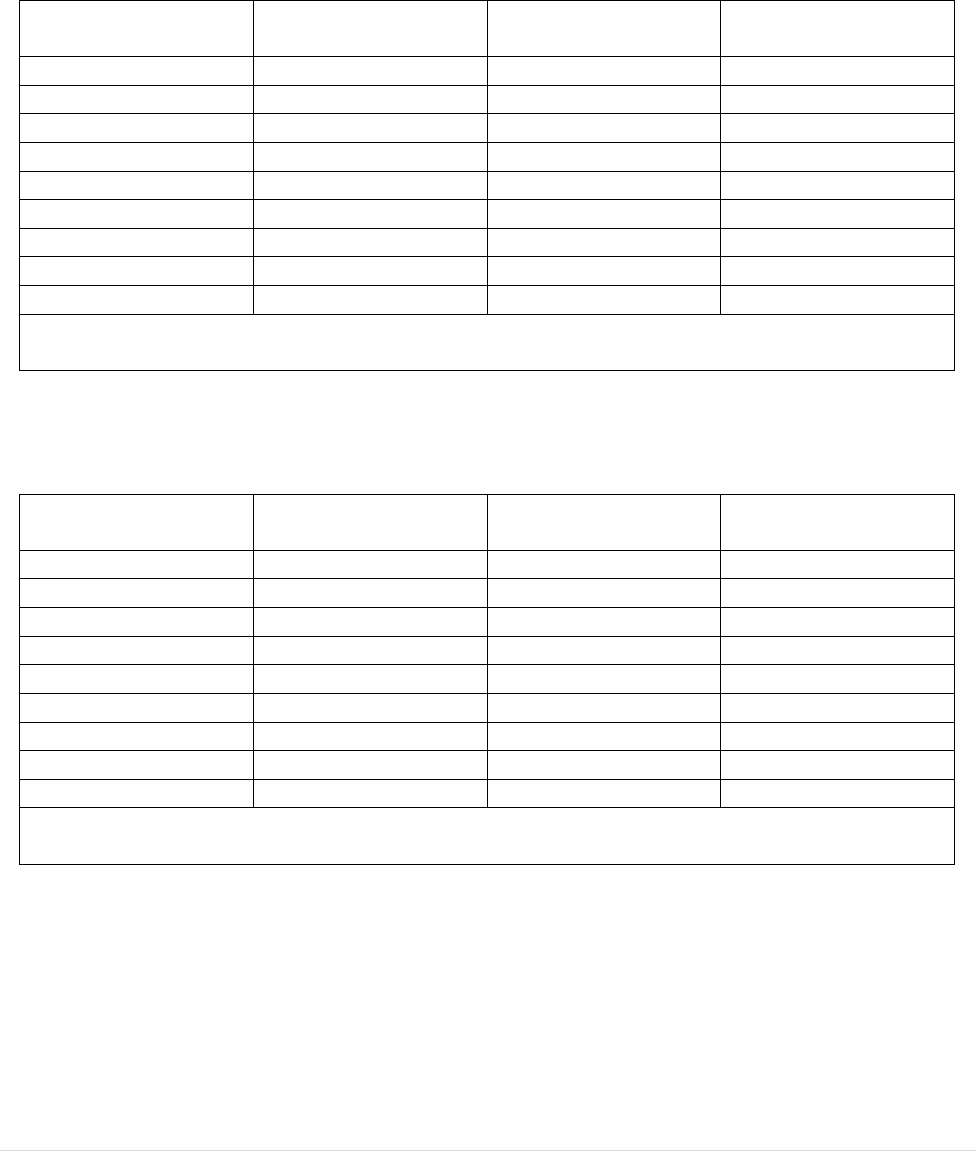
81 | P a g e R e v 4 / 2 0 2 2
11.8
Recapture Threshold Income
a)
Recapture Threshold Income Calculation (Example)
Holding Period*
Federal Income Limit
Multiplier
Threshold
1 years
$54,5000
x (1.05)
1
$57,225.00
2 years
$54,5000
x (1.05)
2
$ 60,086.00
3 years
$54,5000
x (1.05)
3
$63,090.56
4 years
$54,5000
x (1.05)
4
$66,245.09
5 years
$54,5000
x (1.05)
5
$69,557.35
6 years
$54,5000
x (1.05)
6
$73,035.21
7 years
$54,5000
x (1.05)
7
$76,686.97
8 years
$54,5000
x (1.05)
8
$80,521.32
9 years
$54,5000
x (1.05)
9
$84,547.39
* Number of full years between loan closing and the date of disposition.
b)
Recapture Threshold Income Calculation (Blank)
Holding Period*
Federal Income Limit
Multiplier
Threshold
1 years
$54,5000
x (1.05)
1
$
2 years
$54,5000
x (1.05)
2
$
3 years
$54,5000
x (1.05)
3
$
4 years
$54,5000
x (1.05)
4
$
5 years
$54,5000
x (1.05)
5
$
6 years
$54,5000
x (1.05)
6
$
7 years
$54,5000
x (1.05)
7
$
8 years
$54,5000
x (1.05)
8
$
9 years
$54,5000
x (1.05)
9
$
* Number of full years between loan closing and the date of disposition.
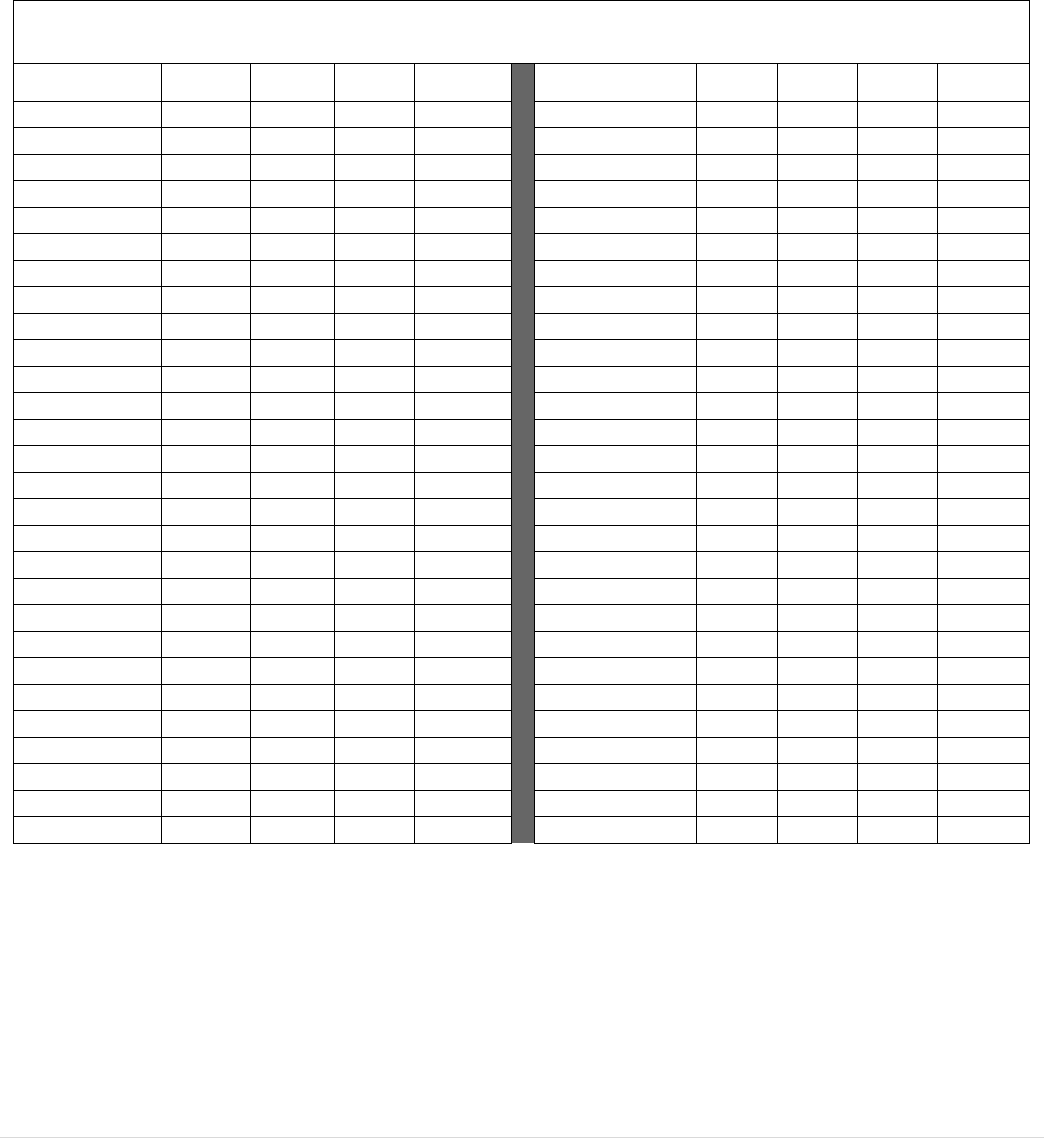
82 | P a g e R e v 4 / 2 0 2 2
11.9
Recapture Provision Federal Family Income Limits Table (Example)
Federal Income Limit Federal Income Limit
Small Family Large Family
2 or Less 3 or More
Small Family Large Family
2 or Less 3 or More
Counties
Non-
Target
Target
Non-
Target
Target
Counties
Non-
Target
Target
Non-
Target
Target
Alamance
$53,800
$64,560
$61,870
$75,320
Davidson
$53,800
$64,560
$61,870
$75,320
Alexander
$53,800
$64,560
$61,870
$75,320
Davie
$58,200
$69,840
$66,930
$81480
Alleghany
$53,800
$64,560
$61,870
$75,320
Duplin
$53,800
$64,560
$61,870
$75,320
Anson
$53,800
$64,560
$61,870
$75,320
Durham
$61,700
$74,040
$70,955
$86,380
Ashe
$53,800
$64,560
$61,870
$75,320
Edgecombe
$53,800
$64,560
$61,870
$75,320
Avery
$53,800
$64,560
$61,870
$75,320
Forsyth
$58,200
$69,840
$66,930
$81,480
Beaufort
$53,800
$64,560
$61,870
$7,5320
Franklin
$71,600
$85,920
$82,340
$100,240
Bertie
$53,800
$64,560
$61,870
$75,320
Gaston
$64,400
$77,280
$74,060
$90,160
Bladen
$53,800
$64,560
$61,870
$75,320
Gates
$53,800
$64,560
$61,870
$75,320
Brunswick
$53,900
$64,680
$61,985
$75,460
Graham
$53,800
$64,560
$61,870
$75,320
Buncombe
$53,800
$64,560
$61,870
$75,320
Granville
$53,800
$64,560
$61,870
$75,320
Burke
$53,800
$64,560
$61,870
$75,320
Greene
$53,800
$64,560
$61,870
$75,320
Cabarrus
$64,400
$77,280
$74,060
$90,160
Guilford
$56,400
$67,680
$64,860
$78,960
Caldwell
$53,800
$64,560
$61,870
$75,320
Halifax
$53,800
$64,560
$61,870
$75,320
Camden
$53,800
$64,560
$61,870
$75,320
Harnett
$53,800
$64,560
$61,870
$75,320
Carteret
$53,800
$64,560
$61,870
$75,320
Haywood
$53,800
$64,560
$61,870
$75,320
Caswell
$53,800
$64,560
$61,870
$75,320
Henderson
$53,800
$64,560
$61,870
$75,320
Catawba
$53,800
$64,560
$61,870
$75,320
Hertford
$53,800
$64,560
$61,870
$75,320
Chatham
$61,700
$74,040
$70,955
$86,380
Hoke
$53,800
$64,560
$61,870
$75,320
Cherokee
$53,800
$64,560
$61,870
$75,320
Hyde
$53,800
$64,560
$61,870
$75,320
Chowan
$53,800
$64,560
$61,870
$75,320
Iredell
$56,900
$68,280
$65,435
$79,660
Clay
$53,800
$64,560
$61,870
$75,320
Jackson
$53,800
$64,560
$61,870
$75,320
Cleveland
$53,800
$64,560
$61,870
$75,320
Johnston
$71,600
$85,920
$82,340
$100,240
Columbus
$53,800
$64,560
$61,870
$75,320
Jones
$53,800
$64,560
$61,870
$75,320
Craven
$53,800
$64,560
$61,870
$75,320
Lee
$53,800
$64,560
$61,870
$75,320
Cumberland
$53,800
$64,560
$61,870
$75,320
Lenoir
$53,800
$64,560
$61,870
$75,320
Currituck
$60,300
$72,360
$69,345
$84,420
Lincoln
$55,100
$66,120
$63,365
$77,140
Dare
$57,900
$69,480
$66,585
$81,060
Macon
$53,800
$64,560
$61,870
$75,320
Table continued on following page
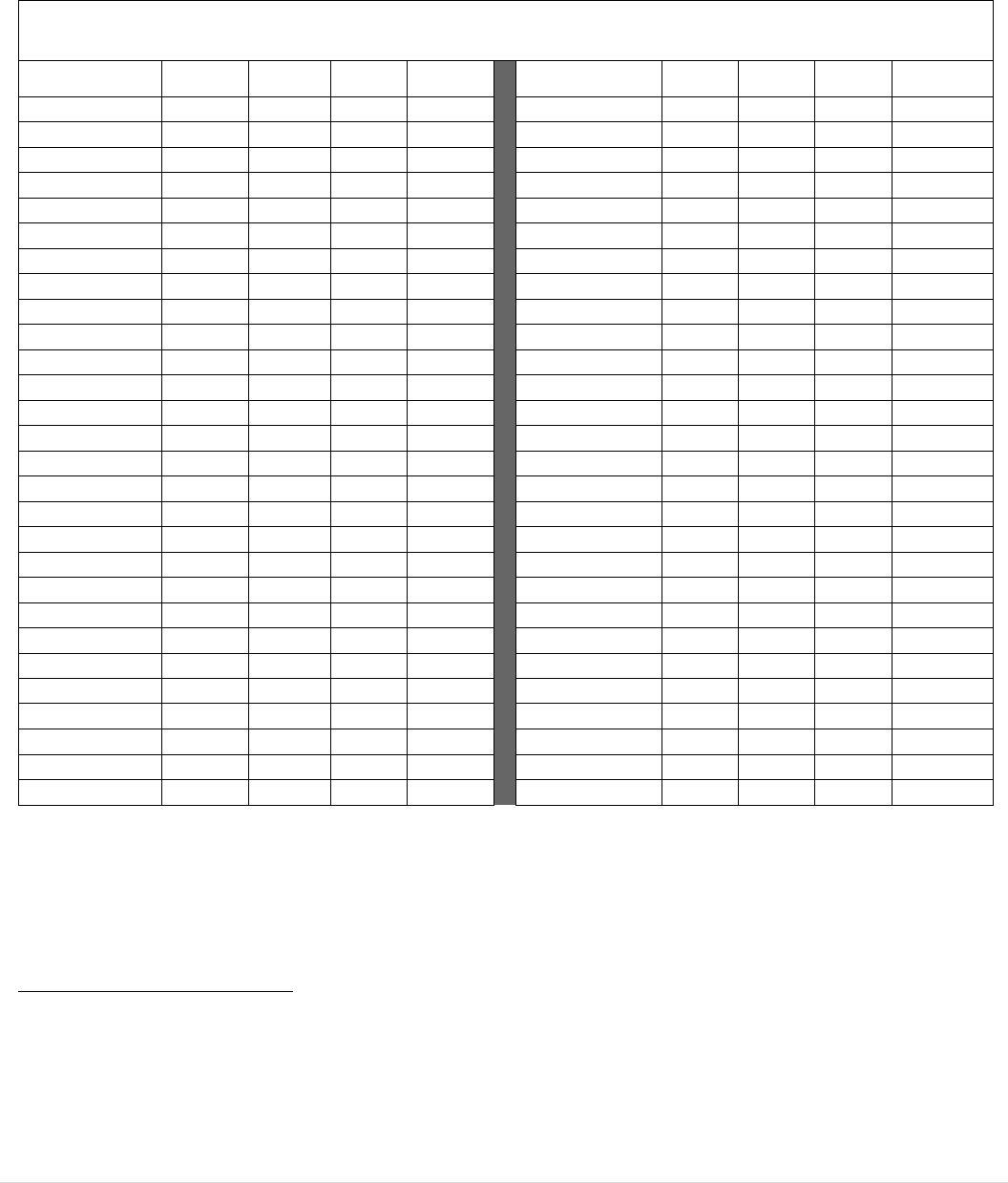
83 | P a g e R e v 4 / 2 0 2 2
Federal Income Limit Federal Income Limit
Small Family Large Family
2 or Less 3 or More
Small Family Large Family
2 or Less 3 or More
Counties
Non-
Target
Target
Non-
Target
Target
Counties
Non-
Target
Target
Non-
Target
Target
Madison
$53,800
$64,560
$61,870
$75,320
Stokes
$58,200
$69,840
$66,930
$81,480
Martin
$53,800
$64,560
$61,870
$75,320
Surry
$53,800
$64,560
$61,870
$75,320
McDowell
$53,800
$64,560
$61,870
$75,320
Swain
$53,800
$64,560
$61,870
$75,320
Mecklenburg
$64,400
$77,280
$74,060
$90,160
Transylvania
$53,800
$64,560
$61,870
$75,320
Mitchell
$53,800
$64,560
$61,870
$75,320
Tyrrell
$53,800
$64,560
$61,870
$75,320
Montgomery
$53,800
$64,560
$61,870
$75,320
Union
$64,400
$77,280
$74,060
$90,160
Moore
$56,300
$67,560
$64,745
$78,820
Vance
$53,800
$64,560
$61,870
$75,320
Nash
$53,800
$64,560
$61,870
$75,320
Wake
$71,600
$85,920
$82,340
$100,240
New Hanover
$53,900
$64,680
$61,985
$75,460
Warren
$53,800
$64,560
$61,870
$75,320
Northampton
$53,800
$64,560
$61,870
$75,320
Washington
$53,800
$64,560
$61,870
$75,320
Onslow
$53,800
$64,560
$61,870
$75,320
Watauga
$53,800
$64,560
$61,870
$75,320
Orange
$61,700
$74,040
$70,955
$86,380
Wayne
$53,800
$64,560
$61,870
$75,320
Pamlico
$53,800
$64,560
$61,870
$75,320
Wilkes
$53,800
$64,560
$61,870
$75,320
Pasquotank
$53,800
$64,560
$61,870
$75,320
Wilson
$53,800
$64,560
$61,870
$75,320
Pender
$53,800
$64,560
$61,870
$75,320
Yadkin
$58,200
$69,840
$66,930
$81,480
Perquimans
$53,800
$64,560
$61,870
$75,320
Yancey
$53,800
$64,560
$61,870
$75,320
Person
$53,800
$64,560
$61,870
$75,320
Pitt
$53,800
$64,560
$61,870
$75,320
Polk
$53,800
$64,560
$61,870
$75,320
Randolph
$56,400
$67,680
$64,860
$78,960
Richmond
$53,800
$64,560
$61,870
$75,320
Robeson
$53,800
$64,560
$61,870
$75,320
Rockingham
$53,800
$64,560
$61,870
$75,320
Rowan
$53,800
$64,560
$61,870
$75,320
Rutherford
$53,800
$64,560
$61,870
$75,320
Sampson
$53,800
$64,560
$61,870
$75,320
Scotland
$53,800
$64,560
$61,870
$75,320
Stanly
$53,800
$64,560
$61,870
$75,320
Note: Actual figures will be sent to mortgagors within 90 days of closing.
8
8
Information available at NCHFA’s website:
https://www.nchfa.com/sites/default/files/page_attachments/107RecaptureTaxClosingPacket.pdf
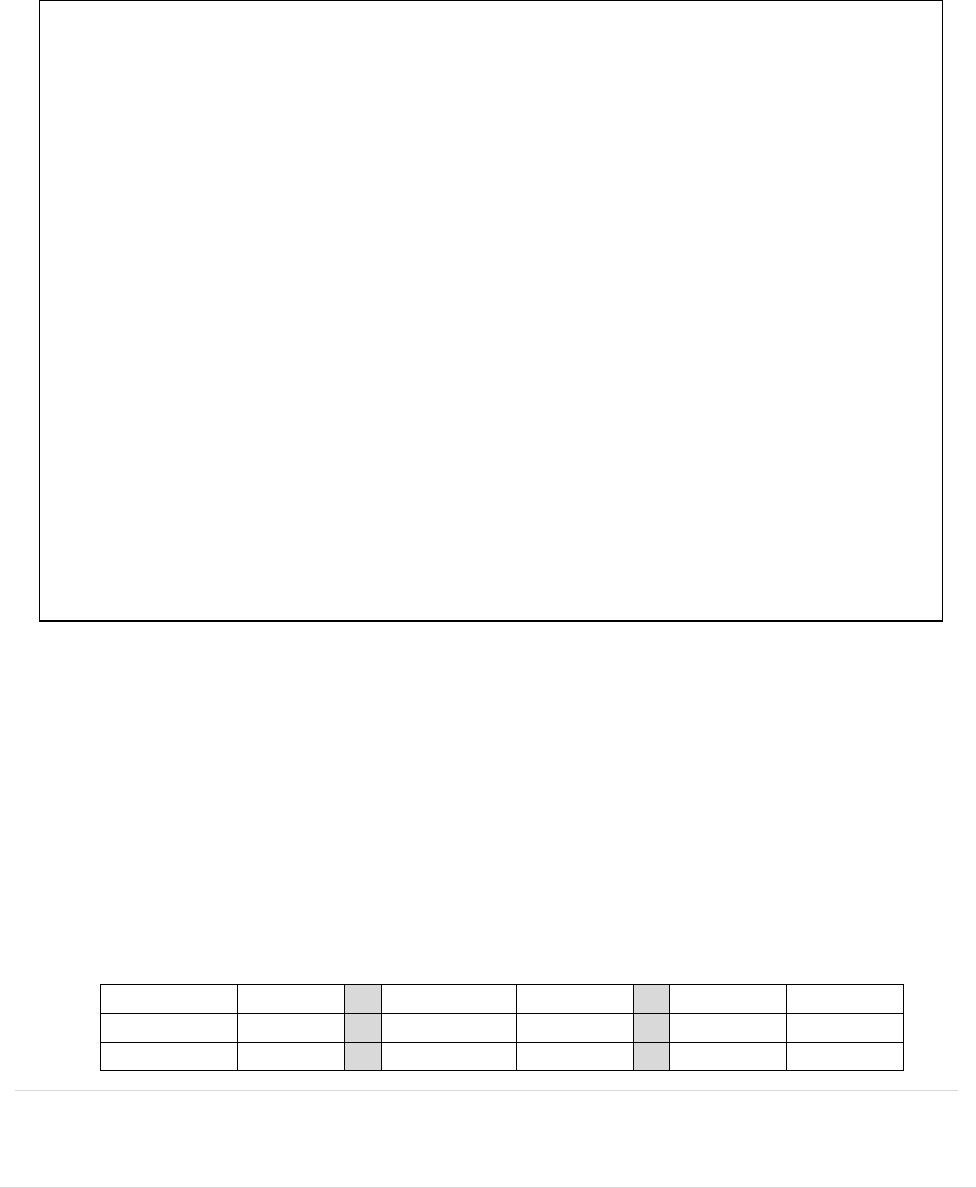
84 | P a g e R e v 4 / 2 0 2 2
11.10
Notice to Mortgagors of Potential Recapture of Federal Subsidy
The steps involved in the calculation of Recapture are defined below.
a)
Threshold Income (Adjusted Qualifying Income)
The highest federal family income, (based on family size at the time of disposition) at the
date of the loan closing multiplied by 1.05 to the n
th
power where “n” is the number of
full years between the loan closing and the date of disposition.
b)
Holding Period Percentage
The percentage is based on the year in which the disposition occurs after the loan closing
date according to the following table:
Year 1
20%
Year 4
80%
Year 7
60%
Year 2
40%
Year 5
100%
Year 8
40%
Year 3
60%
Year 6
80%
Year 9
20%
The below-market rate on your NC 1
st
Home Mortgage or Mortgage Credit Certificate has been
made possible through the use of tax-exempt bond authority by the North Carolina Housing
Finance Agency (NCHFA).
If you dispose of all or part of the interest in your home at a gain within nine years of the date of
loan closing, your federal income tax for the year in which the disposition occurs may be increased
by a portion of the federal subsidy received by you ('Recapture").
The recapture is accomplished by an increase in your federal income tax for the year in which you
sell your home. The recapture only applies, however, if you sell your home at a gain and IF your
income increases above specified levels.
Within 90 days of the loan closing NCHFA will provide you with a “Notice to Mortgagors of
Federally-Subsidized Amount and Family Income Limits.” This form contains information that
you will need to calculate the maximum amount that you may be required to pay as an addition to
your federal income tax liability if you dispose of all or part of the interest in your home. You may
wish to consult a tax advisor or the local office of the Internal Revenue Service at the time you sell
your home to determine the amount, if any, of the recapture tax. None of these calculations need
be made unless you dispose of an interest in your home within nine years from the date of closing.
The actual amount of Recapture can only be calculated at the time of disposition. Several steps are
required to calculate the actual Recapture amount. Adjustments may be made based on the number
of years the home is owned by you and your income at the time of disposition.
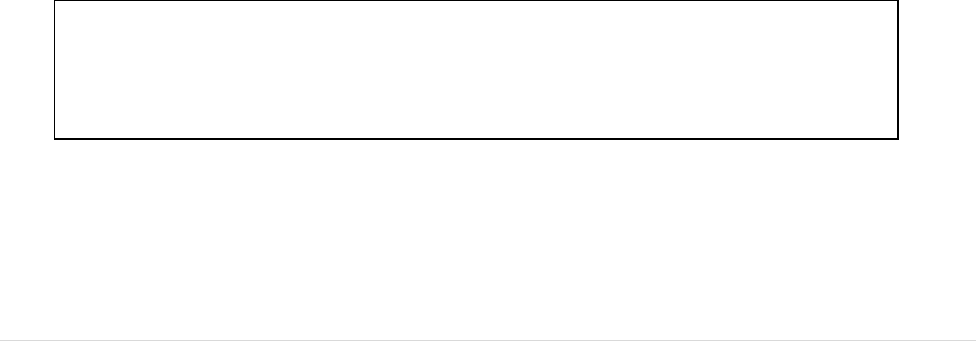
85 | P a g e R e v 4 / 2 0 2 2
c)
Maximum Recapture Amount
The federally-subsidized amount which is 6.25%, multiplied by the highest principal
amount of the mortgage, multiplied by the holding period percentage.
d)
Income Percentage
The modified adjusted gross income of the borrower for the taxable year in which the
disposition occurs minus the threshold income divided by a constant factor of 5,000.
e)
Adjusted Recapture Amount
The maximum recapture multiplied by the income percentage.
f)
Recapture
Equals the lesser of the Adjusted Recapture Amount, or one-half the gain realized on the
disposition. If the disposition occurs other than through a sale, exchange or involuntary
conversion, gain for purposes of Recapture will be determined as if the interest had been
sold for its fair market value on the date of disposition. Further, in the event your home is
destroyed by fire, storm, flood or other casualty, no Recapture will be required if you
purchase additional property for use as your principal residence on the site of the home
financed with this mortgage within the period of time specified in Section 1033 (a)(2)(B)
of the Internal Revenue Code.
This notice is furnished by the North Carolina Housing Finance Agency according to the
requirements of Section 143 (m)(7) of the Code. It should be kept by you with your
mortgage loan files. You should consult your own tax advisor regarding the calculation of
the Recapture amount if you dispose of any interest in your home within nine years of the
date of this notice.
11.11
Notice to Mortgagors of Maximum Recapture Tax and Method to Compute
Recapture Tax on Sale of Home
a)
General
If you sell your home within nine years after closing your mortgage, you may have to pay a
recapture tax as calculated below. The recapture tax may also apply if you dispose of your
home in some other way, for example, if you give your home to a relative. Any reference in
this notice to the “sale” of your home also includes other ways of disposing of your home.

86 | P a g e R e v 4 / 2 0 2 2
b)
Exceptions
In the following situations, no recapture tax is due:
• Home is sold or otherwise disposed of more than nine years after mortgage
closing.
• The home is disposed of as a result of mortgagor’s death.
• Transfer of home spouse or to former spouse incident to divorce and mortgagor
has no gain nor loss included in income under section 1041 of the Internal
Revenue Code.
• The home is disposed of at a loss.
c)
Maximum Recapture Tax
The maximum recapture tax that may be required is calculated in the enclosed notice. This
amount is 6.25% of the original principal amount of the mortgage loan, and is the federally
subsidized amount with respect to the loan. If recapture tax is due, the mortgagor would
pay it in addition to any federal income tax for the year in which the mortgagor disposed
of the home.
d)
Actual Recapture Tax
The actual recapture tax, if any, can only be determined when the home is sold. It is the
lesser of (1) 50% of any realized gain, regardless of whether the gain must be included in
income for federal income tax purposes, or (2) the recapture amount determined by
multiplying the following three numbers:
• The maximum recapture tax, as described above and as shown in the enclosure,
multiplied by
• The holding period percentage, as listed in the enclosure, multiplied by
• The income percentage

87 | P a g e R e v 4 / 2 0 2 2
e)
The income percentage is calculated as follows:
f)
Limitations and Special Rules on Recapture Tax
1.
Subtract the applicable “Adjusted Qualifying Income” in the taxable year
in which you sell your home, with the following two adjustments:
a.
your adjusted gross income must be increased by the amount of any
interest that you receive or accrue in the taxable year from tax-exempt
bonds that is excluded from your gross income (under section 103 of
the Internal Revenue Code); and
b.
your adjusted gross income must be decreased by the amount of any
gain included in your gross income by reason of the sale of your
home.
2.
If the result is zero or less, you owe no recapture tax.
a.
If it is $5,000 or more, your income percentage is 100%.
b.
If it is greater than zero but less than $5,000, it must be divided by
5,000.
3.
This fraction, expressed as a percentage, represents your
income percentage.
a.
For example, if the fraction is $1,000÷5,000, your income percentage
is 20%.
If you give away your home (other than to your spouse or ex-spouse incident to divorce), you
must determine your actual recapture tax as if you had sold your home for its fair market
value.
If your home is destroyed by fire, storm, flood, or other casualty, there generally is no
recapture tax if, within two years, you purchase additional property for use as your principal
residence on the site of the home financed with your original subsidized mortgage loan.
In general, except as provided in future regulations, if two or more persons own a home and
are jointly liable for the subsidized Mortgage loan, the actual recapture tax is determined
separately for them based on their interests in the home.
If you repay your loan in full during the nine year period and sell your home during this
period, your holding period percentage may be reduced under the special rule in Section
143(m)(4)(C)(ii) of the Internal Revenue Code.
Other special rules may apply in particular circumstances. You may wish to consult with a tax
advisor the local office of the Internal Revenue Service when you sell or otherwise dispose of
your home to determine the amount, if any, of your actual recapture tax. See Section 143(m)
of the Internal Revenue Code generally.

88 | P a g e R e v 4 / 2 0 2 2
g)
Recapture Reimbursement
NC 1
st
Home Advantage borrowers who pay Recapture tax to IRS will be reimbursed
upon application to NCHFA based on certain criteria (the $8,000 DPA loans only).
Requests must be made in writing to NCHFA within 2 years of the closing date of the
refinance transaction.

89 | P a g e R e v 4 / 2 0 2 2
Section 12: FAQ and $8,000 DPA Program Summary
12.1
Preliminary Lender Participation Guidelines
Participating lenders who have executed a Mortgage Origination Agreement (the
Agreement) with NCHFA and the Master Servicer may originate, close and fund 30-year
fixed-rate mortgages and deliver such mortgages for purchase to the Master Servicer
subject to the program eligibility of borrowers. FHA, VA, USDA, conventional, down
payment and credit underwriting guidelines will be used where applicable. In addition, the
Agreement with NCHFA and the Master Servicer permits participating lenders to originate
and close deferred subordinate mortgages, subject to the program eligibility of borrowers.
At their option, participating lenders may charge a 1% origination fee but no discount
points. In addition, the borrower may pay any normal and customary fees such as
application fee, survey fee, credit report fee, appraisal fee, insurance fee or similar
settlement or financing cost. In all cases the lender must meet RESPA rules, Dodd-Frank,
CFPB, and North Carolina lending laws regarding fees and charges. Total fees in Section
A of LE cannot exceed $1,300 + 1% origination.
Participating lenders must review, execute and understand the terms of the Mortgage
Origination Agreement with NCHFA and the Master Servicer and this Program Guide prior
to originating, processing, underwriting, closing and delivering mortgages for purchase
under the program.
12.2
Eligibility Criteria
1)
The mortgagor(s), a spouse, titleholders residing in the property, and any person who
intends to reside in the house with a property interest must meet published income
guidelines. Income limits for the NC 1
st
Home Advantage Down Payment Mortgage™
program vary by county and are dependent on family size.

90 | P a g e R e v 4 / 2 0 2 2
2)
Income limits vary by county and are subject to change. The income qualification for
the borrower(s) is based on the total, gross family income of all mortgagors and anyone
who may be secondarily liable. Spouses income must be included.
3)
The borrower(s) and titleholders residing in the property must be first-time homebuyers
or certain military veterans or purchasing in certain targeted census tracts.
4)
The borrower(s) must have a mid or low FICO credit score of 640 or higher. Each
Borrower must have at least two credit scores.
5)
The borrower(s) cannot have a DTI ratio that exceeds 45.0%.
6)
The home must be used as the borrower’s principal residence. (Please see Section 6 of
this Program Guide for a complete explanation.)
7)
All loans must be underwritten by the lender to meet FHA, VA, USDA, or Fannie Mae
HFA Preferred conventional established guidelines. For conventional loans, only
Desktop Underwriter (DU) findings will be accepted (LPA can only be used for Freddie
Mac conventional HFA Advantage loans and Closing Cost Assistance).
8)
All loans must receive a commitment from NCHFA prior to the participating lender
closing the loan.
9)
For conventional loans, any GSE and ServiSolutions approved PMI company may be
used.
10)
NCHFA reserves the right to request any additional documentation needed to make
an accurate determination on any given loan.
12.3
Down Payment Assistance ($8,000 DPA) Offered Under NC 1
st
Home Advantage
Down Payment Mortgage™
1)
The DPA is a 0% interest rate subordinate mortgage, deferred for the first 10 years and
forgiven at a rate of 20% per year at the end of years 11 through 15. If the first mortgage
loan is paid in full prior to the end of year 15, the borrower must repay the un-forgiven
portion of the DPA.
2)
The DPA may be used for down payment assistance, closing costs, and pre-paid items.
DPA cannot be used to cover negative equity in the property. DPA cannot be used to
pay extension fees, or to pay off debts, collections or judgements.
3)
The borrower may contribute their own additional cash resources for down payment
and closing costs as allowed by FNMA, FHA, VA, or USDA guidelines.
4)
A separate Loan Estimate (LE) for the subordinate mortgage is required.
5)
The lender will fund the first mortgage and the DPA directly at closing.

91 | P a g e R e v 4 / 2 0 2 2
12.4
Closing/Purchase Guidelines
1)
The maximum allowed cash back cannot exceed $2,500 and must be from verified
POCs paid into transaction by borrower(s). Lender credits are allowed; however,
neither NCHFA nor ServiSolutions pays lender credits. Total fees in Section A of LE
cannot exceed $1,300 + 1% origination.
2)
Borrower(s) may contribute additional cash resources for closing costs and/or prepaid
items from their own verified funds.
3)
All loans must be purchased by the Master Servicer. Upon purchase, the Participating
Lender will be paid lender compensation inclusive of SRP, by the Master Servicer upon
purchase of the loan based on the first loan amount. Any extension fees and mark-to-
market fees are reduced from lender compensation at the time of purchase.
4)
All 1
st
lien loans locked through NCHFA must close in the name of the Participating
Lender in which the lock was made. DPA mortgages close in the name of NCHFA.
5)
In order for the loan(s) to be purchased, it must be current in payments of principal and
interest, be approved by NCHFA, and be in compliance with the applicable
requirements of FHA, VA, USDA, PMI insurer, GNMA, FNMA, and/or Freddie Mac.
12.5
Operations Process
1)
Participating Lenders can only submit lock requests via OLS for this program on
business days between the hours of 9:00 am and 6:00 pm E. T. During periodic rate
updates, OLS will not be able to accept locks.
2)
Interest rates for the program will appear on the NCHFA website. When a Participating
Lender locks a loan via OLS, the lock confirmation will reflect the current interest rate
in effect for that loan.
3)
A participating lender must be approved by NCHFA and the Master Servicer.
4)
The purchase of the loan by the Master Servicer must occur by the Lock-In Expiration
Date. If the complete closing package in the proper stacking order has been received
by the Master Servicer by the Lock-In Expiration Date, the lock will automatically be
granted 7-day extensions until the loan is purchased. If the complete closing package
has not been received by the Master Servicer by the Lock-In Expiration Date, the lender
may request an extension via OLS prior to the expiration date. If the lock is extended,
it is subject to extension fees.
If the loan is not extended and expires, it is subject to a mark-to-market fee if loan is
purchased by the Master Servicer. Extension fees and mark-to-market fees are deducted
from lender compensation at time the loan is purchased by the Master Servicer.
5)
The Participating Lender must upload any requested conditions to NCHFA via OLS.
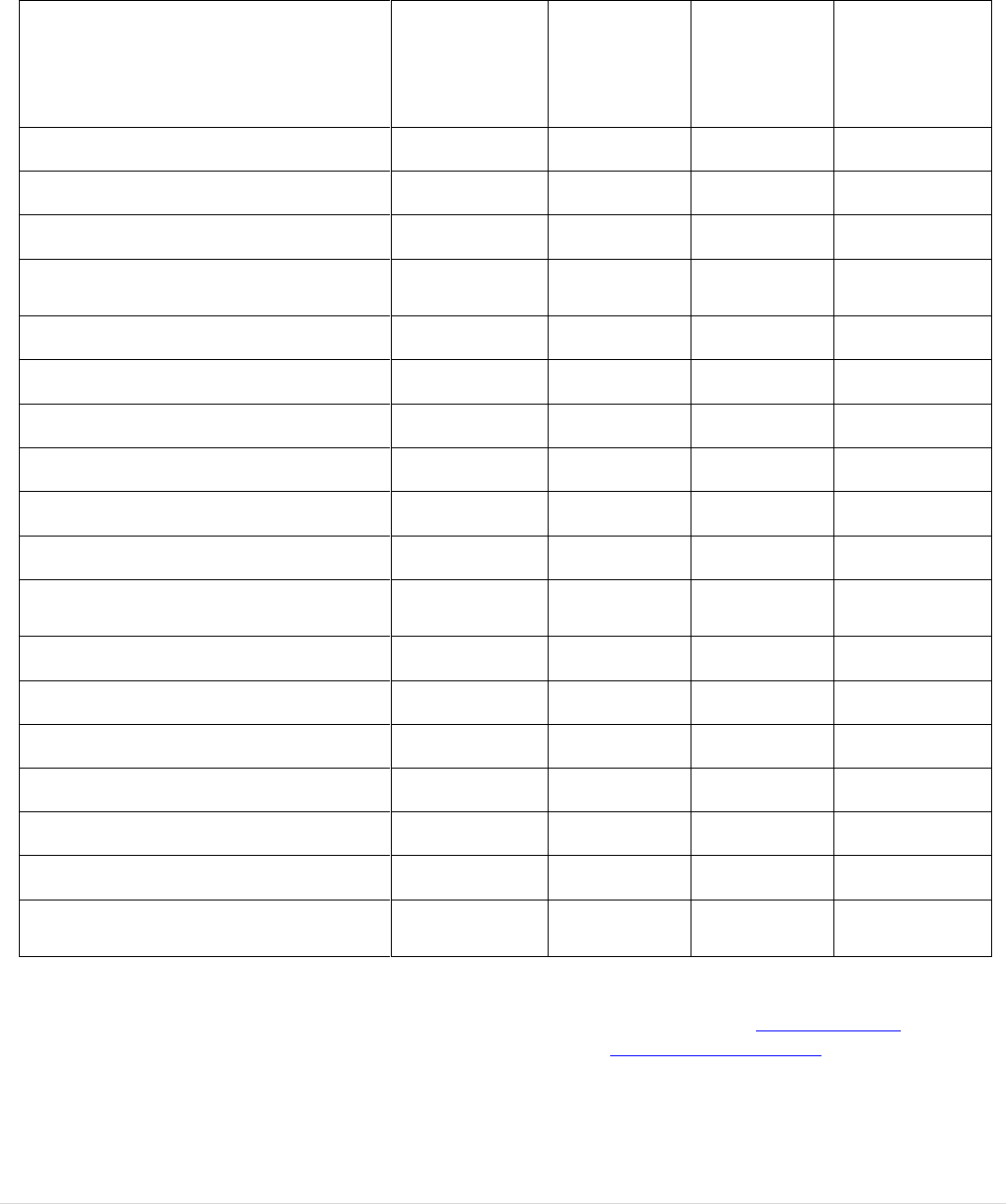
92 | P a g e R e v 4 / 2 0 2 2
12.6
Documentation Matrix - NC Home Advantage Mortgage™ & MCC-Assisted Loans
Documents Submitted for Loan
Approval by NCHFA
(Note: Additonal docs will be needed
for Closing Package sent to Servicer)
NC Home
Advantage
Mortgage™
(97% LTV,
3% or 5%)
NC Home
Advantage
Mortgage™
with MCC
MCC Only
NC 1
st
Home
Advantage
Mortgage
(e.g., $8,000)
Form 08 – Underwriter Certification
X
X
X
Final AUS findings
X
X
X
Final Application (1003)
X
X
X
X
URAR Appraisal, PDF, Color – Subject
Property
X
X
X
X
All VOE’s for current employment
X
X
X
Credit Report(s)
X
X
X
Other income documentation
X
X
X
Last Year’s W-2 and/or 1099’s
X
X
X
Last 3 years tax returns/IRS Transcript
X
X
X
Form-013: Seller Affidavit
X
X
X
Form-015: Preliminary Notice to
Applicants of Potential Recapture
X
X
X
Form-016: Mortgage Affidavit
X
X
X
Form-026: Notice to Borrower
X (w/ DPA)
X (w/ DPA)
X
Form-101: Borrower Closing Affidavit
X
X
X
Form-102: Lender Closing Affidavit
X
X
X
Loan Estimate (LE) on 1
st
X
X
X
Loan Estimate (LE) on 2
nd
(DPA)
X
X
X
Pre-purchase education (only if all
borrowers are first-time homebuyer)
X
X
X
Note: The lender must close the NCHFA DPA subordinate mortgage in NCHFA’s name and utilize
NCHFA’s Deed of Trust (Form 405) and Promissory Note (Form 406), available at www.nchfa.com.
Closing documentation required by ServiSolutions are available at http://www.servsol.com.

93 | P a g e R e v 4 / 2 0 2 2
12.7
Frequently Asked Questions
1)
Can I reserve a loan online without locking in a rate? Do you offer a float option?
A.
No. The loan and rate will be locked upon completion of the lock process using
OLS. There is no float option. In addition, if the lock process is not completed to
the point of the submission of the rate lock, the data will not be saved. Therefore,
all data should be ready to enter at the time of rate lock.
2)
What happens if my borrower is locked into a rate, and the market rates decline?
A.
Rates are locked upon receipt of the lock confirmation. Borrowers cannot withdraw
and re-lock at a lower rate. A borrower must wait 60 days after the
withdrawal/cancellation of a lock before s(he) may re-lock under the NC Home
Advantage Mortgage™ program.
3)
When should I lock in the interest rate?
A.
Lenders should only lock their loans after a full underwrite has occurred by their
internal underwriting staff. At a minimum, loans should be locked only after credit,
AUS Findings and an appraisal are completed. The loan must be purchased by
Master Servicer (ServiSolutions) within the 60 lock period to avoid penalties.
4)
My borrowers decided not to buy the property for which a rate has been locked. Instead,
they want to buy a different property. Market rates have changed since the initial lock-
in. Does the borrower retain the old interest rate lock and Lock-In Expiration Date, or
does the borrower get a new interest rate lock at today’s rates, with a new 60-day Lock-
In Expiration Date?
A.
Borrowers may only be allowed to re-lock if the original subject property has
changed and verification of changed property is provided. Rates and current
program guidelines in effect the day of new lock apply.
5)
The original lock-in data included two borrowers. Now, one of the borrowers will not
be on the loan after all. How do I correct OLS?
A.
The lender must contact NCHFA for all changes to locked loans.
6)
My borrower is currently locked in for an NC Home Advantage Mortgage™ loan with
DPA using an FHA-insured loan. My borrower now wants to change the loan type to
conventional. Can I do that and keep the same interest rate and expiration date?

94 | P a g e R e v 4 / 2 0 2 2
Borrowers may change loan program types; however, the original Lock-In Expiration
Date still applies. If the loan type changes, the interest rate will be determined based on
date of original lock-in date with NCHFA.
7)
My borrower is using the NC 1
st
Home Advantage Down Payment Mortgage™. How
do I calculate the DPA loan amount?
A.
The full $8,000 is required to be used regardless of loan amount.
8)
My borrower is buying a “fee simple townhome.” Is he/she eligible for a conventional
NC Home Advantage Mortgage™?
A.
Townhomes are acceptable. Condominiums are eligible for conventional financing
and must meet all Fannie Mae or Freddie Mac guidelines.
9)
Our underwriter denied the mortgage loan based on information included in the under-
writing file. Once the loan was denied, I withdrew the loan from OLS. We have been
able to more fully document the underwriter’s concern, and a loan approval has now
been issued. Now that the loan has been approved, how do I re-establish the lock-in?
Does the borrower still receive the original lock-in rate, or do current market conditions
apply?
A.
The borrower(s) must wait 60-days from withdrawal date in the system to re-lock.
10)
The first mortgage loan amount has changed from what I locked in. How do I change
the information in OLS?
A.
The lender must contact NCHFA to make any changes to an existing loan lock –
[email protected]. Interest rate may be affected by area median incomes below
or above 80% AMI on conventional loans.
11)
When are Tax Transcripts required and for whom?
A.
The NC 1st Home Advantage $8,000 DPA requires the past three (3) years of
federal tax transcripts or valid, signed tax returns for all borrower(s) and/or
mortgagors.
12)
For a conventional loan, what MI coverages are required under the program used by
NC 1
st
Home Advantage Mortgage™?
A.
MI coverage is based on LTV and area median income (AMI).

95 | P a g e R e v 4 / 2 0 2 2
The table below shows the required coverage for Fannie Mae’s HFA Preferred product (subject to
change at any time, refer to final AUS Findings. Freddie Mac loans capped at 80% AMI.
Loan to Value
MI Factor (DU, Fannie Mae,
AMI Over 80% AMI)
MI Factor (DU, Fannie Mae,
AMI Under 80% AMI)
95.01-97%
35%
18%
90.01-95%
30%
16%
85.01-90%
25%
12%
80.01-85%
12%
6%
13)
We will not be able to have the loan purchased by the Master Servicer by the Lock-In
Expiration Date. What do I do? Are there any penalties?
All loans must be purchased by the Master Servicer by the Lock-In Expiration Date. If
the loan is not able to be purchased by the Master Servicer by the Lock-In Expiration
Date, the lender may request an extension via OLS prior to the expiration date, and the
loan will be subject to extension fees. If the lock is not extended, it will be subject to a
mark-to-market fee if the loan is purchased by the Master Servicer. Maximum lock-in
is 90 days. Loans past 90 days from original lock-in date may be charged mark-to-
market fees. See Section 10 of Program Guide for details.
The loan must be purchased by ServiSolutions by day 40 after loan closing to avoid a
late delivery fee. A late delivery fee of .5% will be assessed by ServiSolutions for all
loans purchsed from day 41 through day 70. On day 71 after closing, the loan will no
longer be eligible for purchase by ServiSolutions and all documents received by
ServiSolutions will be returned to the originating lender. See Section 9 for full details.
Lender will be responsible for both the 1
st
and 2
nd
loan if not purchased by Master
Servicer, and will not be reimbursed.

96 | P a g e R e v 4 / 2 0 2 2
Index
1003, 24, 29, 42, 41, 87
401k, 53
Acreage, 38
AirBnB, 25
ALTA, 37
AMI, 24, 25, 31, 89, 90, 98
APOR, 12, 24, 99
Appraisal, 37
AUS, 12, 22, 23, 24, 27, 34, 35, 41, 42, 41, 50, 87,
88, 90
Award Letter, 12, 24, 29, 42, 40
Bankruptcy, 35
bitcoin, 27
Business Use, 38
Cash Back, 27
CD, 42
Closing Cost Assistance, 31
Closing Date, 65
Closing Disclosure, 16, 28, 42
Collections, 35
Condos, 36
Co-signors, 32, 54
Credit Score, 34
CU Risk Score, 38
DD214, 32
deductibles, 43
DTI, 12, 22, 23, 24, 41, 58, 85, 93
Electronic Signatures, 43
Escrows, 37
e-Signature, 43
e-signatures, 43
Fannie Mae, 13, 14, 17, 21, 24, 25, 27, 31, 33, 40,
42, 85, 89, 90, 99
Final Docs, 21
Flip Properties, 35
Foreclosures, 35
Form - 016, 52
Form 1017, 33
Form 405, 29, 41, 61, 62, 63, 87
Form 406, 29, 41, 62, 63, 87
Form-018, 47
Freddie Mac, 12, 13, 14, 17, 21, 24, 25, 33, 34, 42,
85, 86, 89, 90, 98
Funding Date, 65
Gift funds, 29
GUS, 24, 34, 35, 41
Hazard, 43
HFAAdvantage, 24
HPML, 25
Insurance, 43
interest credit, 42
Interest Credit, 42
Interim Servicing, 42
IRS form 8453, 47
IRS liens, 35
IRS Recapture, 66
ITIN, 48
LE, 30
Legally Enforceable Obligation Letter, 29
Lender Compensation, 21
LLPA, 31
manufactured homes, 37
Manufactured homes, 36
Master Servicer, 10, 12, 13, 14, 15, 16, 17, 18, 19,
20, 21, 22, 24, 25, 26, 27, 29, 31, 37, 40, 41, 42,
49, 55, 56, 57, 59, 61, 62, 63, 64, 65, 84, 86, 88,
90
Modular homes, 36
mortgage insurance, 14, 15, 27, 30, 36, 40
Mortgage Insurance, 25, 61, 64
mortgagor, 13, 15, 16, 22, 34, 41, 54, 66, 67, 81,
84
MRB, 22
Non-arms-length, 35
non-occupant borrowers, 54
non-traditional credit, 35
OLS, 18
Origination Fee, 30
permanent legal residents, 32
PMI, 14, 15, 25, 27, 29, 40, 61, 85, 86
POA, 15, 43, 44
Power of Attorney, 43
Pre-Purchase Education, 33
Promissory Note, 23, 28, 29, 41, 44, 62, 63, 87
QM, 24
Ratios, 34
Recertification, 19
Record Retention, 20
Refer, 23
Rental, 38
Repairs, 26
RESPA, 16, 28, 55, 84
secondarily liable, 48, 54
Secondarily Liable, 34
Section 8, 34
SFC, 24

97 | P a g e R e v 4 / 2 0 2 2
SFC 184, 33
Short Sales, 35
SRP, 21
Subordination, 30
titleholder, 13, 46, 47, 50, 62
Titleholder, 16, 34, 40, 46
Townhomes, 36
Transcripts, 46
UETA, 43
URAR, 38
USDA, 24
VA, 24
Veterans, 32
warrantable, 36

98 | P a g e R e v 4 / 2 0 2 1
Major Revisions History
July 8, 2017:
1.
Added 7.5 - Electronic Signatures Policy
2.
Updated Sales Price limit to $250,000 in $15k section
August 29, 2017:
Definitions
3.
Extension Fees – Changed to .25% effective September 1, 2018
4.
First Time Homebuyer added
5.
Free-trader Agreement added
6.
Seller Contribution added
Section 4
4.2 – added “only 1 NCHFA loan at a time”.
4.2
– 4 - HFA preferred access clarified
Escrow Holdbacks and Repairs clarified
4.3
– Added 203k as ineligible loan type
4.4.1 – DPA cannot be used to cover negative equity
Section 5
5.2 – Clarified Pre-Purchase education requirement
Section 7
7.2
– Added Review Time – 48 hours
7.3
– Added Perfect Submission
7.4
– Added Interest Credit
7.5
- Added DOT
7.6
- Added Power of Attorney
7.7
- Added Free Trader
Section 8
8.1 A.3 – Loans...may not be eligible for purchase
Section 9
9.1 – Changed Extension fee to .25%
Appendix A – NC Home Advantage Mortgage Summary
1.
Down Payment Assistance -2 – DPA cannot be used for negative equity
2.
Closing/Purchase guidelines – 1 – Added POCs for cash back at closing
Removed Section 11 - $15k DPA Option
September 26, 2017:
Section 4
1.
4.7 – Subordination Policy defined
All Sections – DTI increased to 43%
Section 8
1. 8.2 – XML File upload added

99 | P a g e R e v 4 / 2 0 2 1
September 29, 2017:
Definitions updated
1.
Removed Substitute TIL
2.
Removed TIL
Section 7
1.
7.4.4 – Changed LE information and fees allowed
2.
7.5 – Added LE required as #4.
3.
7.5 – Changed Note to reflect new LE requirement
Program Summary – Removed language about APR not allowed to exceed “0”%
Document Submission Matrix – Removed TIL
October 9, 2017:
Section 7 – 7.5 Added URAR – Uniform Residential Appraisal Report
November 21, 2017:
Added new policy on POAs being acceptable.
January 26, 2018:
Section 4 – 4.3 – Added Rebuttable Presumption
Section 8 – 8.1 – C 5 - changed Tax service fee to 71.50
8.3.7 – added Rebuttable Presumption not allowed
February 18, 2018:
Section 10 – NC 1
st
Home Advantage Down Payment added to Program Guide
April 28, 2018:
-
Section 8: Added non-warranty deed exception and free-trader requirement
-
Section 4.7: Added lien position requirement for NCHFA loans being in 2
nd
position
May 21, 2018:
The following changes apply to the entire document
• Edited for grammar, typos, punctuation and formatting consistency
• Created text box to pull out 2
nd
-person instructions
• Added dynamic Table of Contents
• Formatted headings, sections and lists
• Moved Program Summaries and FAQs to earlier in the document
• Revamped Section 12 (Recapture) to better align with rest of document
• Suggest creating flow chart for late fees
August 28, 2018
-
Removed Early Default document
-
Clarified Citizenship eligibility
-
Added ServiSolutions requirement for 1-year tax transcripts for borrowers for
post-closing audits.

98 | P a g e R e v 3 / 2 0 2 2
-
added IRS tax liens not allowed.
September 26, 2018
-
Section 9.1 - Clarified allowable circumstances for Extension fees to be paid by
borrower
October 5, 2018
-
Added “Color” to appraisal requirement
December 21, 2018
-
New fee structure from Alabama
-
Max cash back of $1,000
-
Added form08, Underwriter Certification
-
Removed UCD XML upload requirement.
-
Added two-step process for upload of closing file to NCHFA and Alabama.
January 23, 2019
-
Section 8.1 – C 4 – updated Tax Service fee
January 31, 2019
-
Created separate $8,000 manual.
-
Removed all references to 3% and 5% programs.
-
Clarified closing date/recording date/funding date.
-
FHA does not allow DACA as an eligible borrower status.
May 10, 2019
-
Section 7 revised who signs Deed of Trust. Non-borrowing spouse not required.
-
$1,000 limit on hazard for USDA loans per ServiSolutions.
-
Added $1,500 and $2,500 closing cost assistance option
June 17, 2019
-
Updated TBA income limits
September 24, 2019
-
Updated sales price limit to $275,000
-
Update MI factors chart for AMI and Freddie Mac
June 2020
-
Addition of secondarily liable and family income definitions
-
Credit report required
-
Sales price $290,000

99 | P a g e R e v 3 / 2 0 2 2
January 11, 2021
-
Updated Insurance Deductible to align with ServiSolutions Sect 7.
-
Updated QM change Sect 4.3
March 3, 2021
-
Updated # of allowed NCHFA products at one time Sect 4.3
-
Added Bitcoin Sect 4.8
-
Added at closing guidance for cash back in excess of $1,000 Sect 4.12
-
Added Veteran’s Exception & expanded Census Tract Explanation 5.1 (a) & (b)
-
Removed DACA Sect. 5.1 4
-
Added Section 8 Voucher information Sect. 5.4
-
Amended IRS Liens Policy Sect. 5.7
-
Added EIN # 10.1 General
-
Amended Final Documentation Sect. 10.1d
-
QM / APOR
April 29, 2021
-
Added Fannie Mae closing costs assistance
June 28, 2021
-
Added additional training info
-
Hazard insurance not required on 2
nd
lien/DPA
-
FTHB training – only one borrower
-
SPC 184 and Form 1017
-
Added 401k/IRA withdrawals
August 4, 2021
-
Clarified FTHB requirements, added info on mfg homes, rental, & sep/div.
Dec 6, 2021
-
Removed 10-day wording under repair escrows.
-
Clarified that free-trader language is needed in Separation agreement or stand
alone
Mar 7, 2022
-
Raised cash back to $2,500 from $1,000
-
Raised DTI to 45% from 43%. Effective once IT updated OLS.
